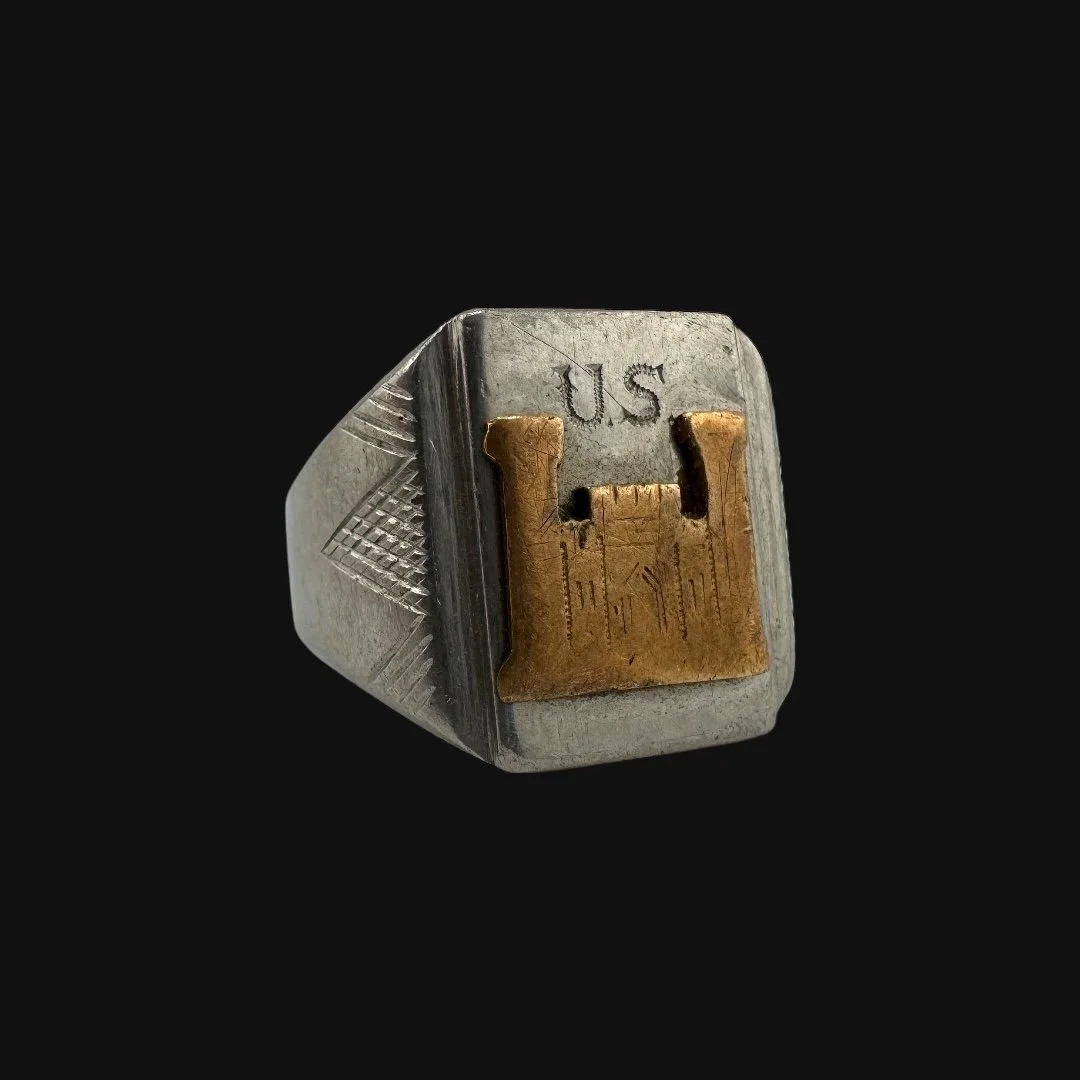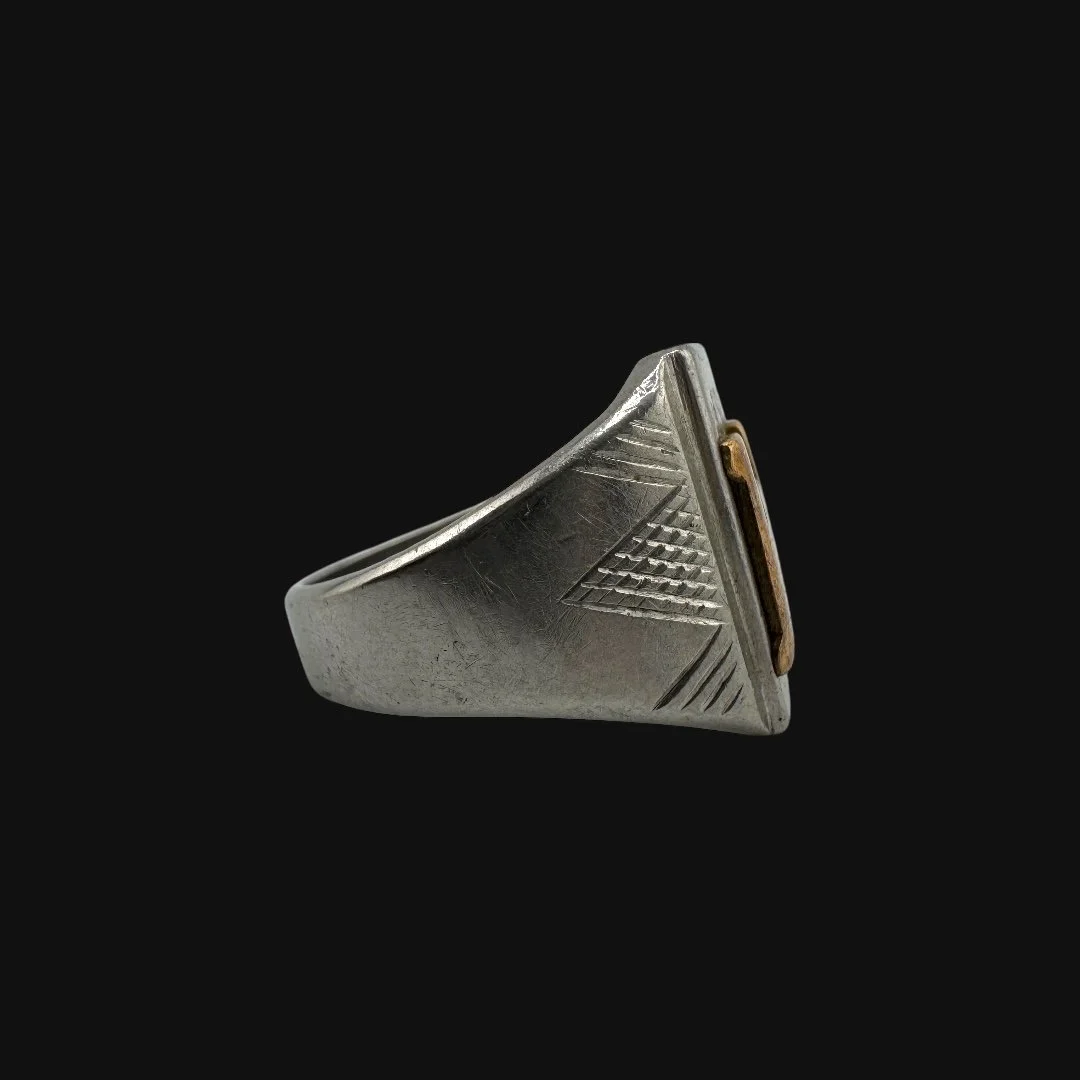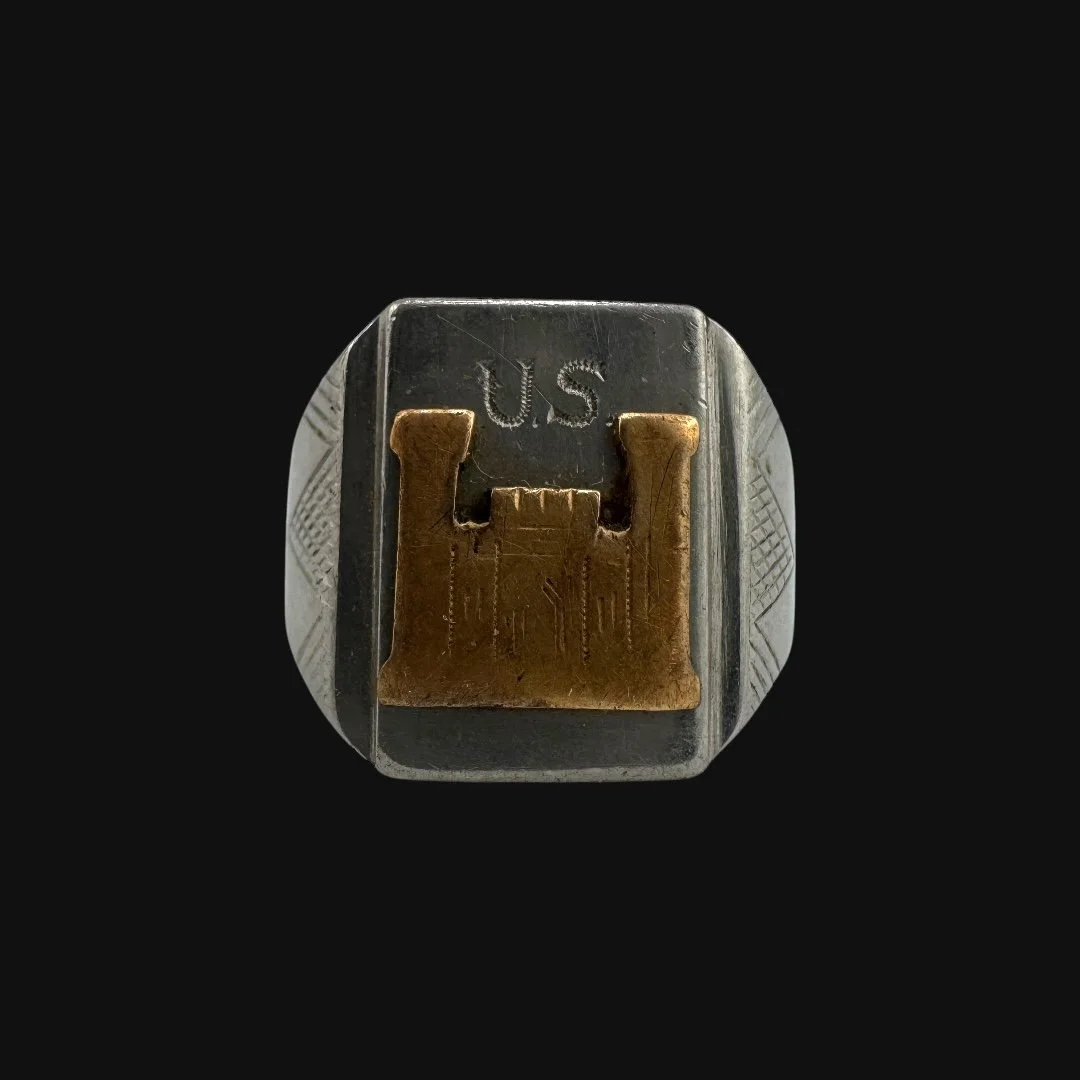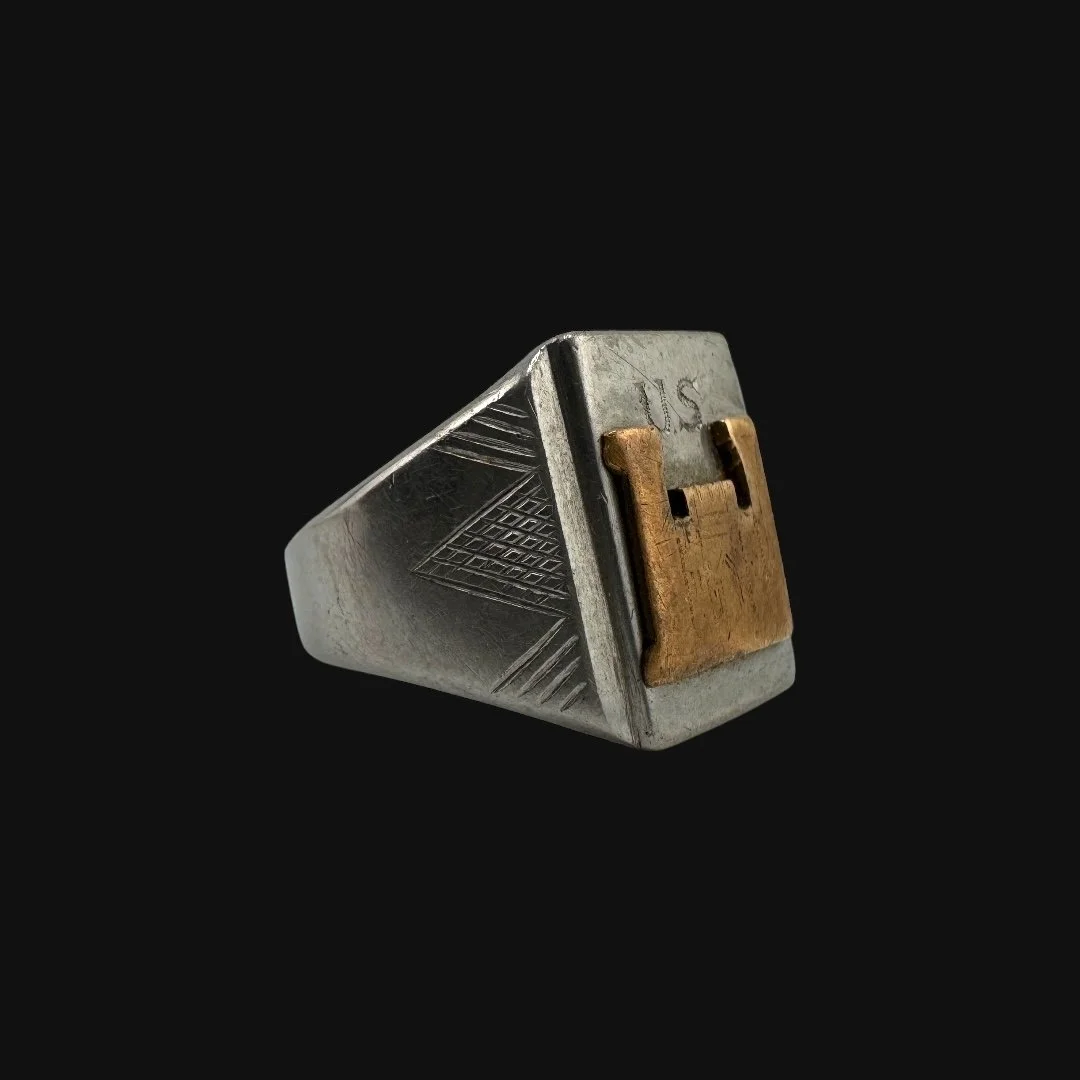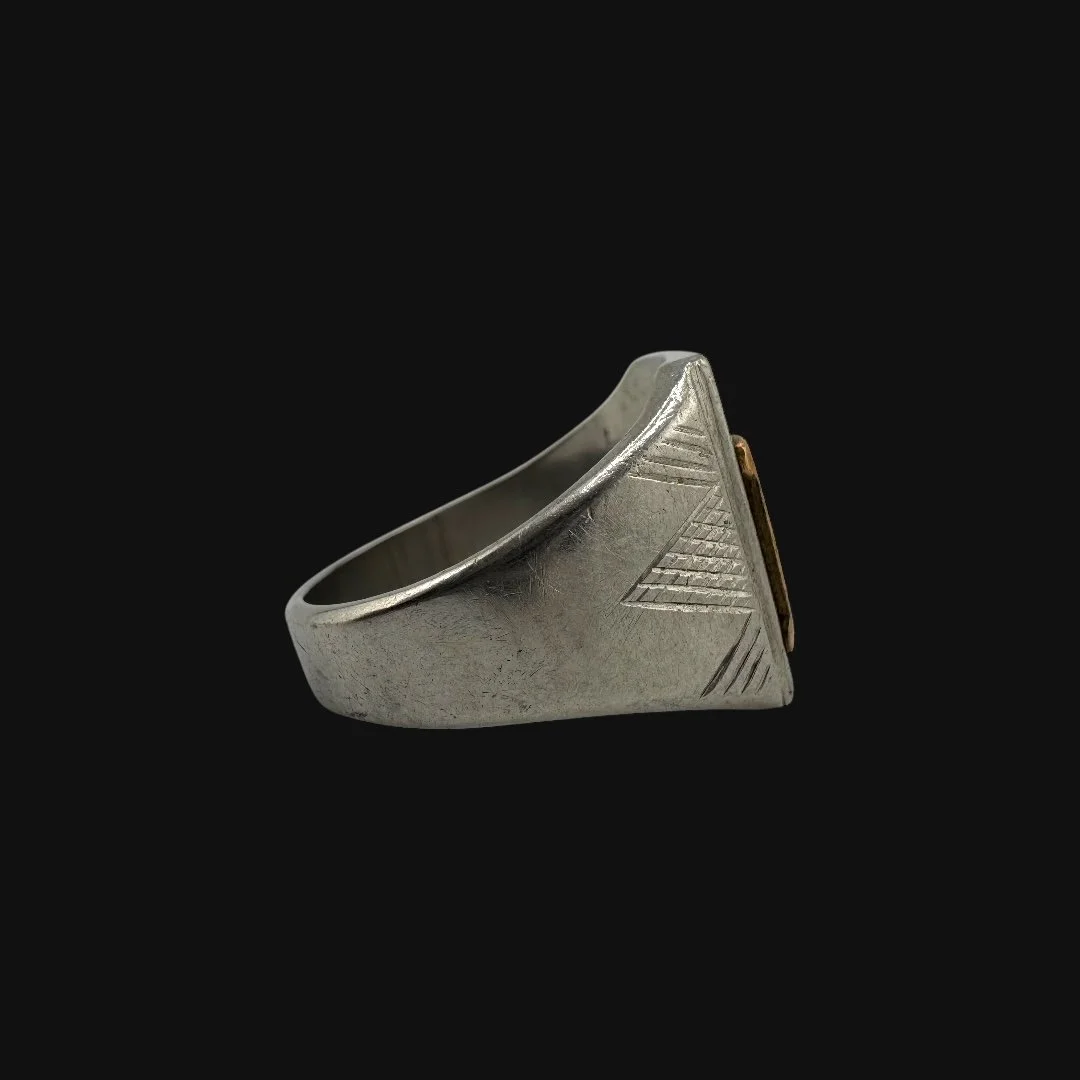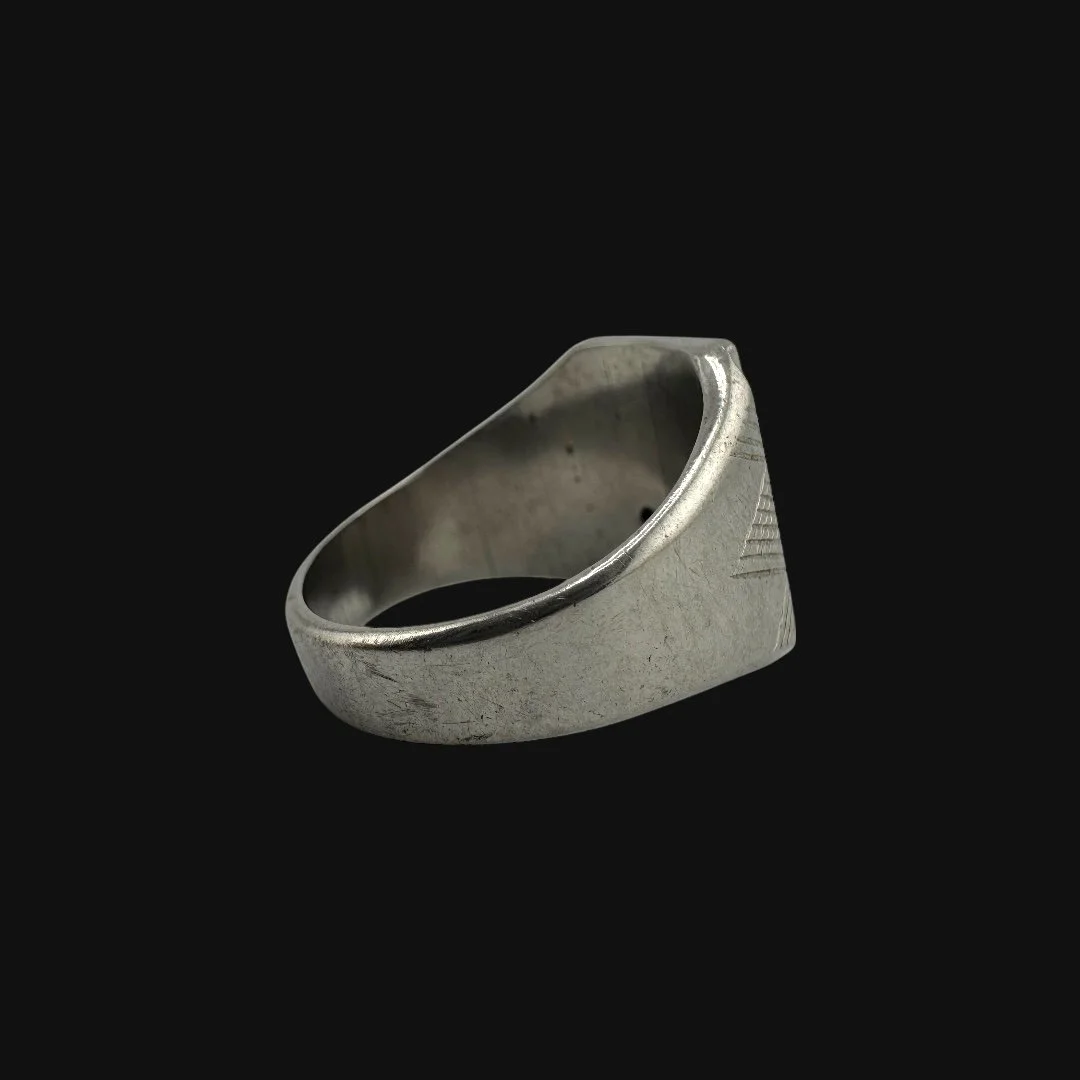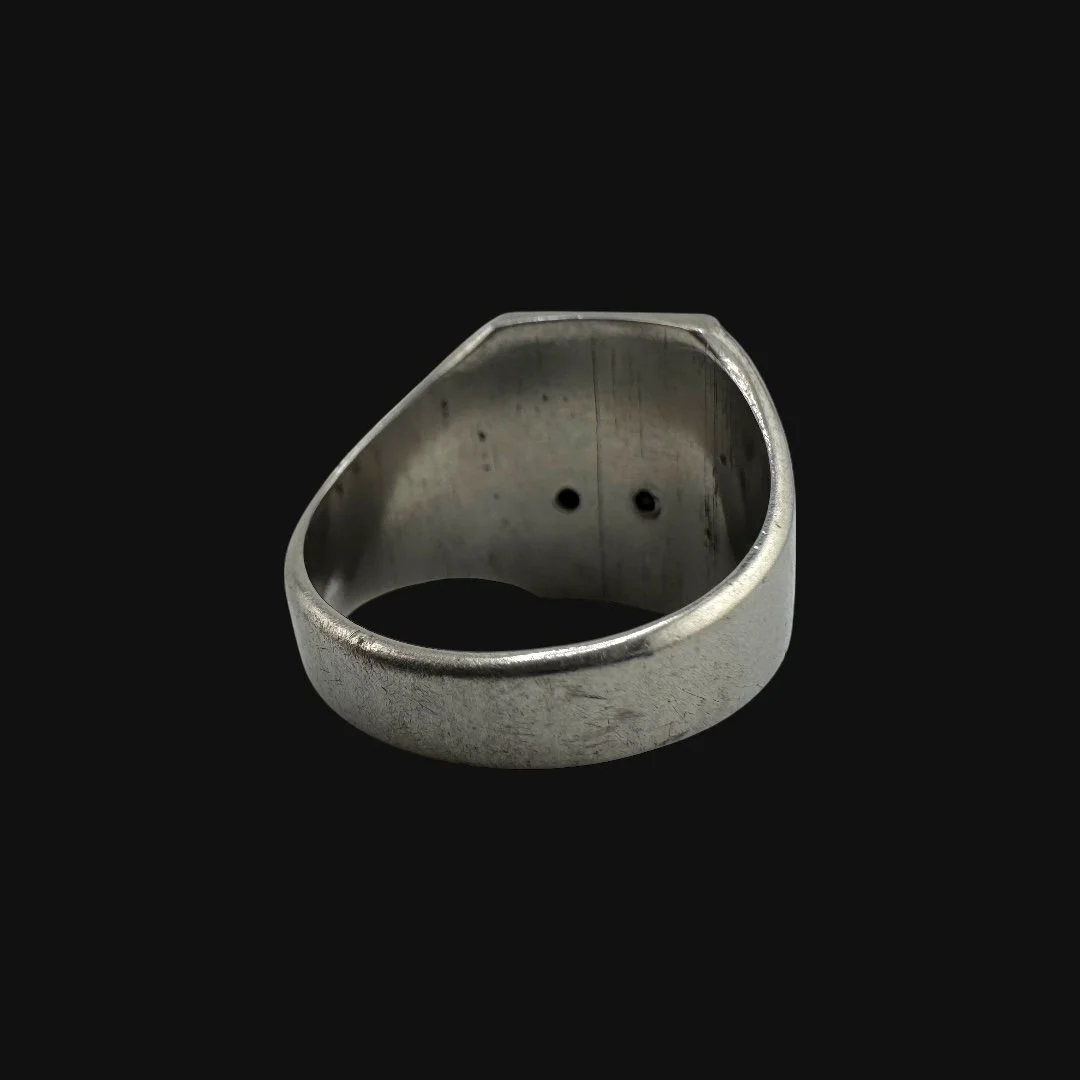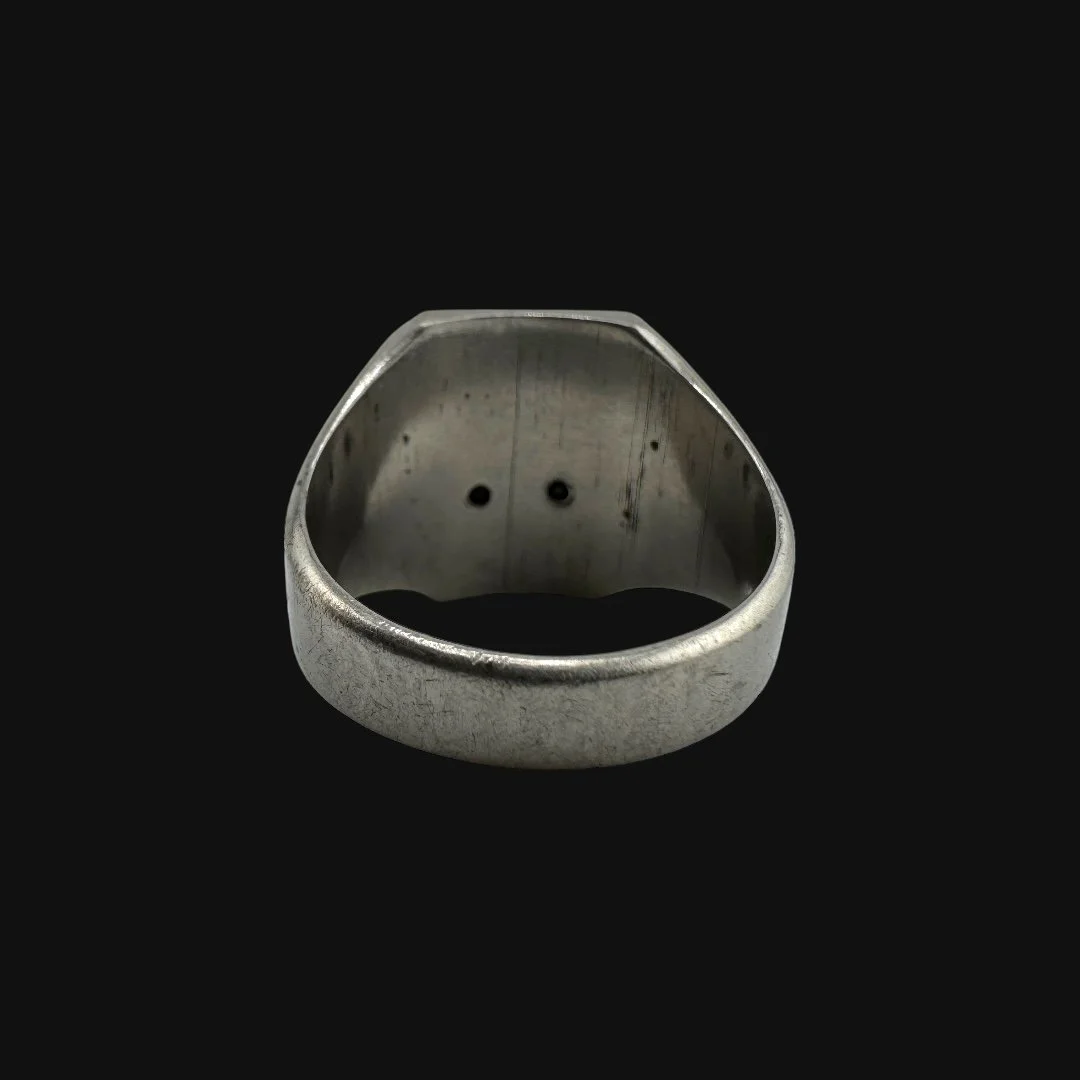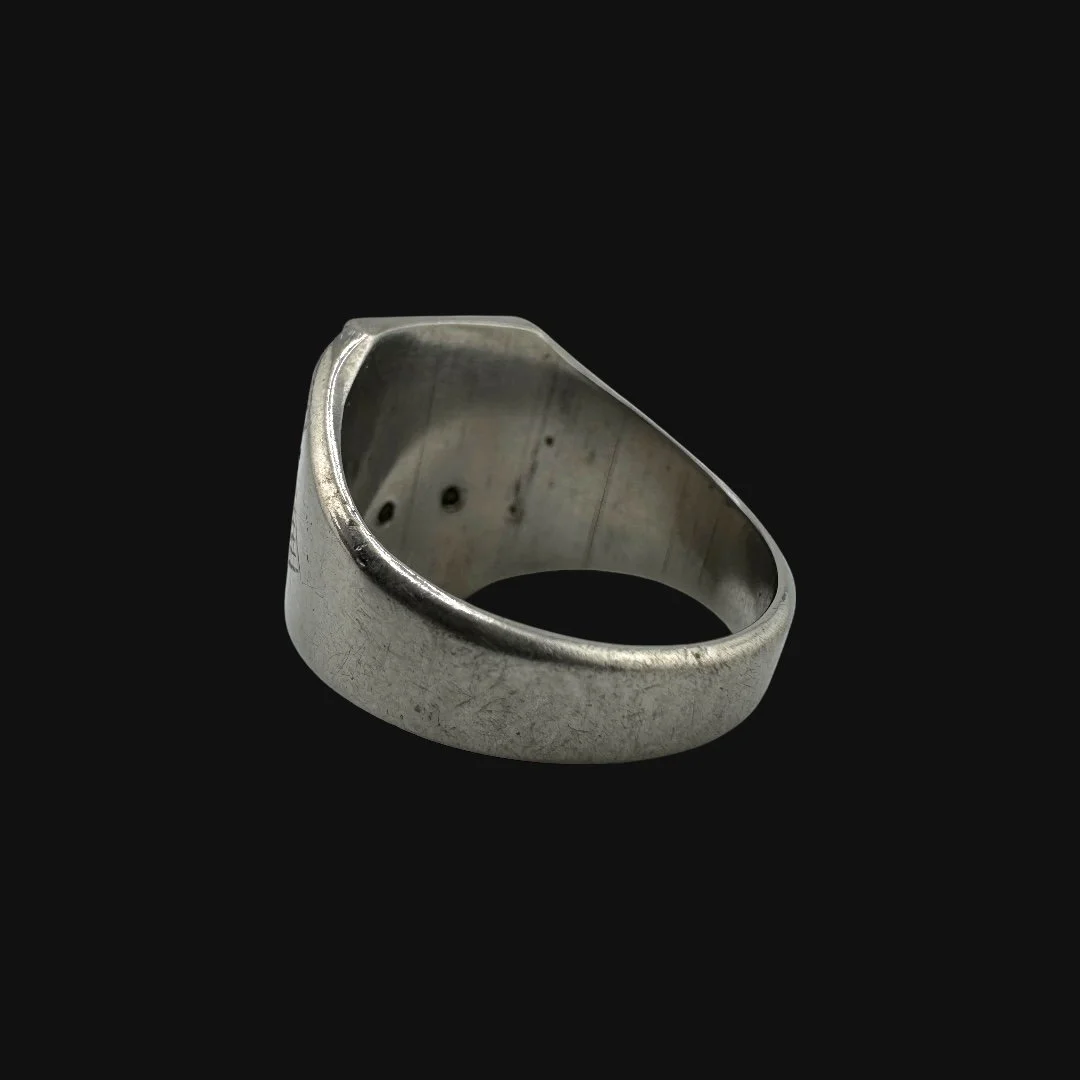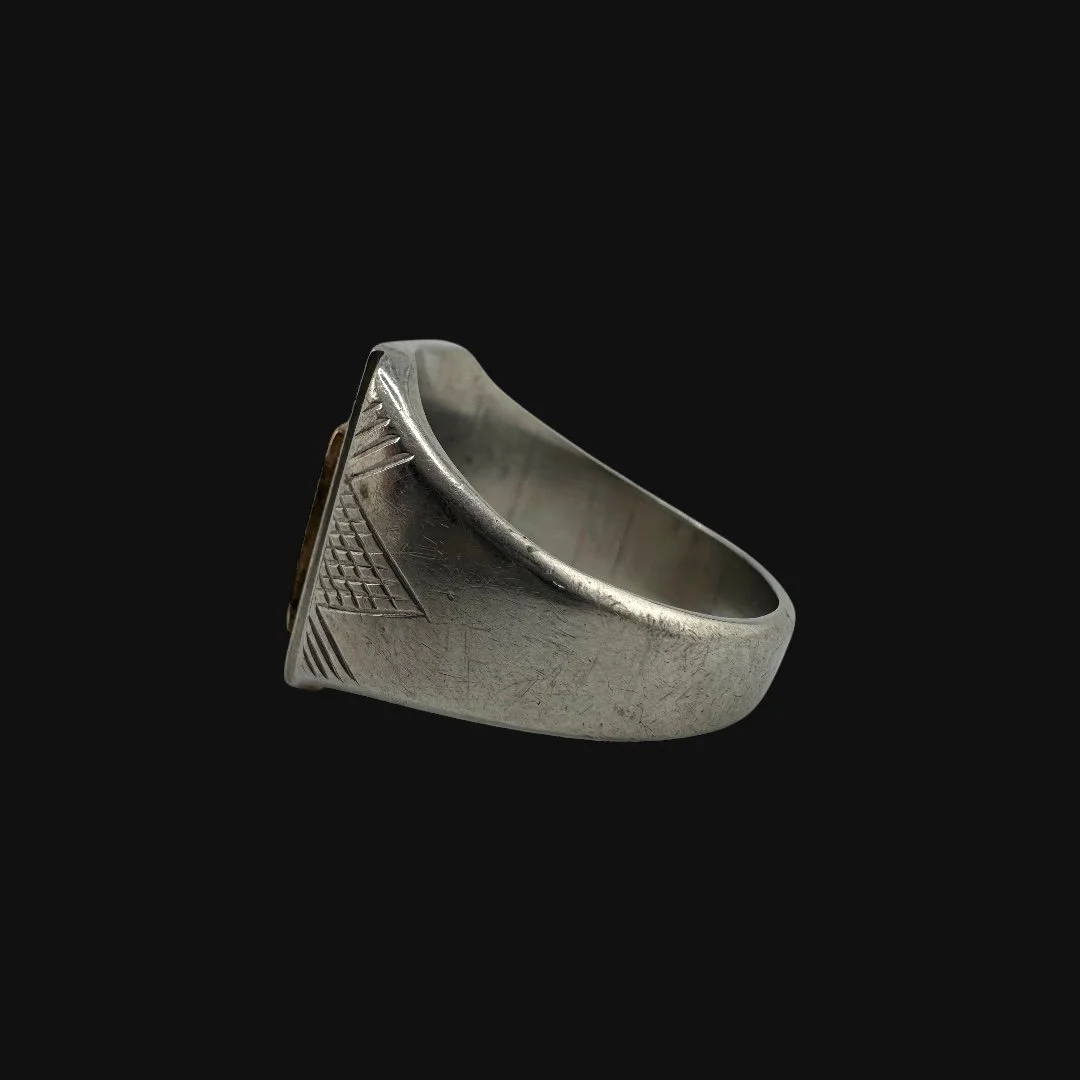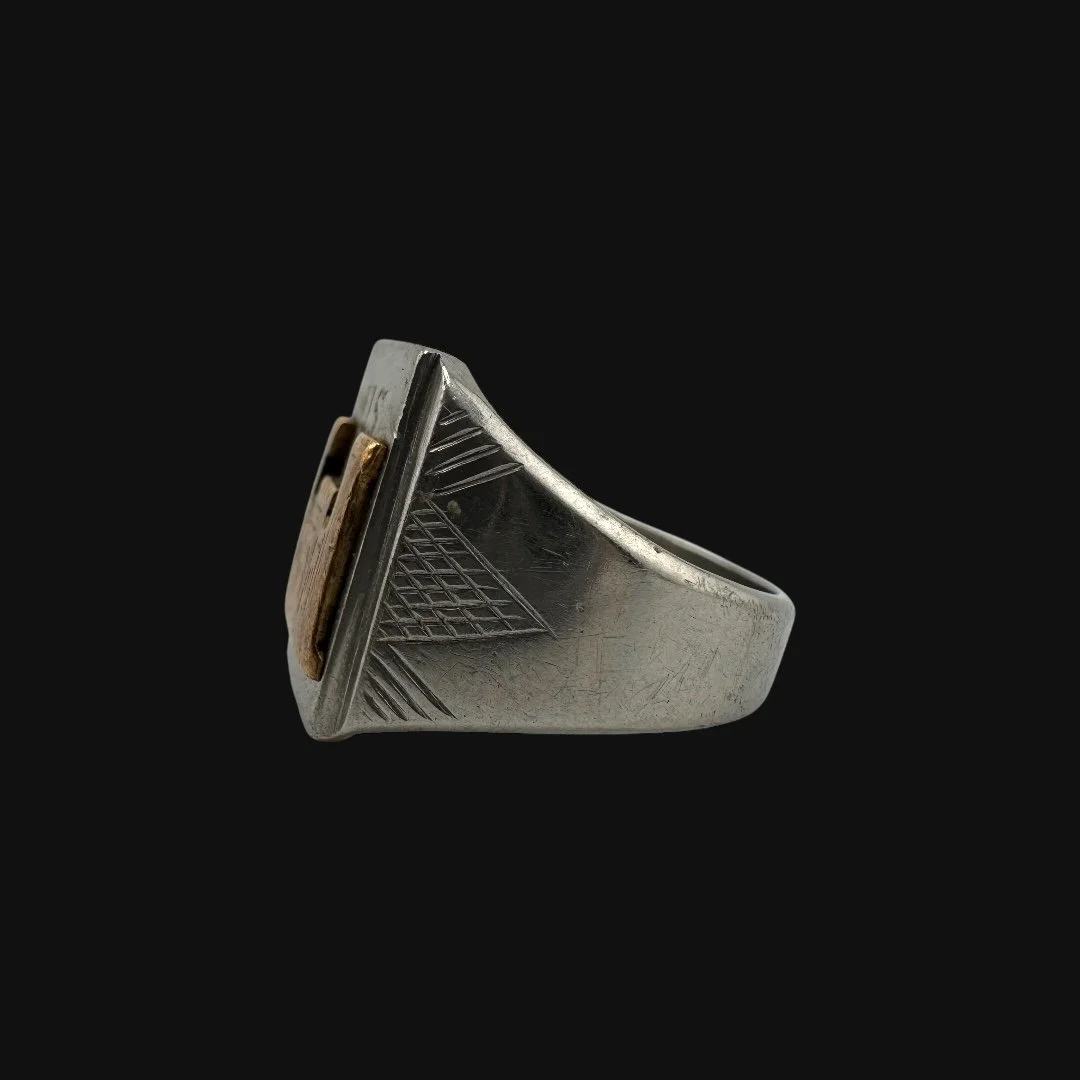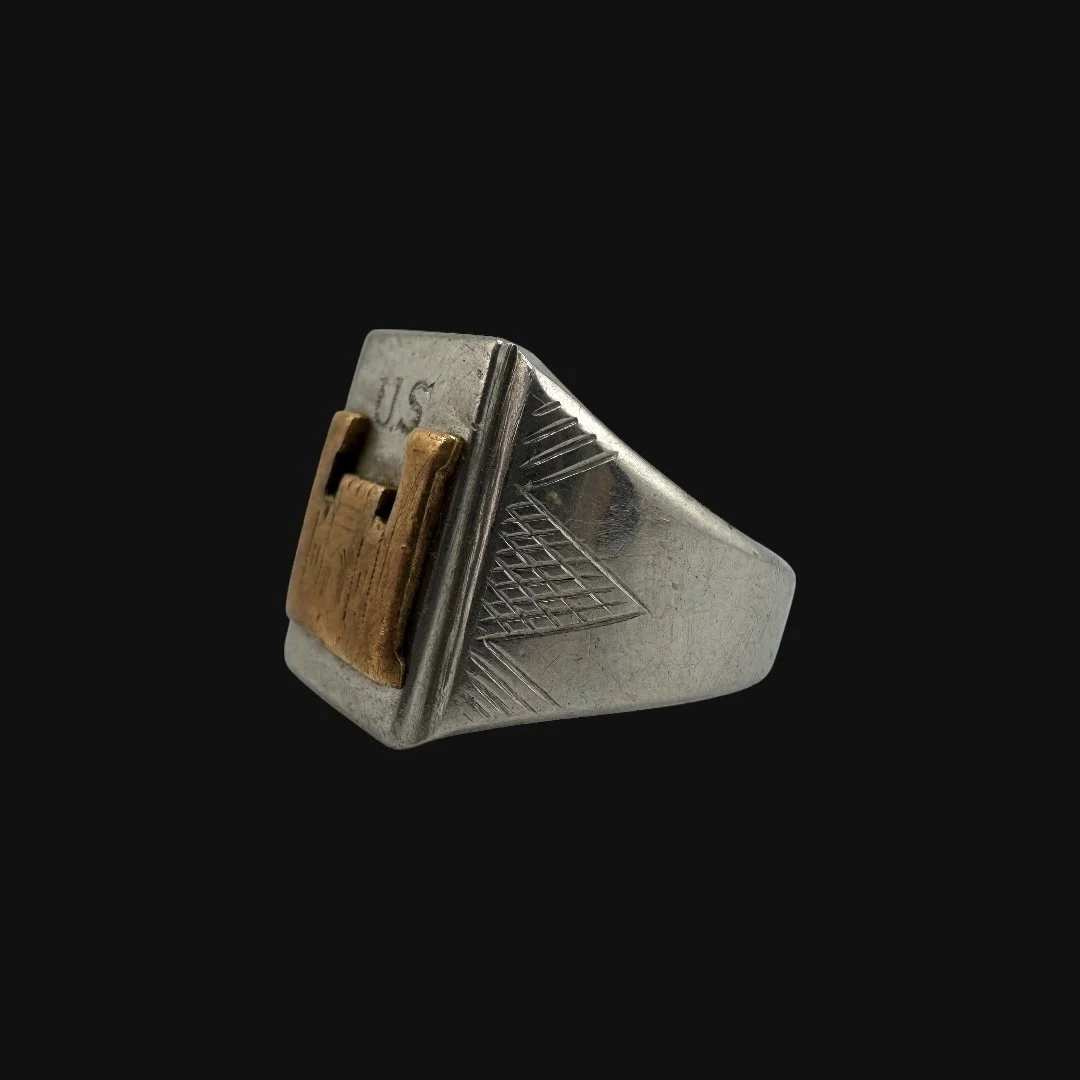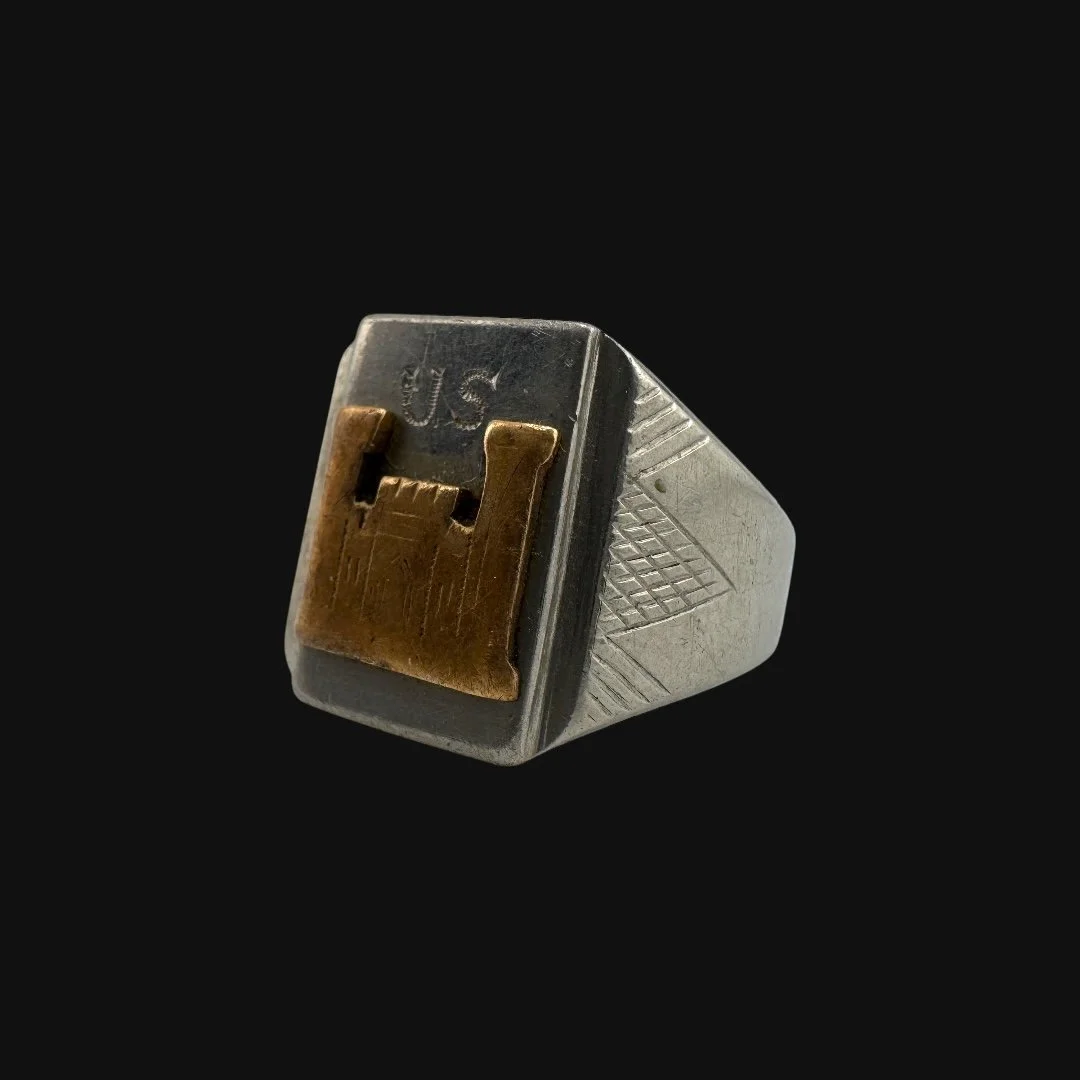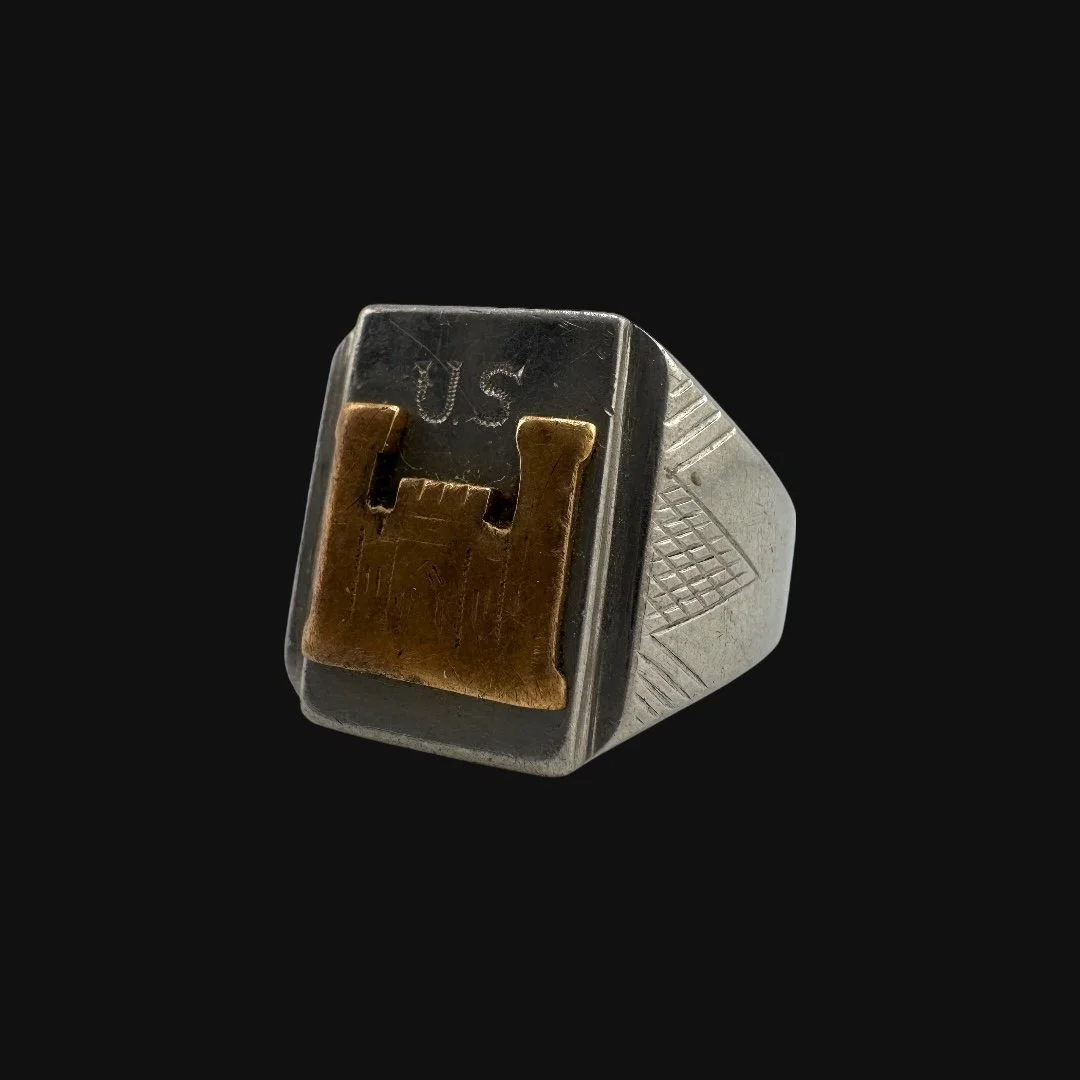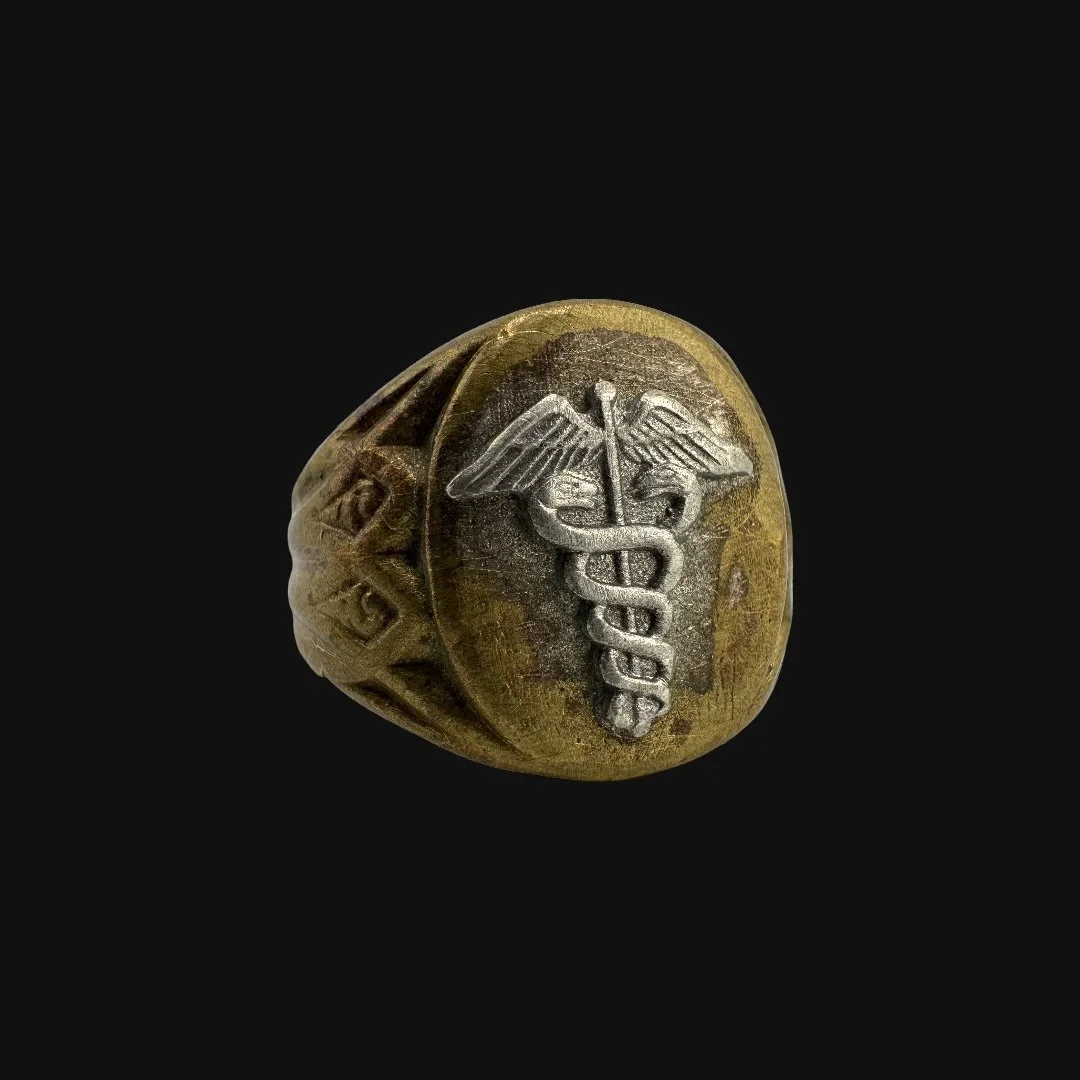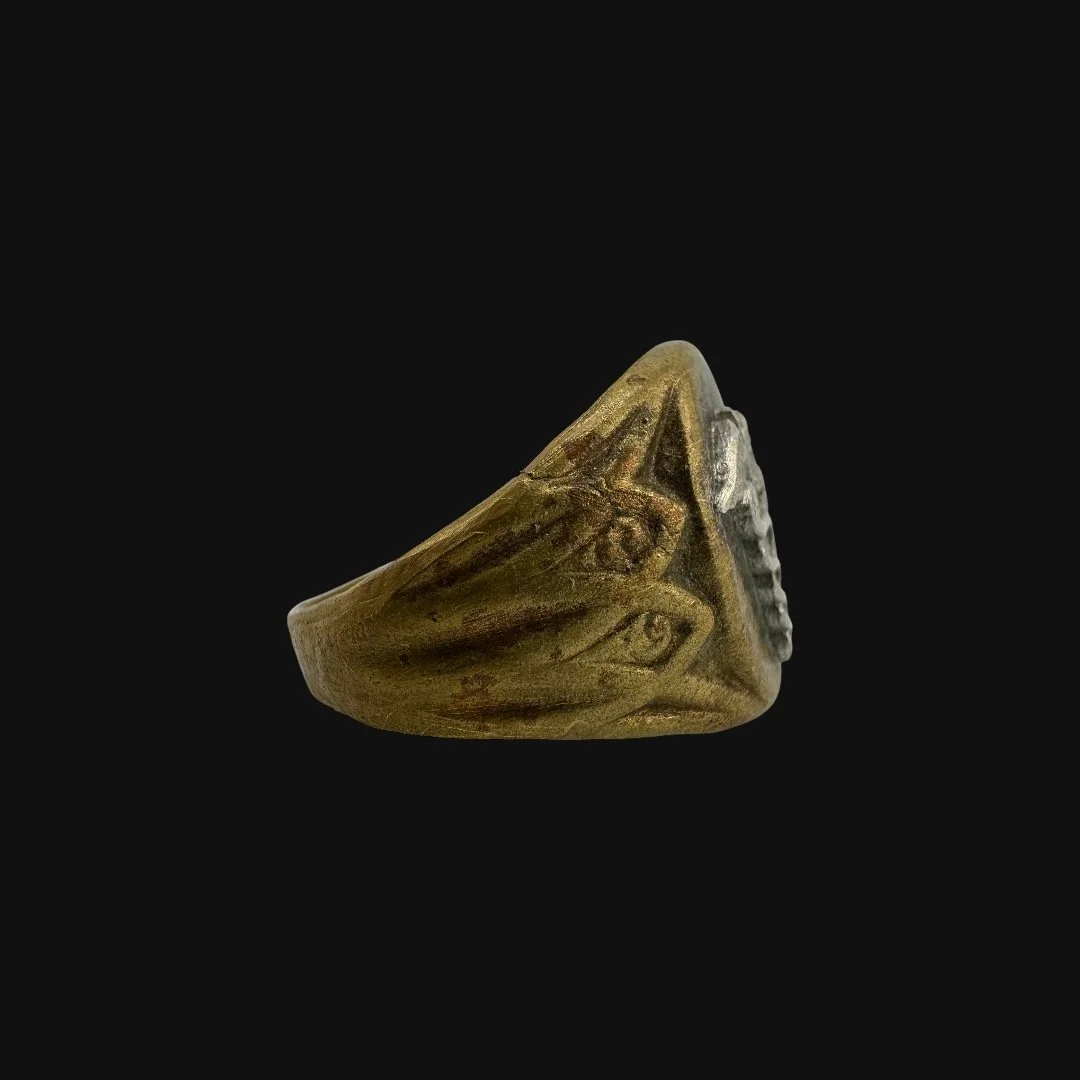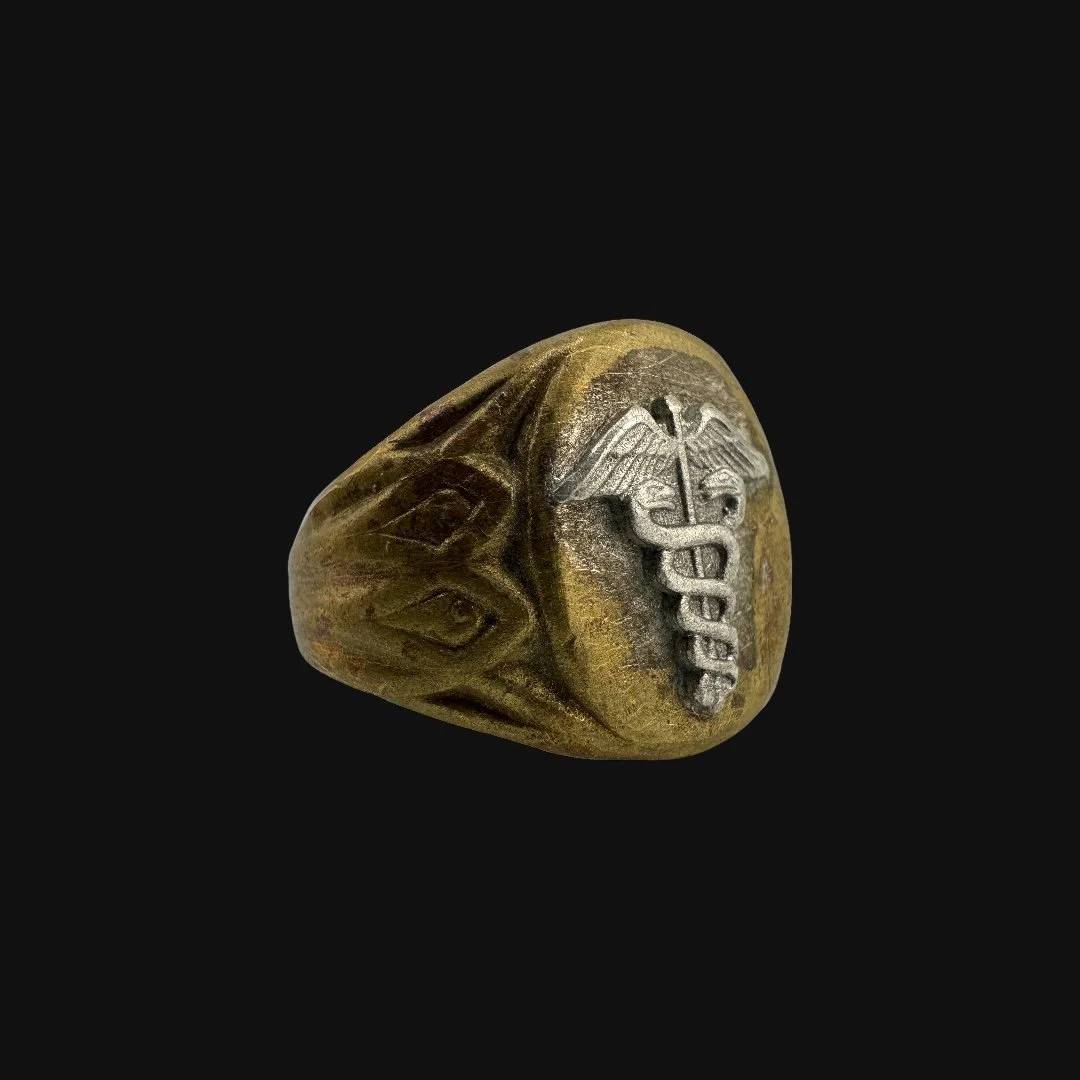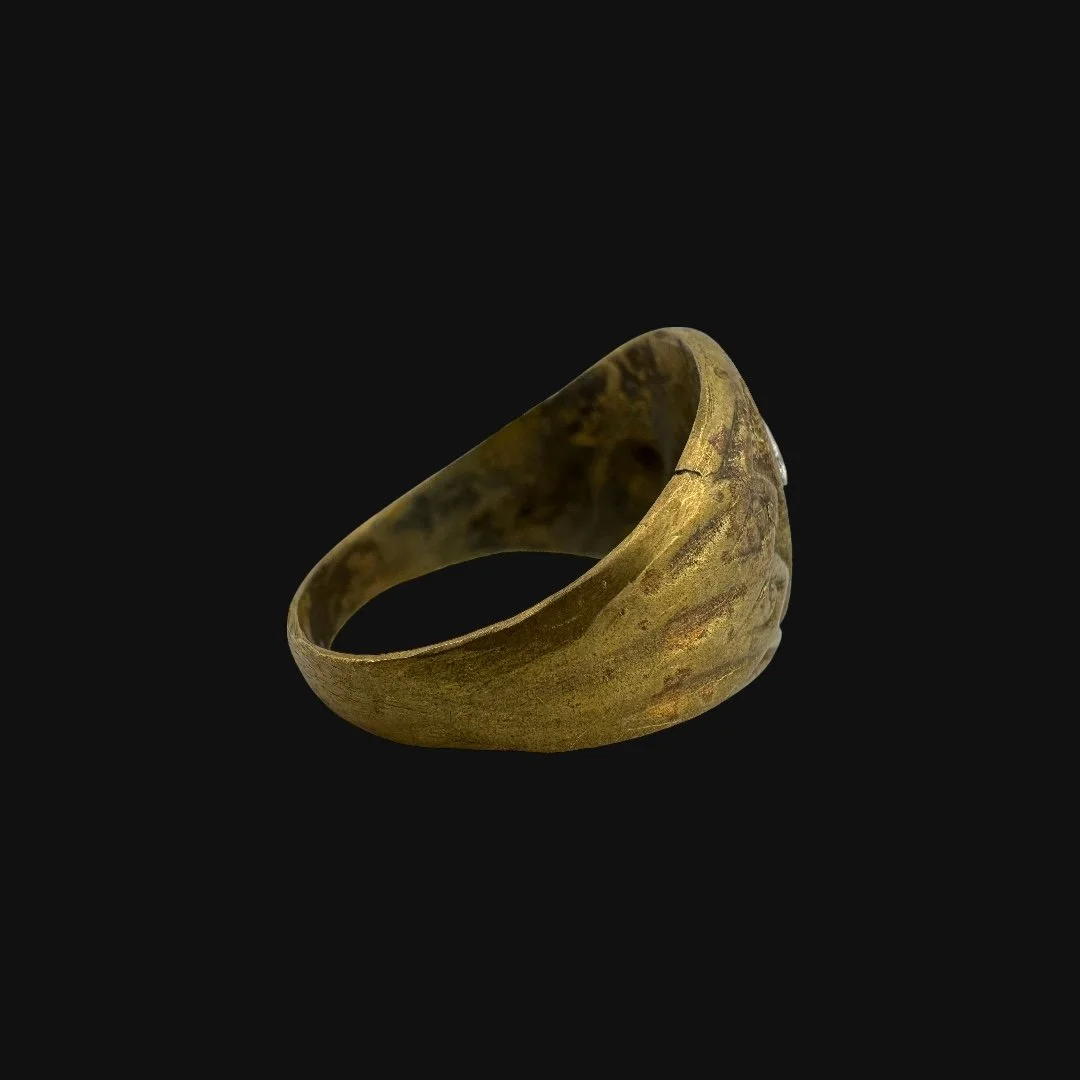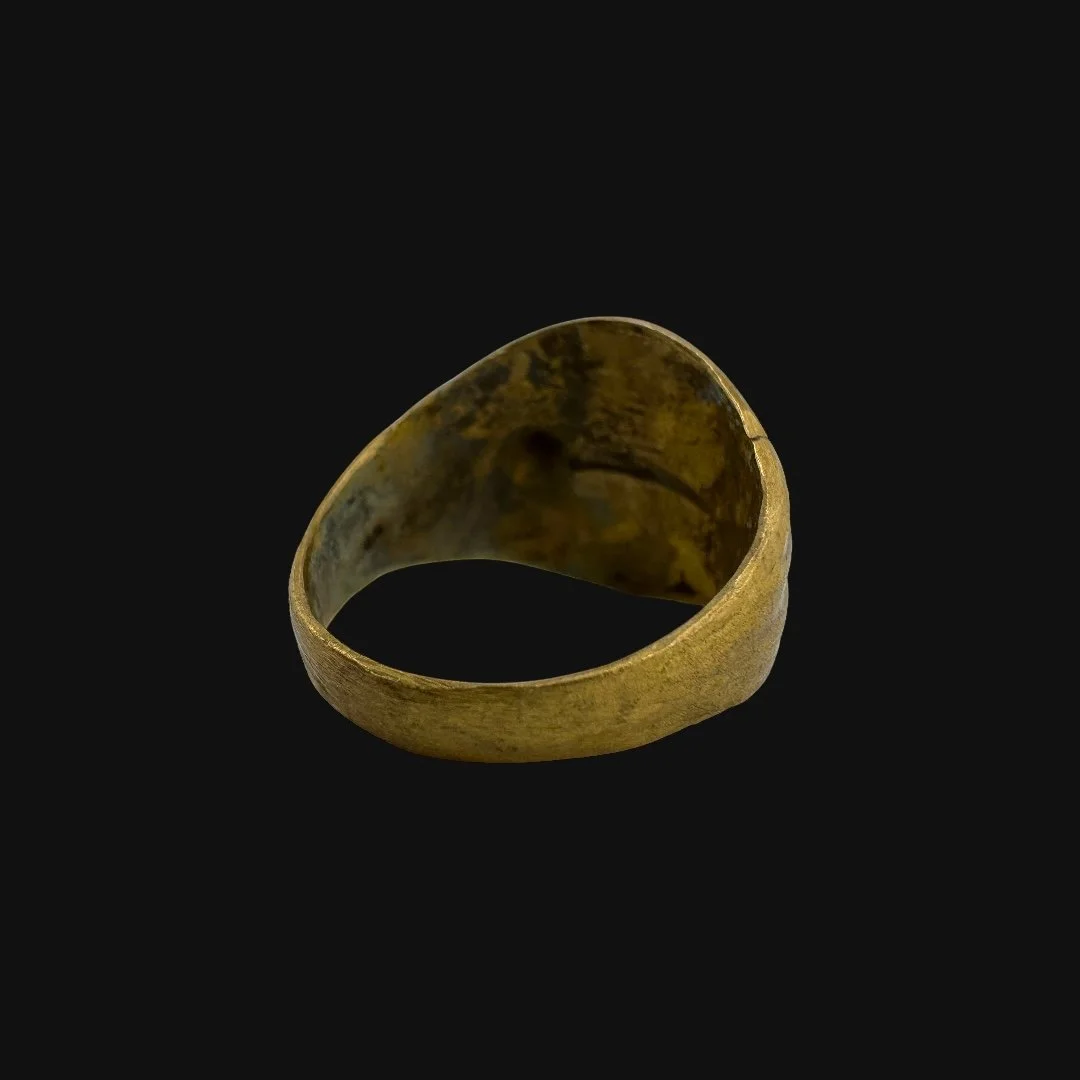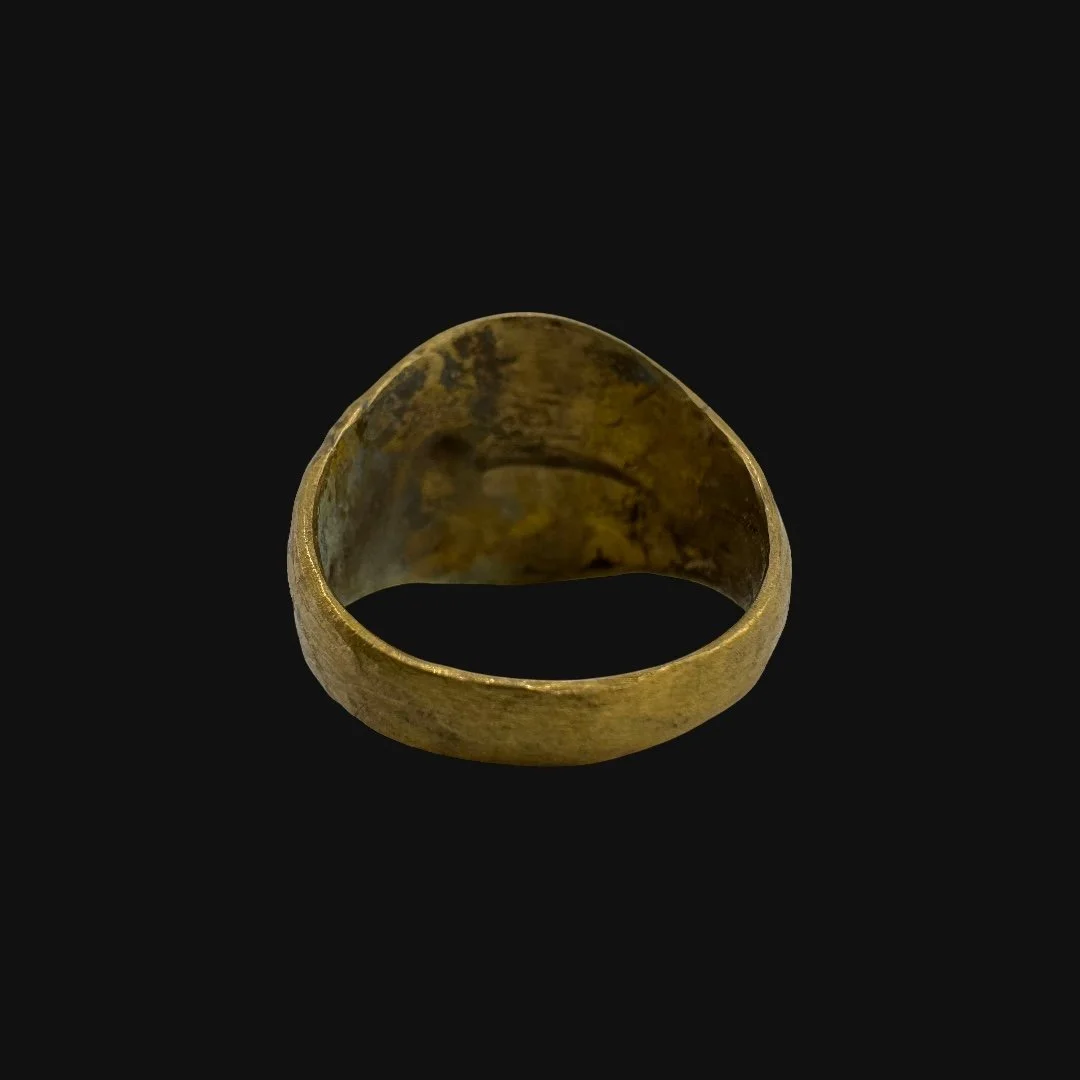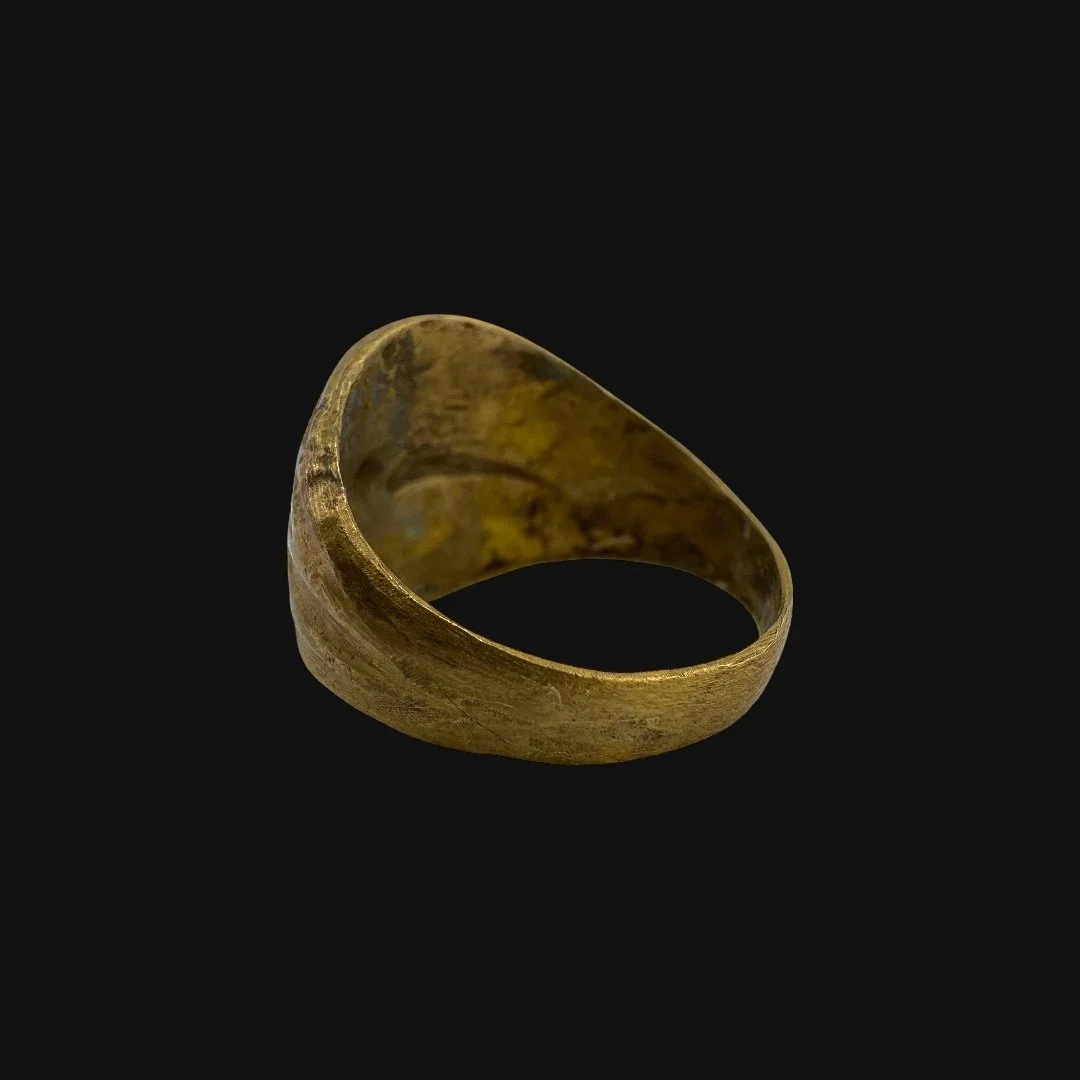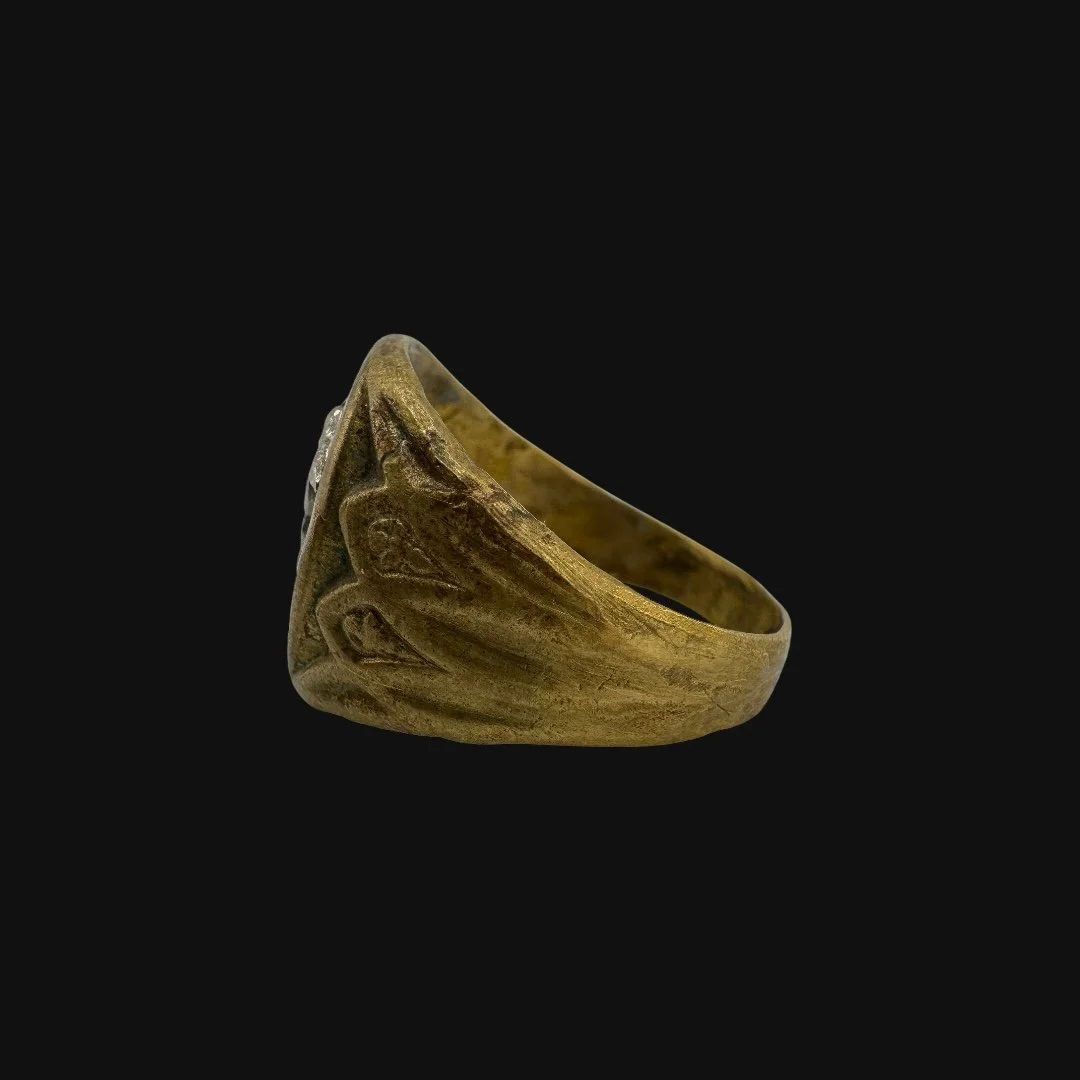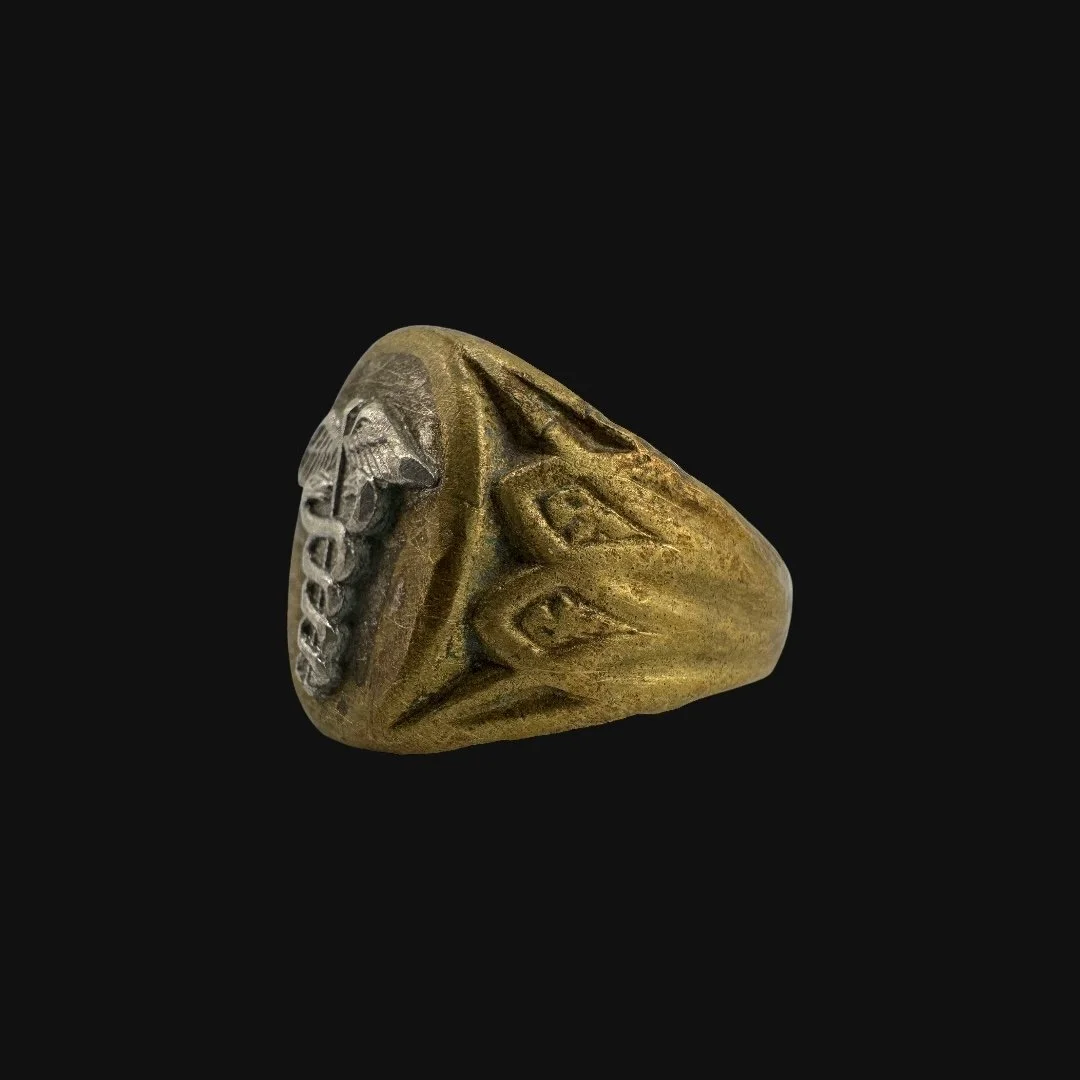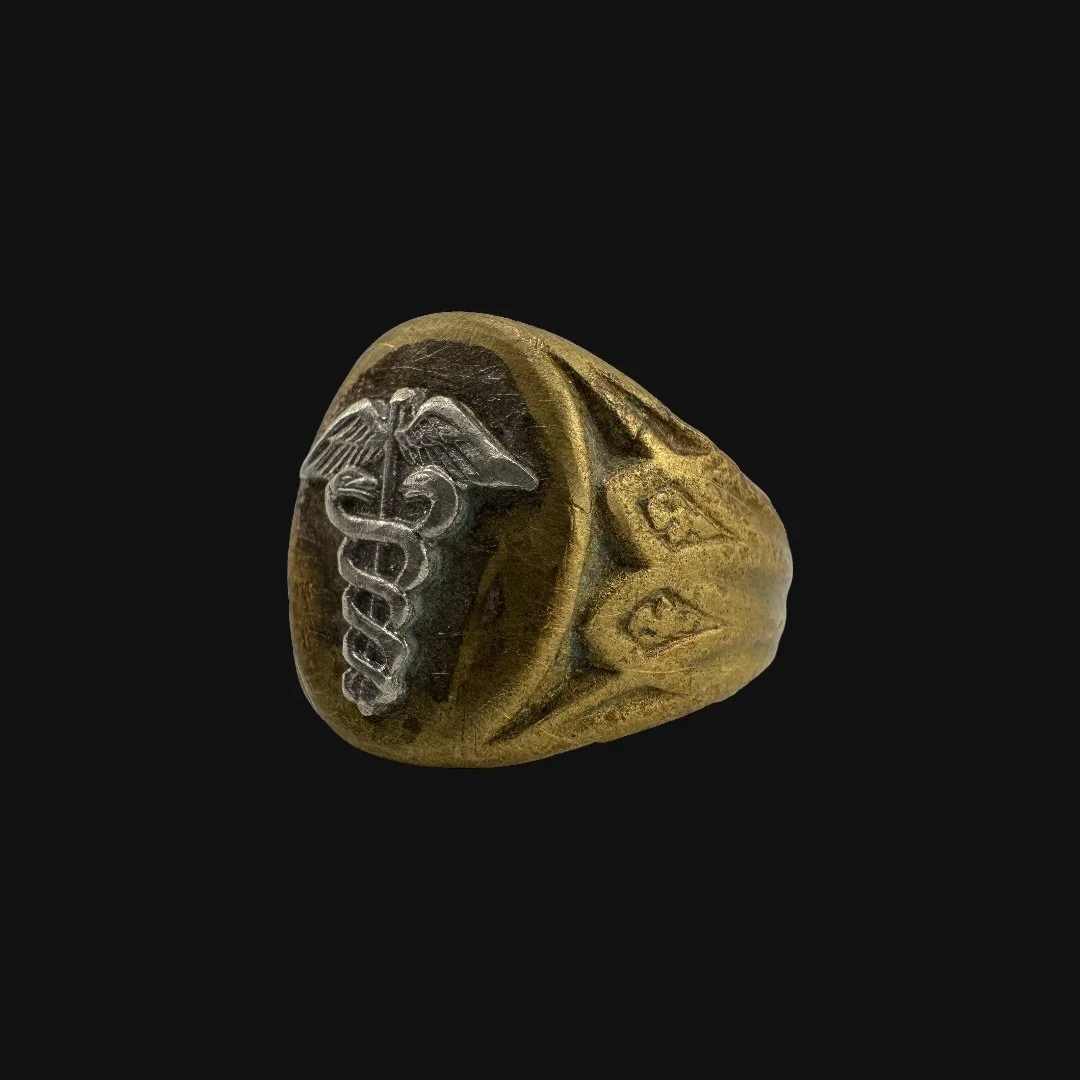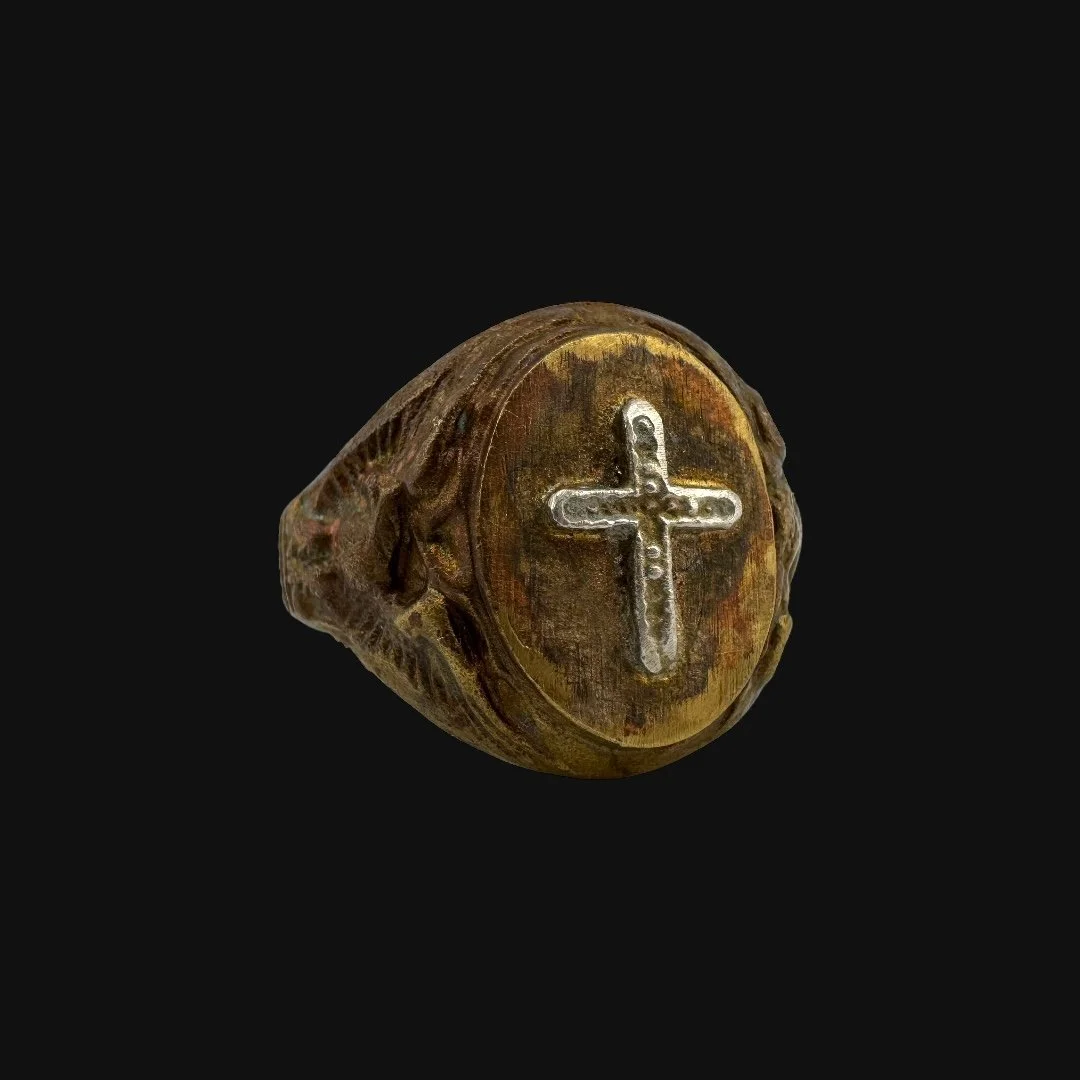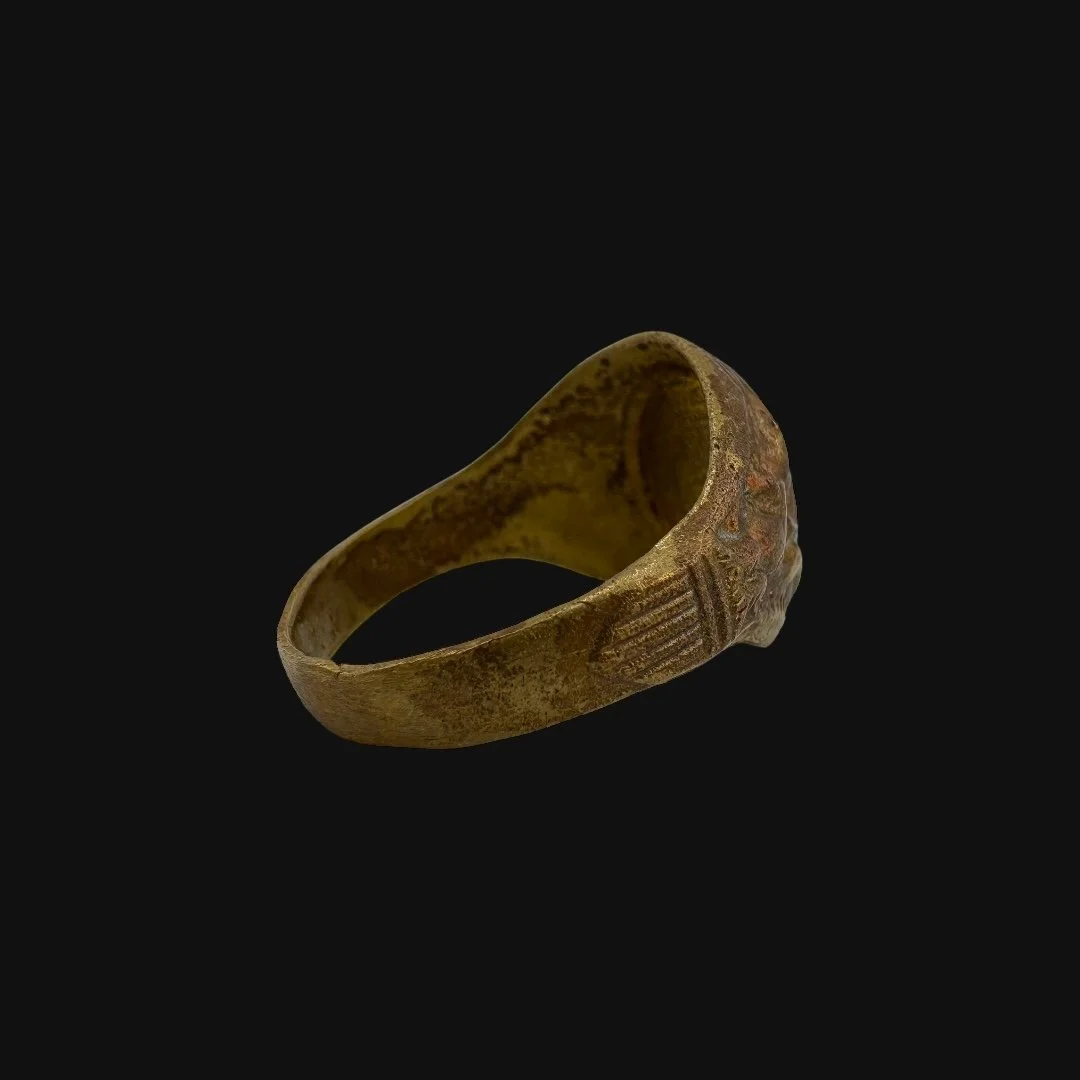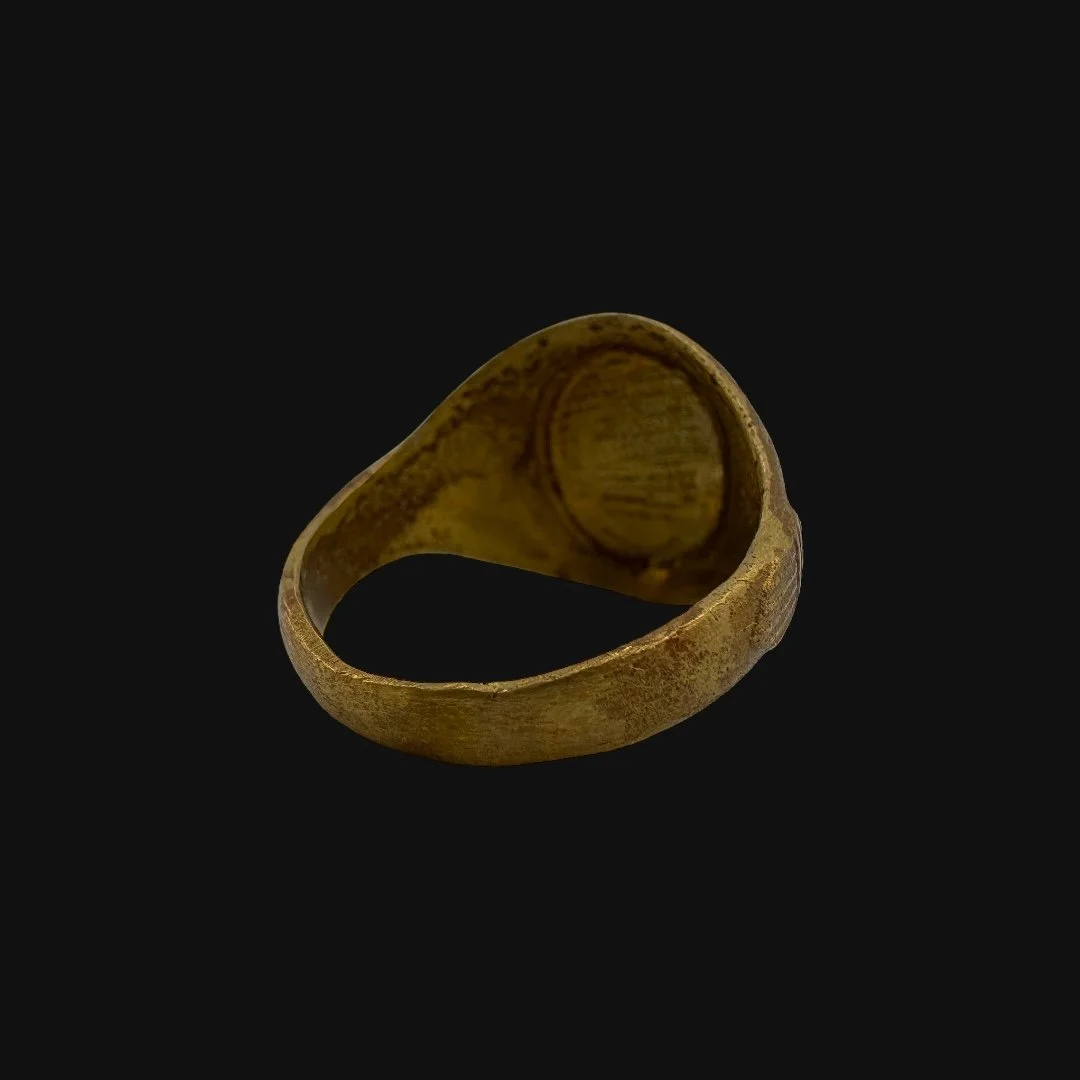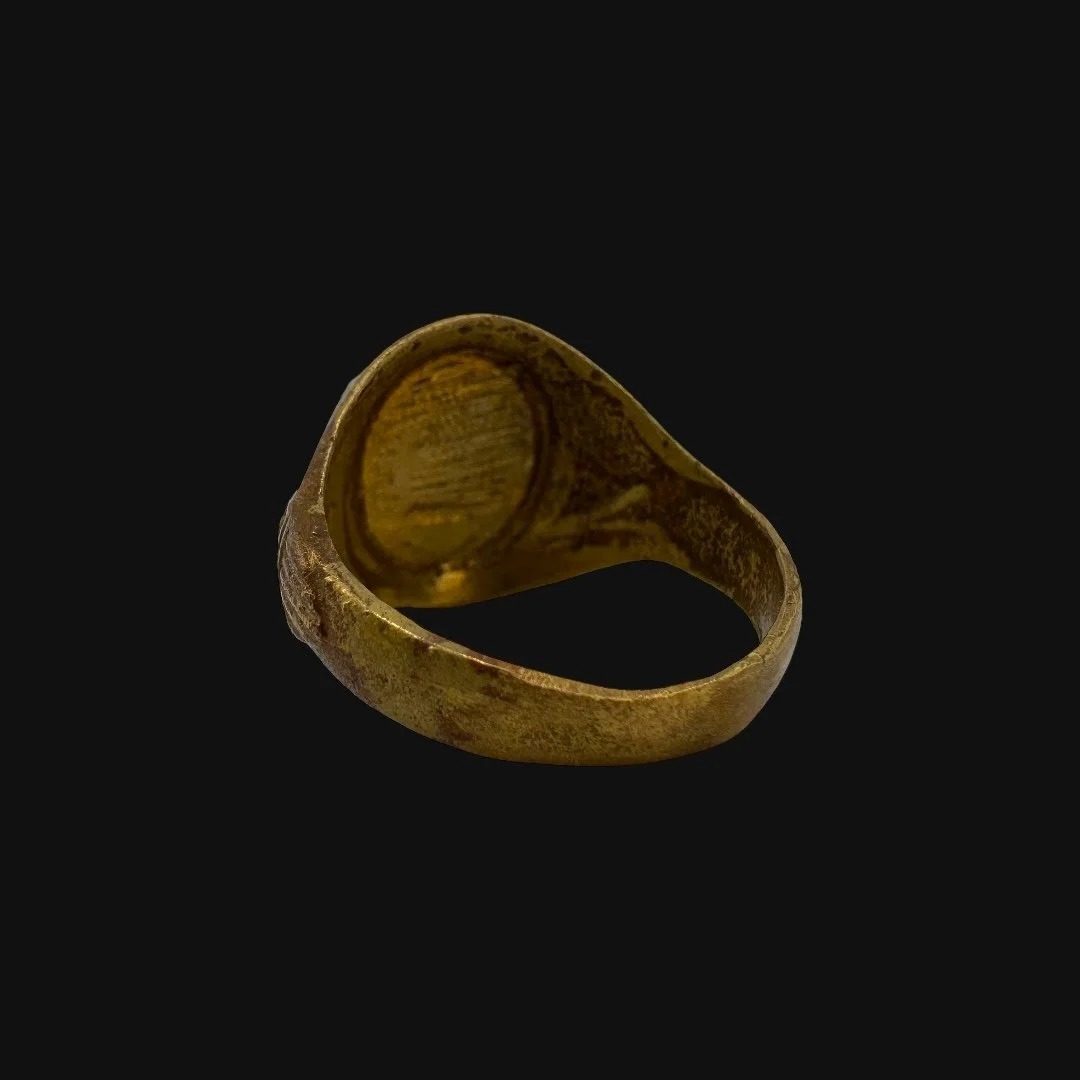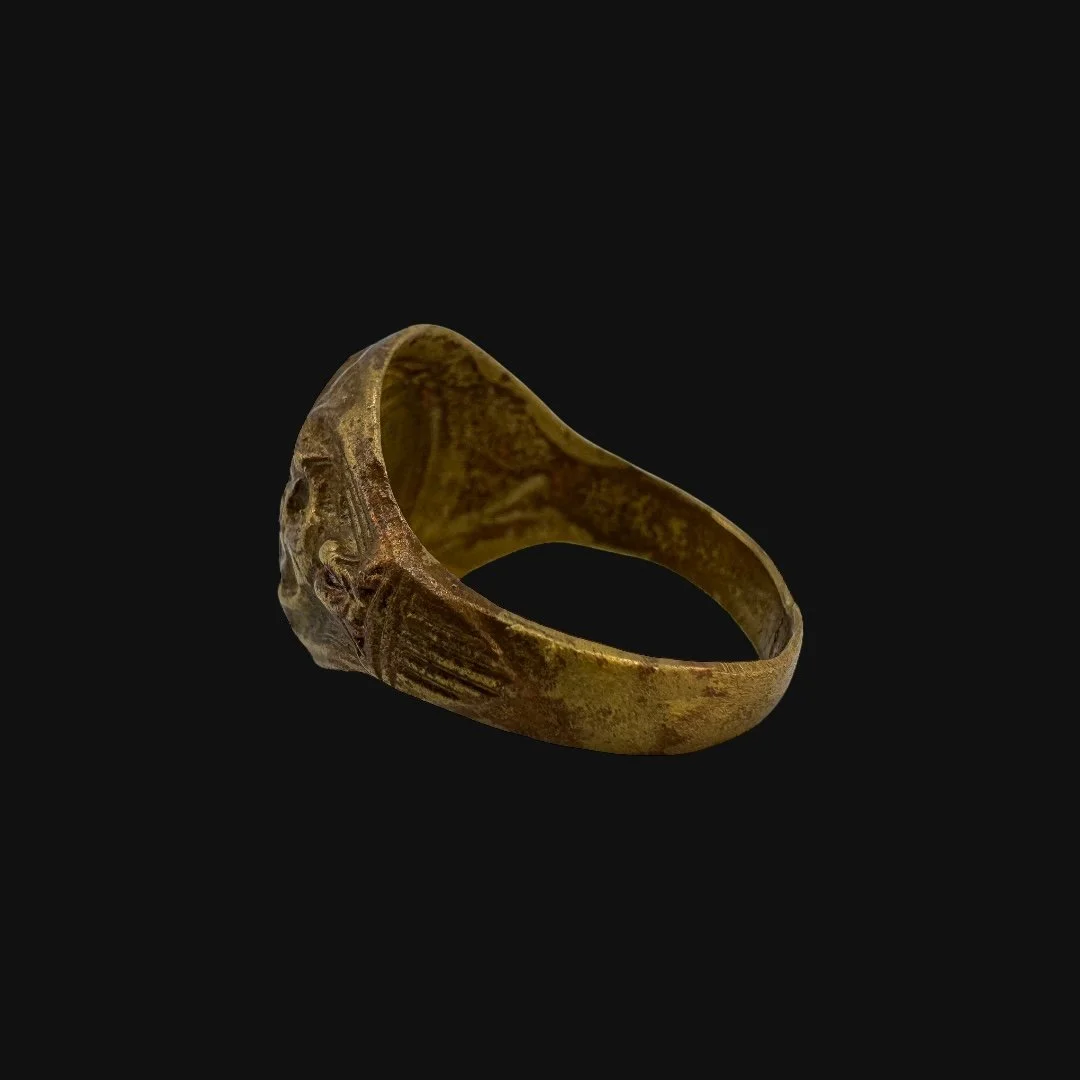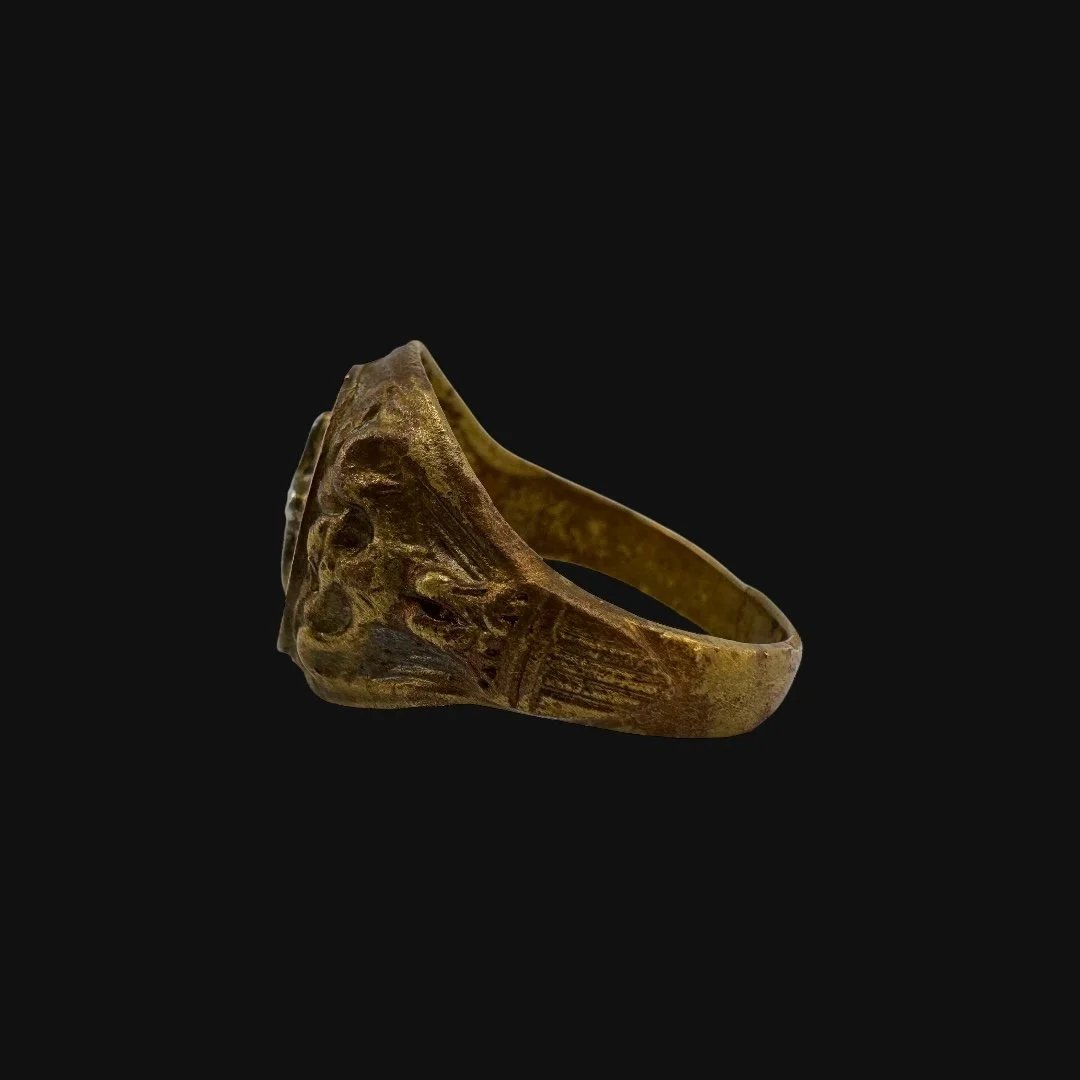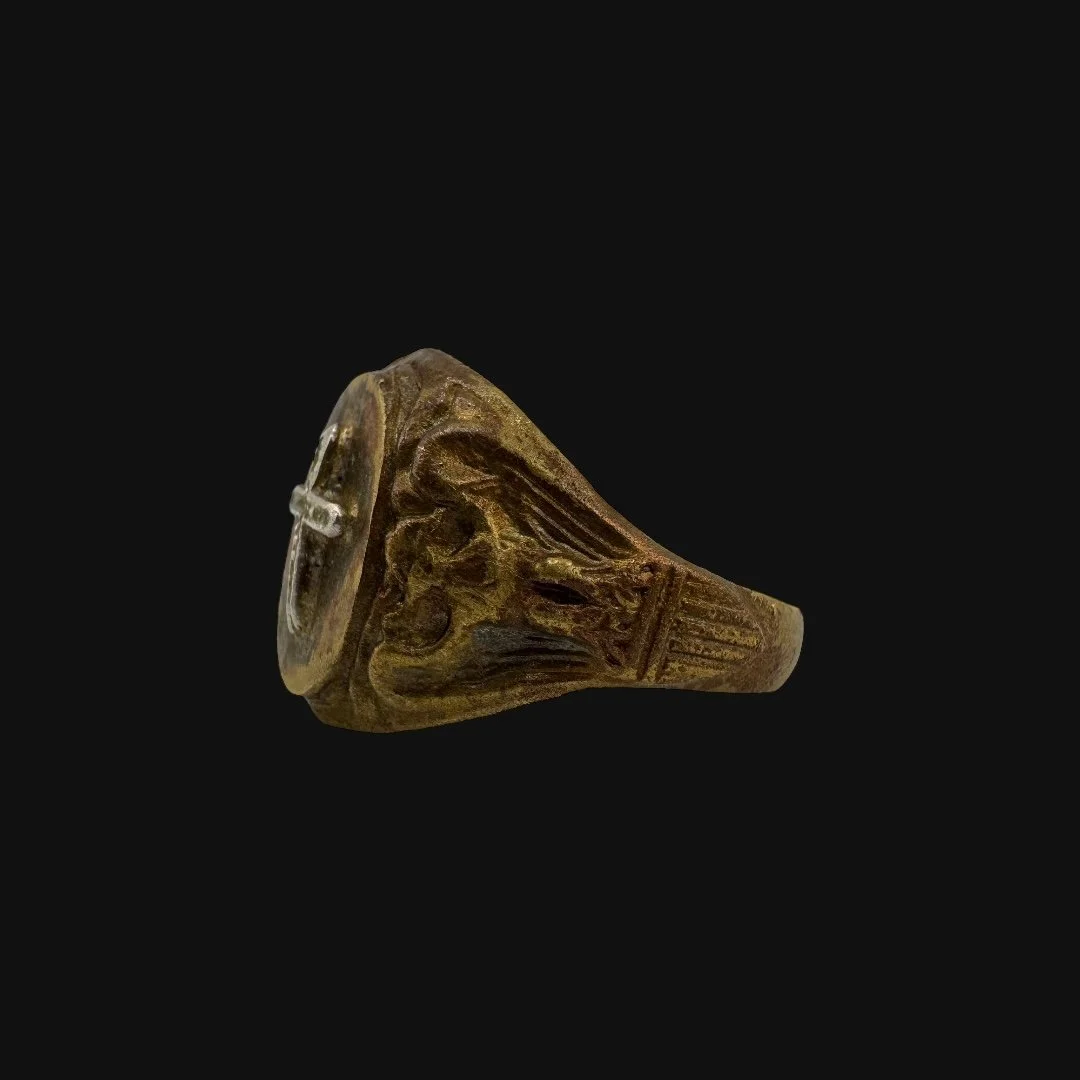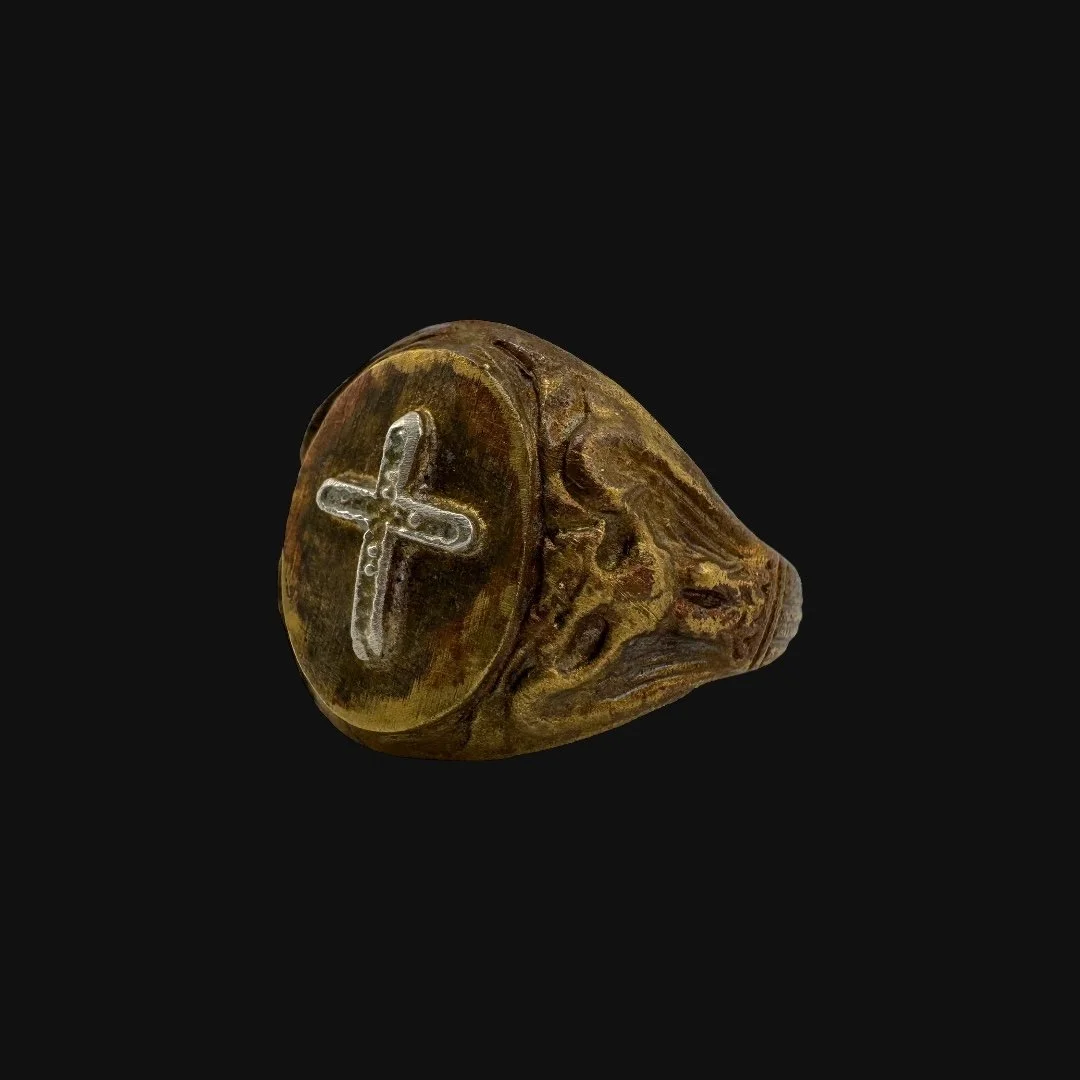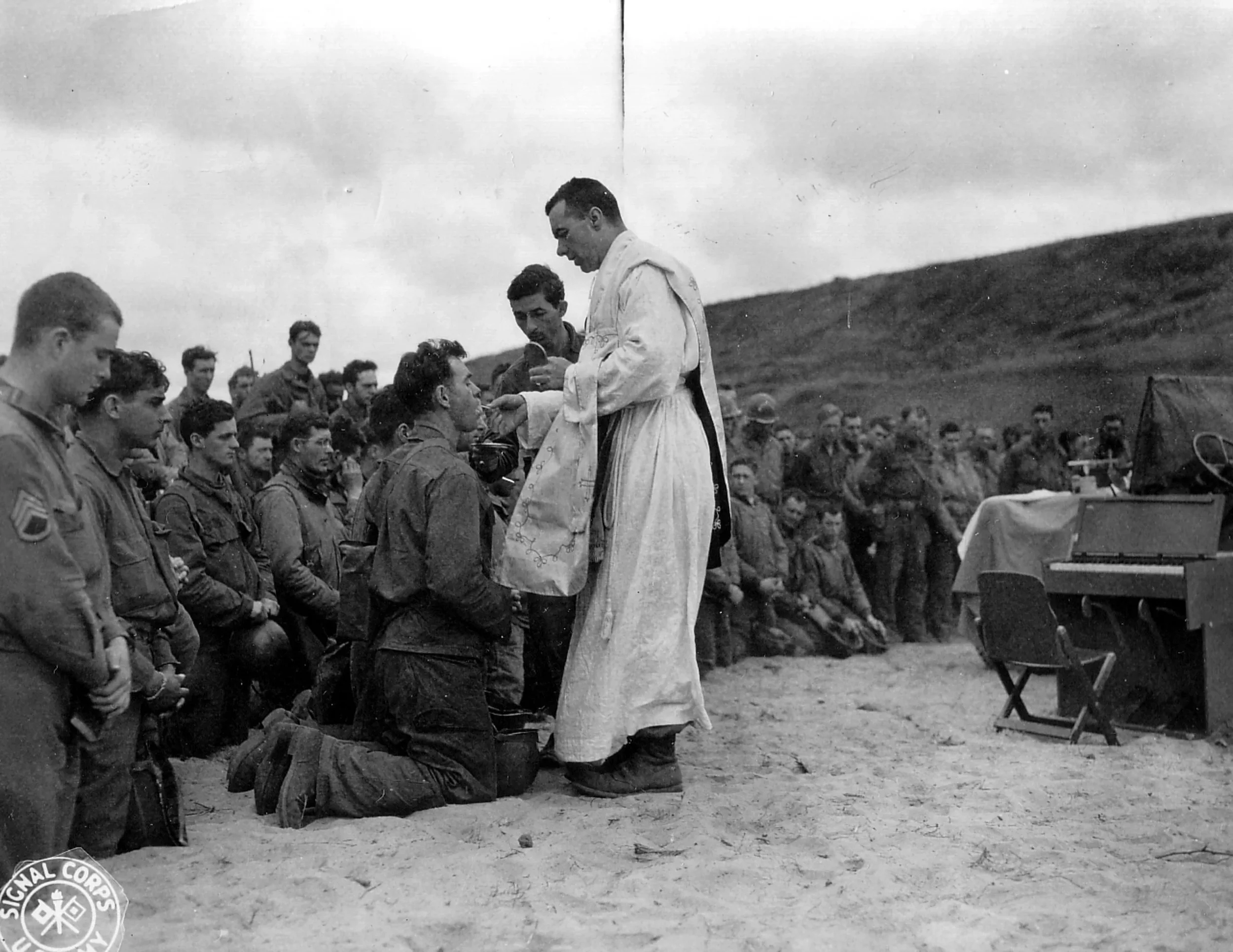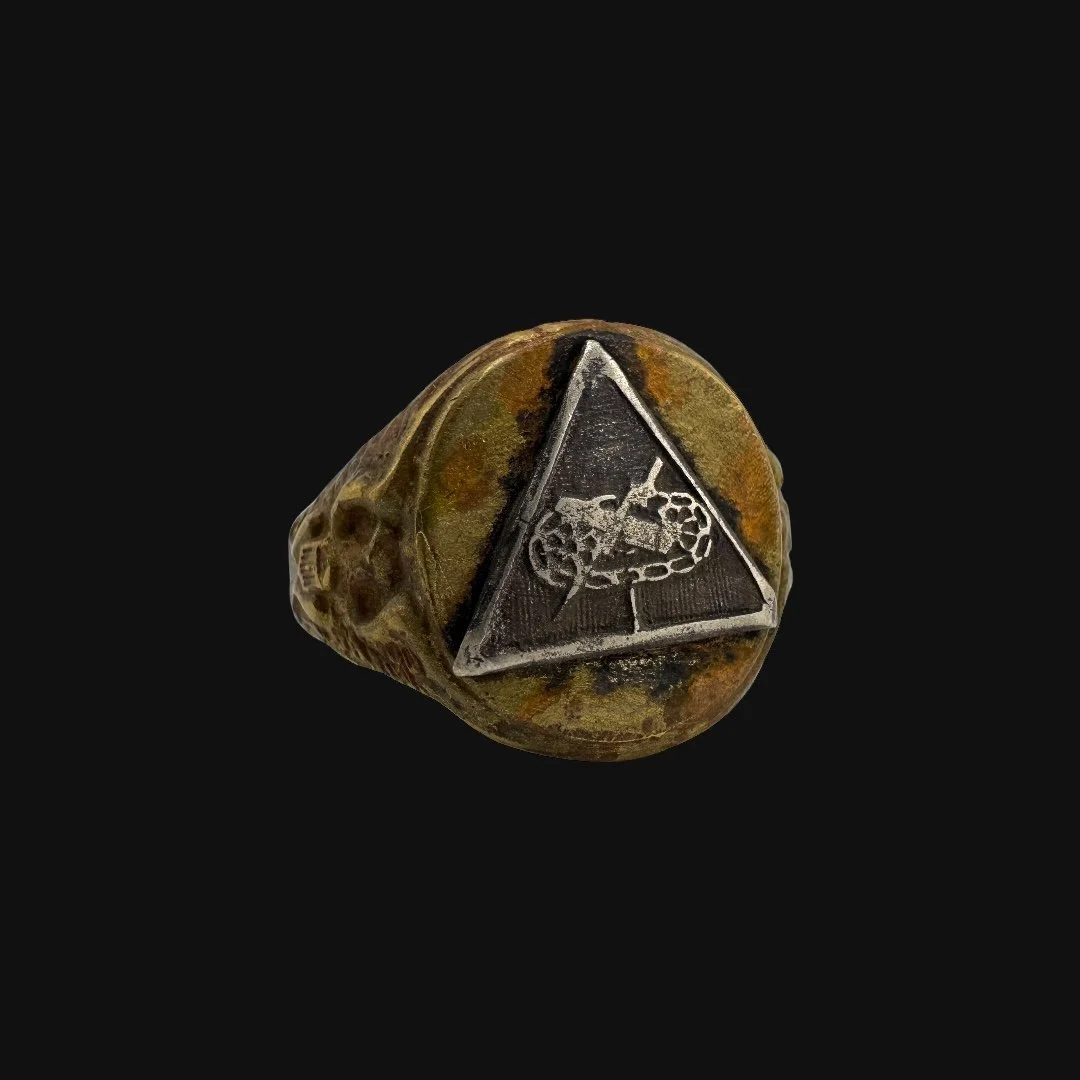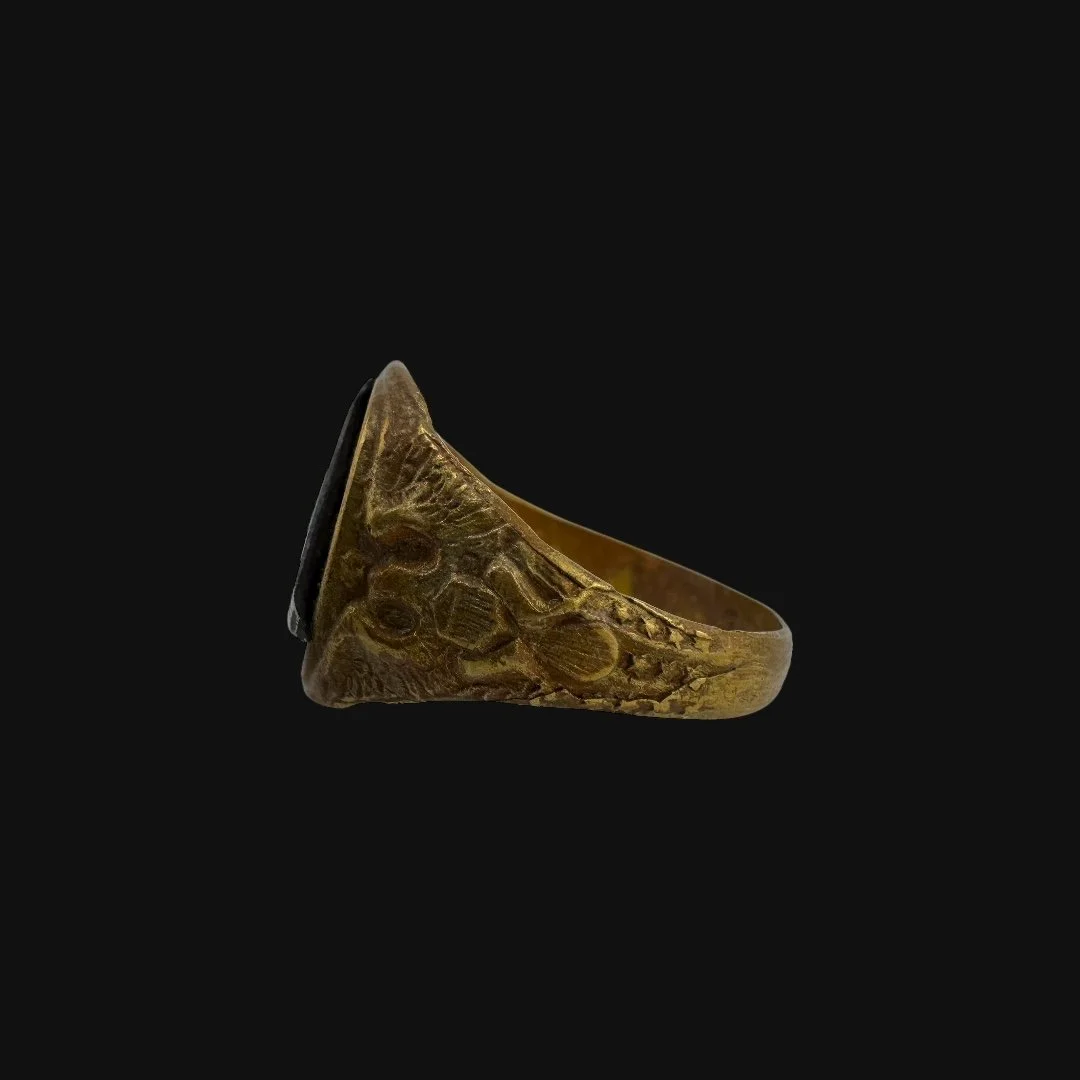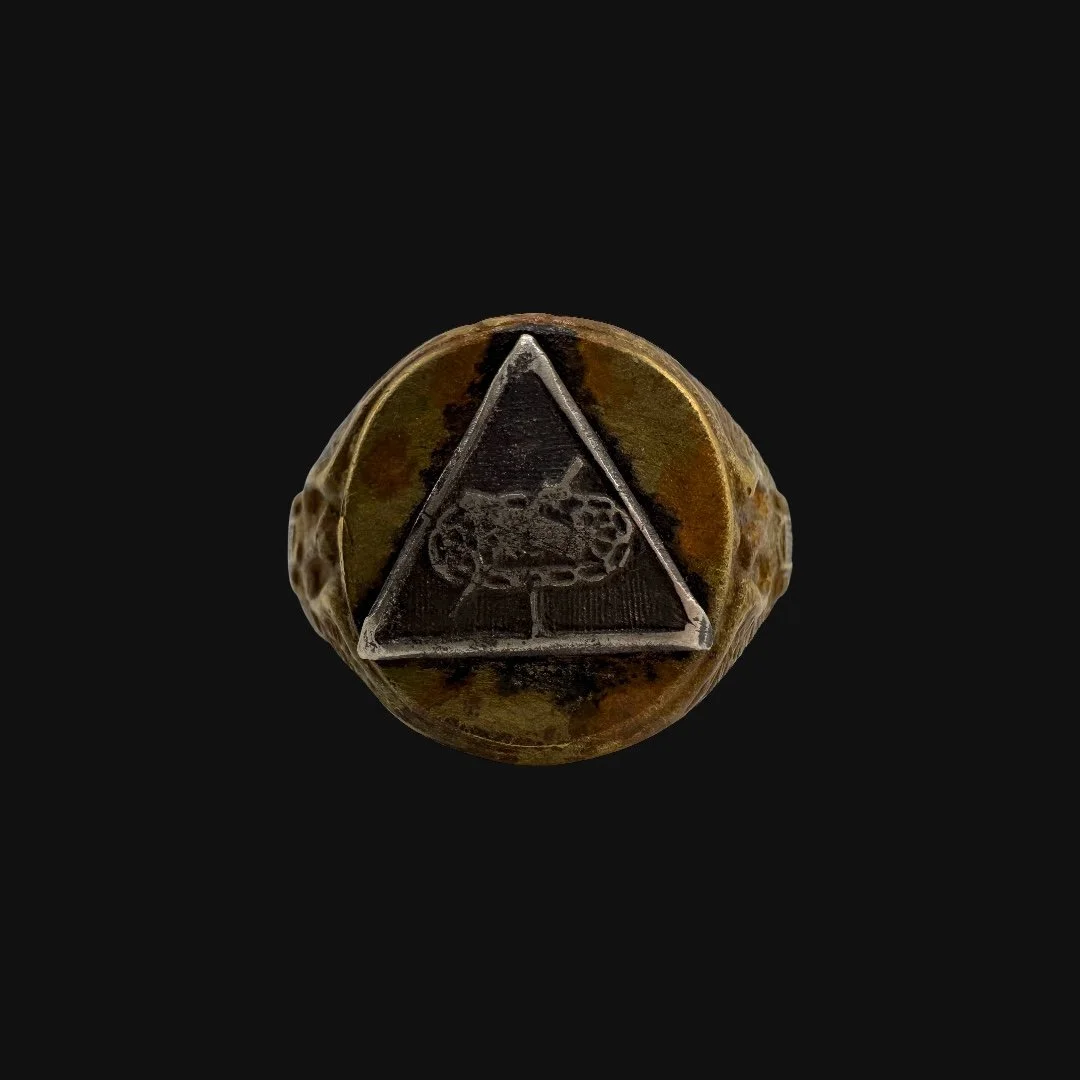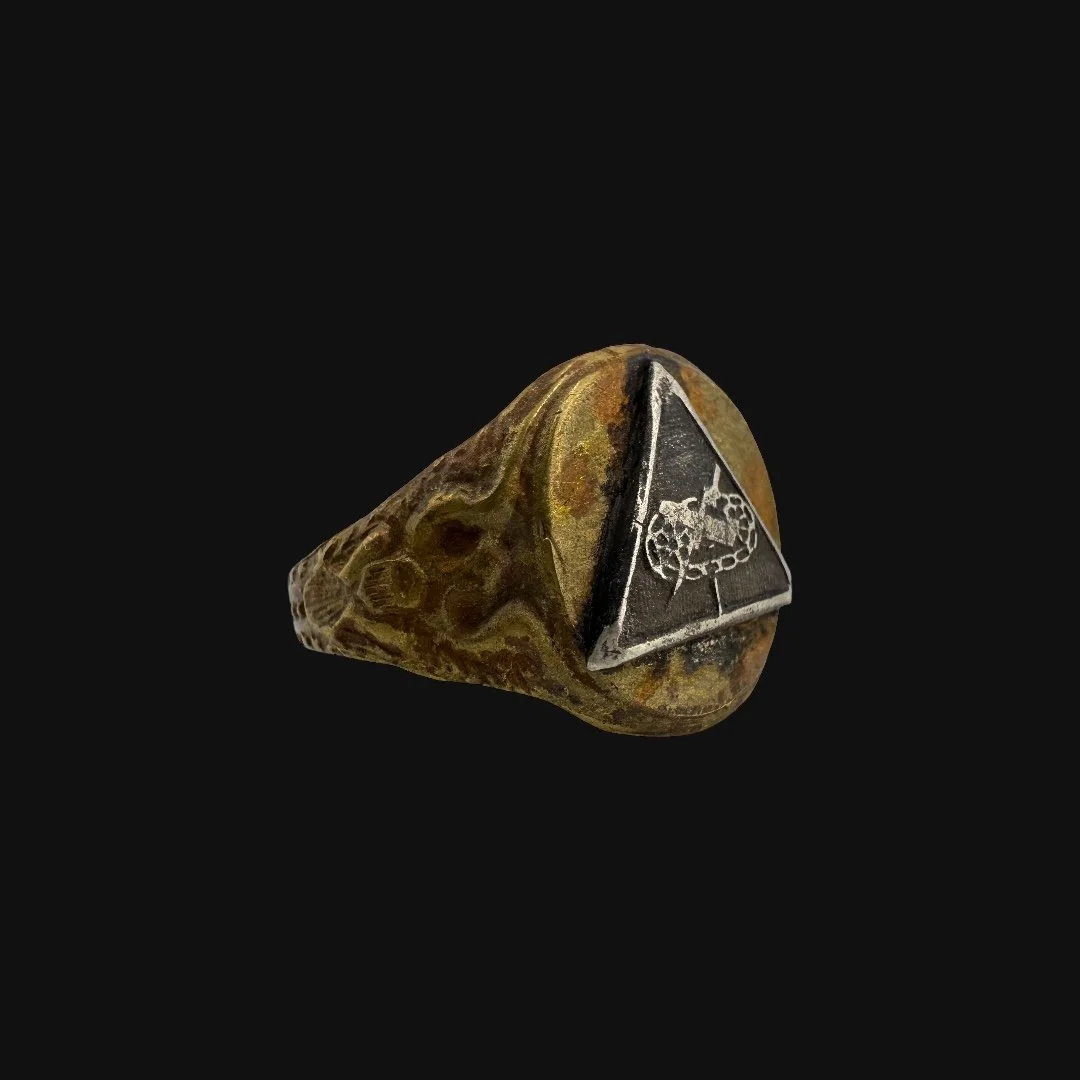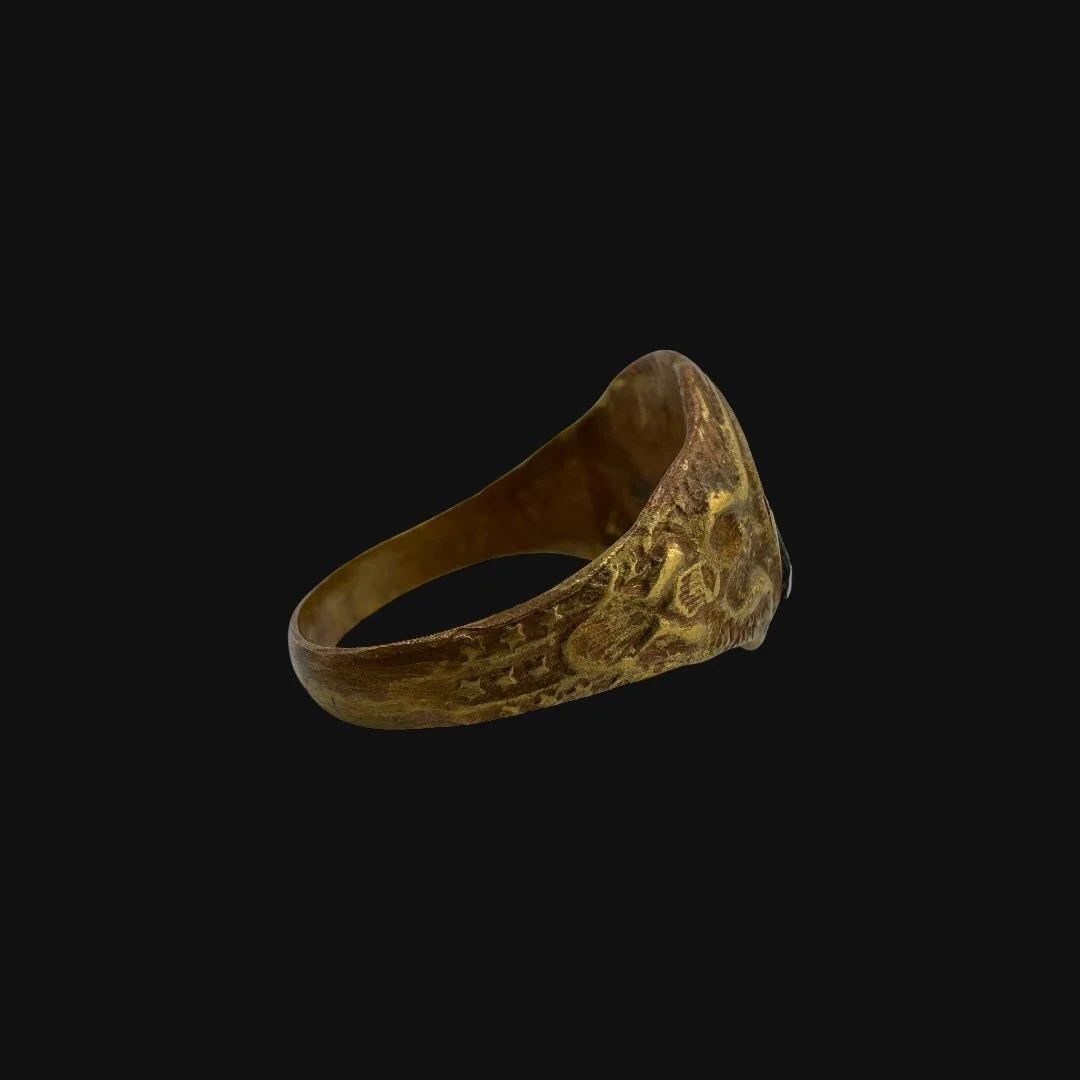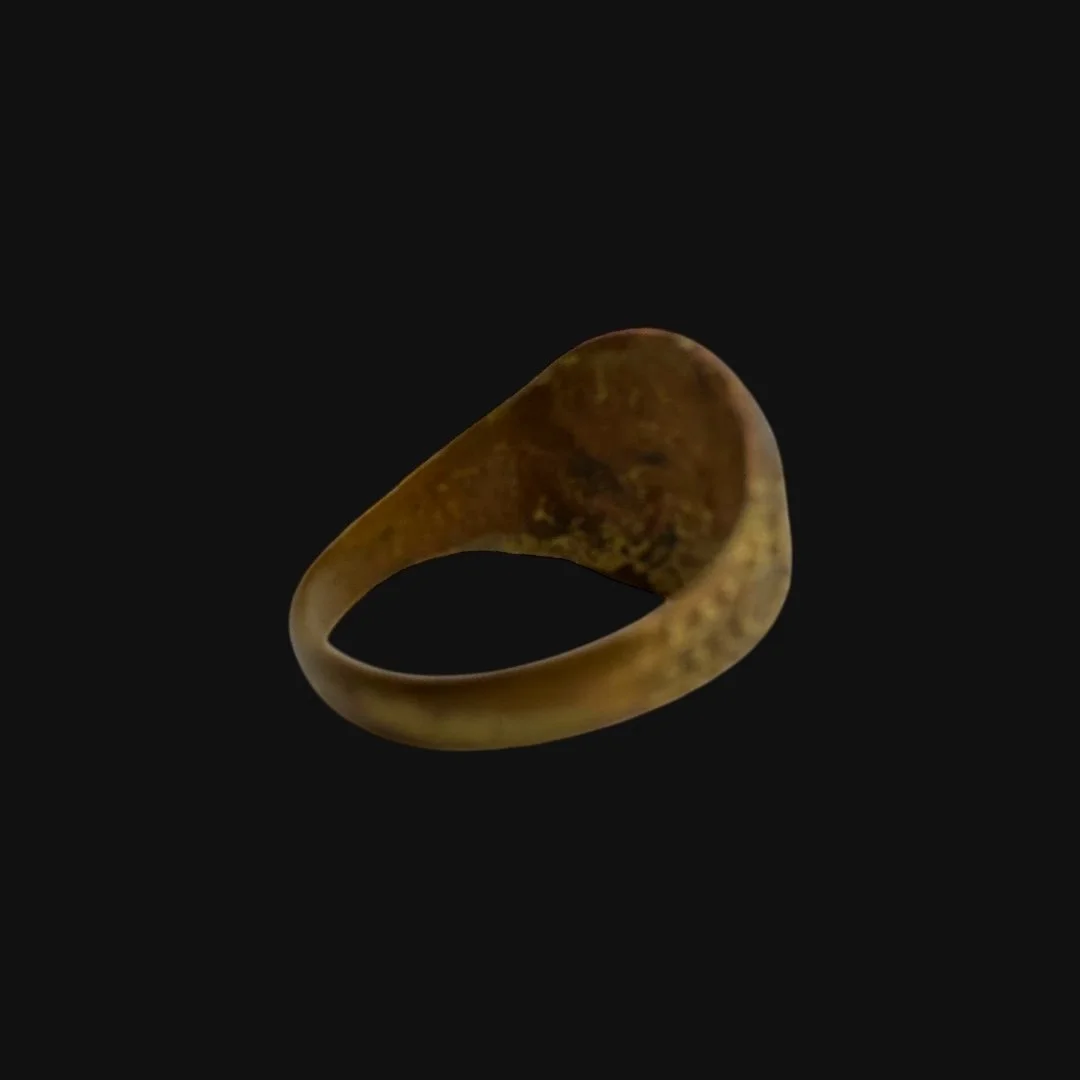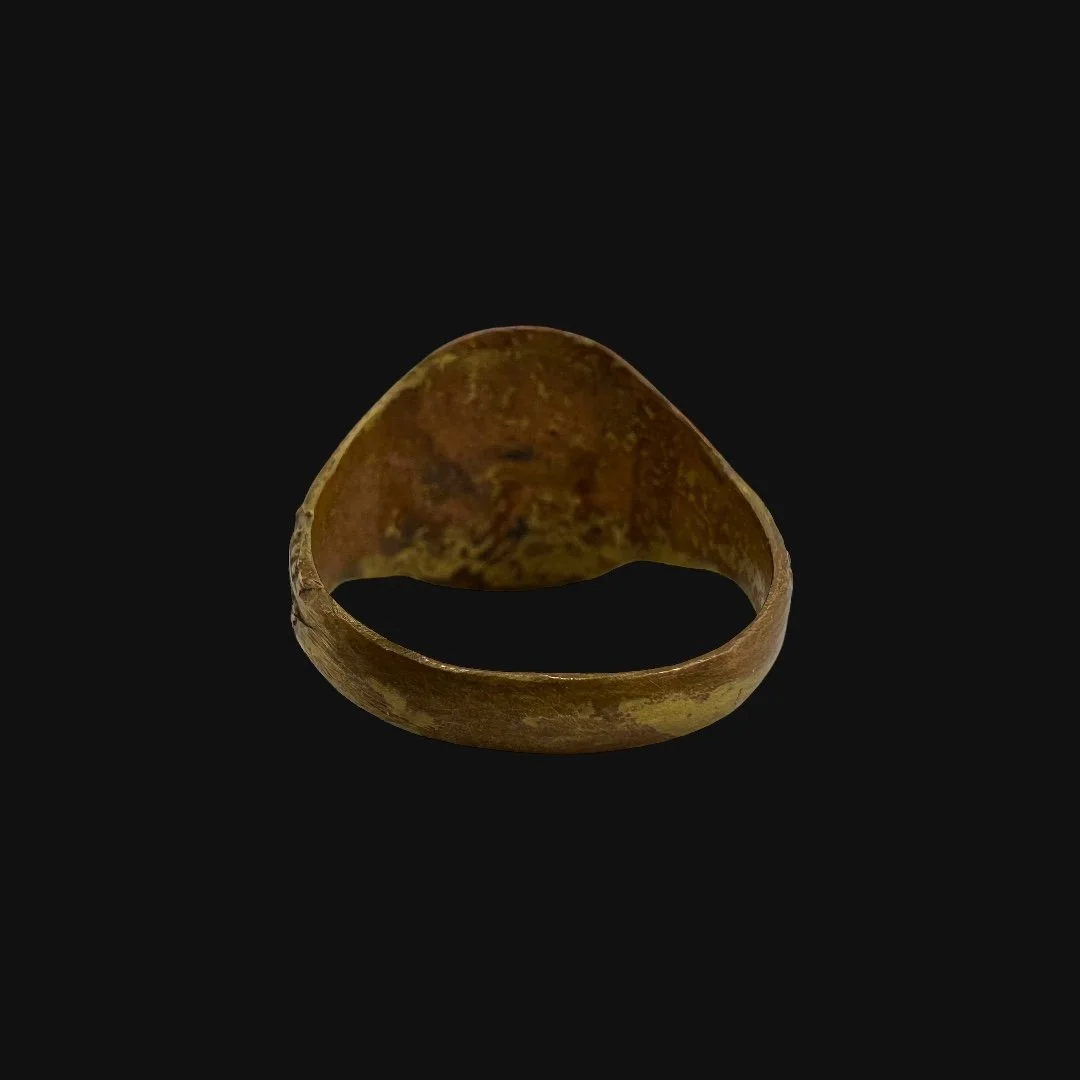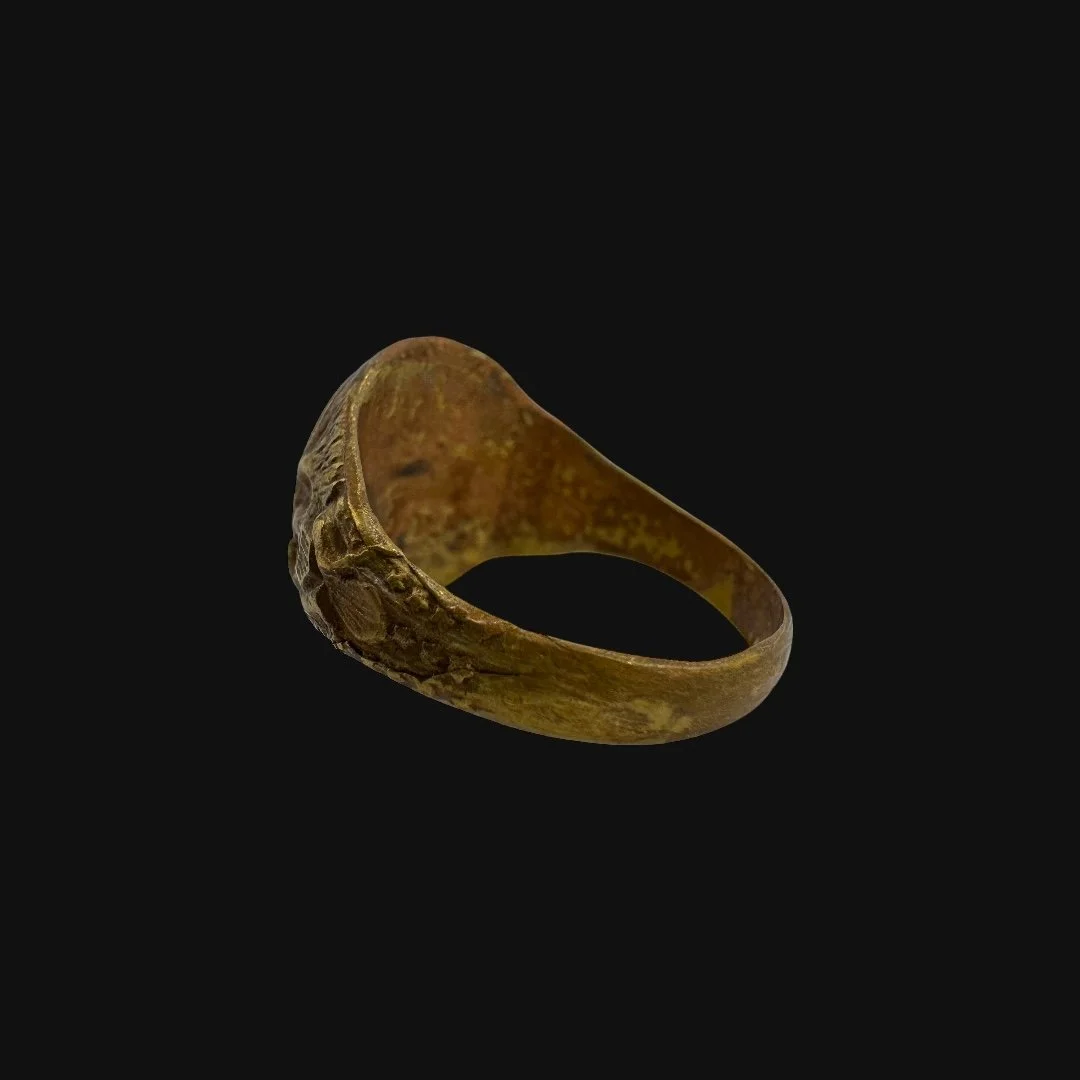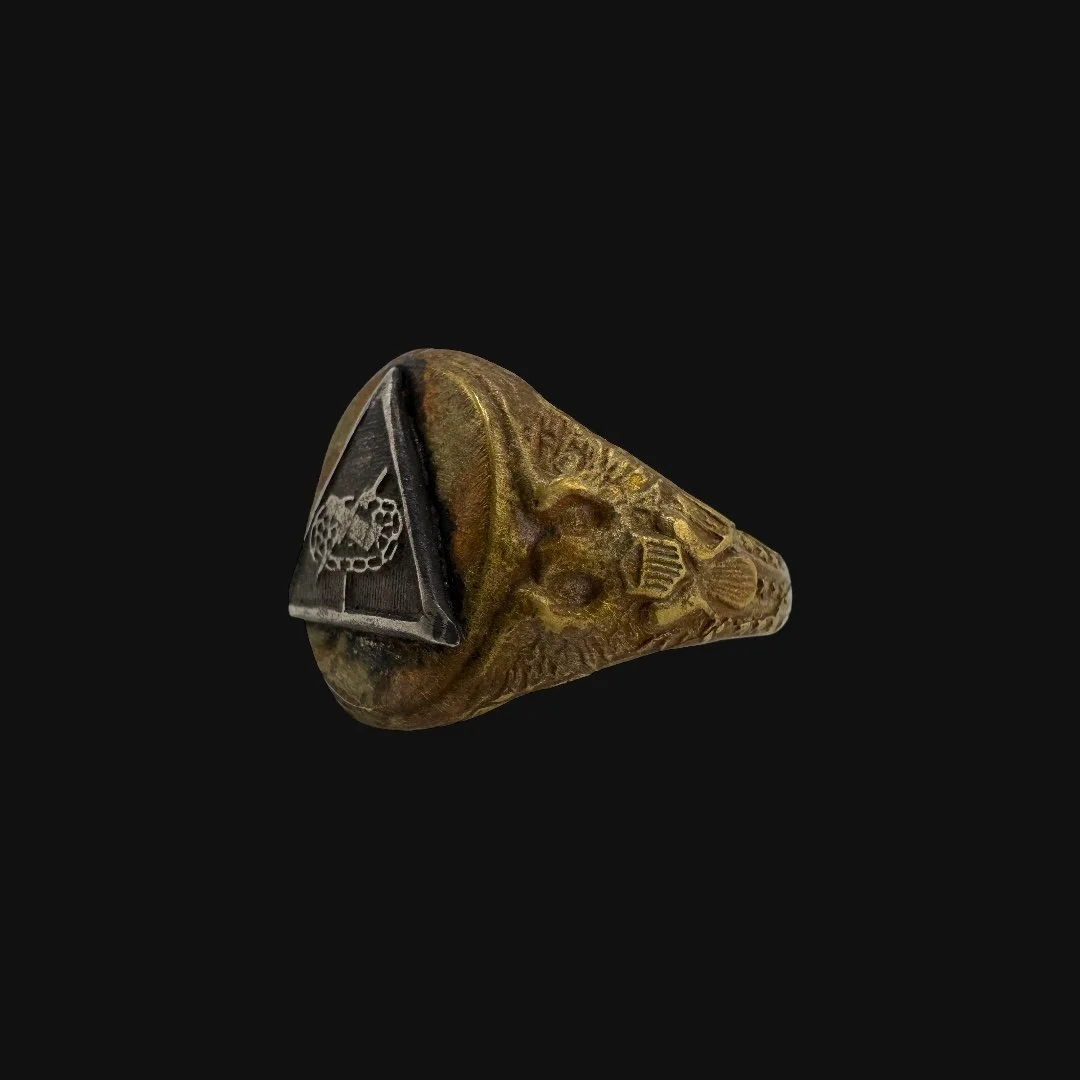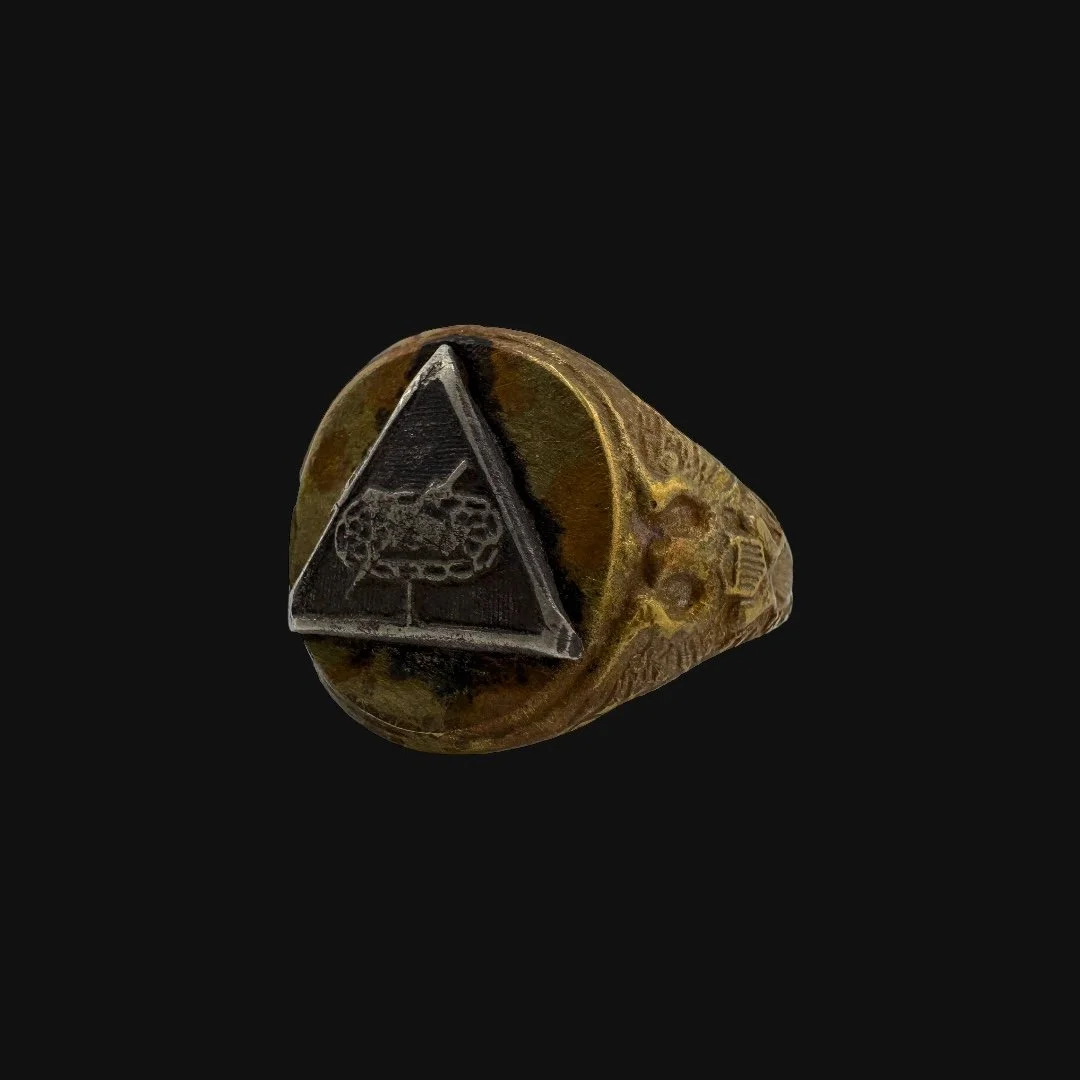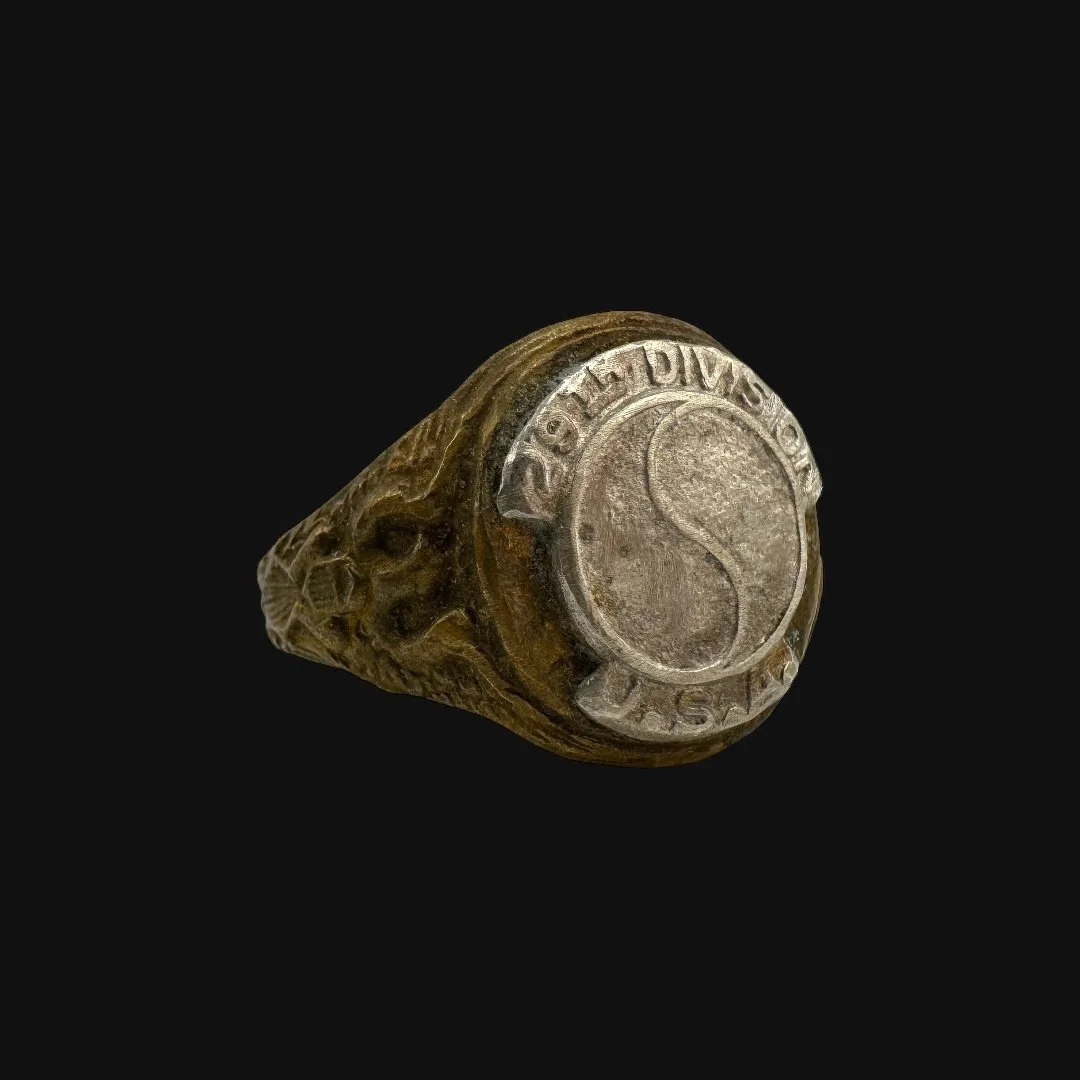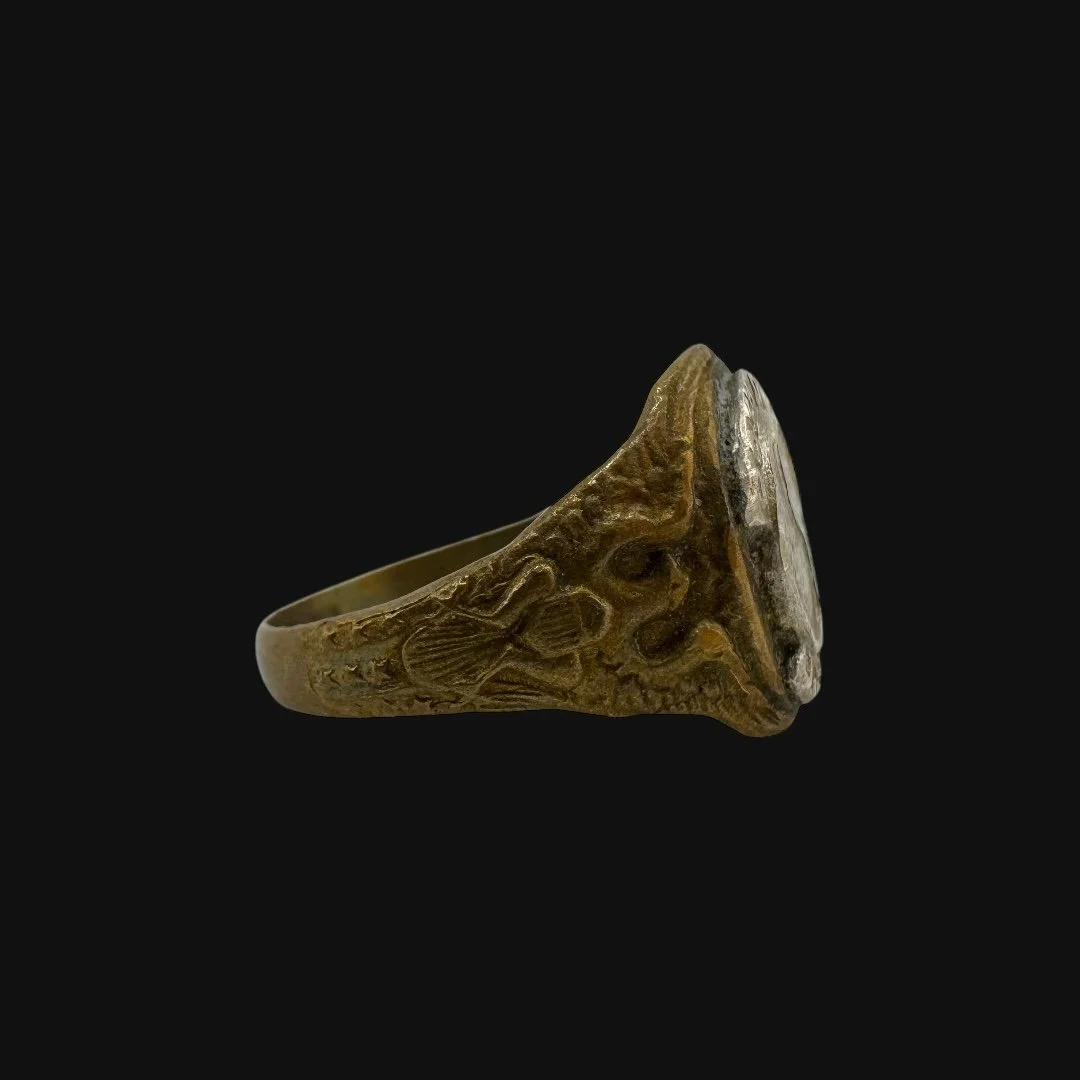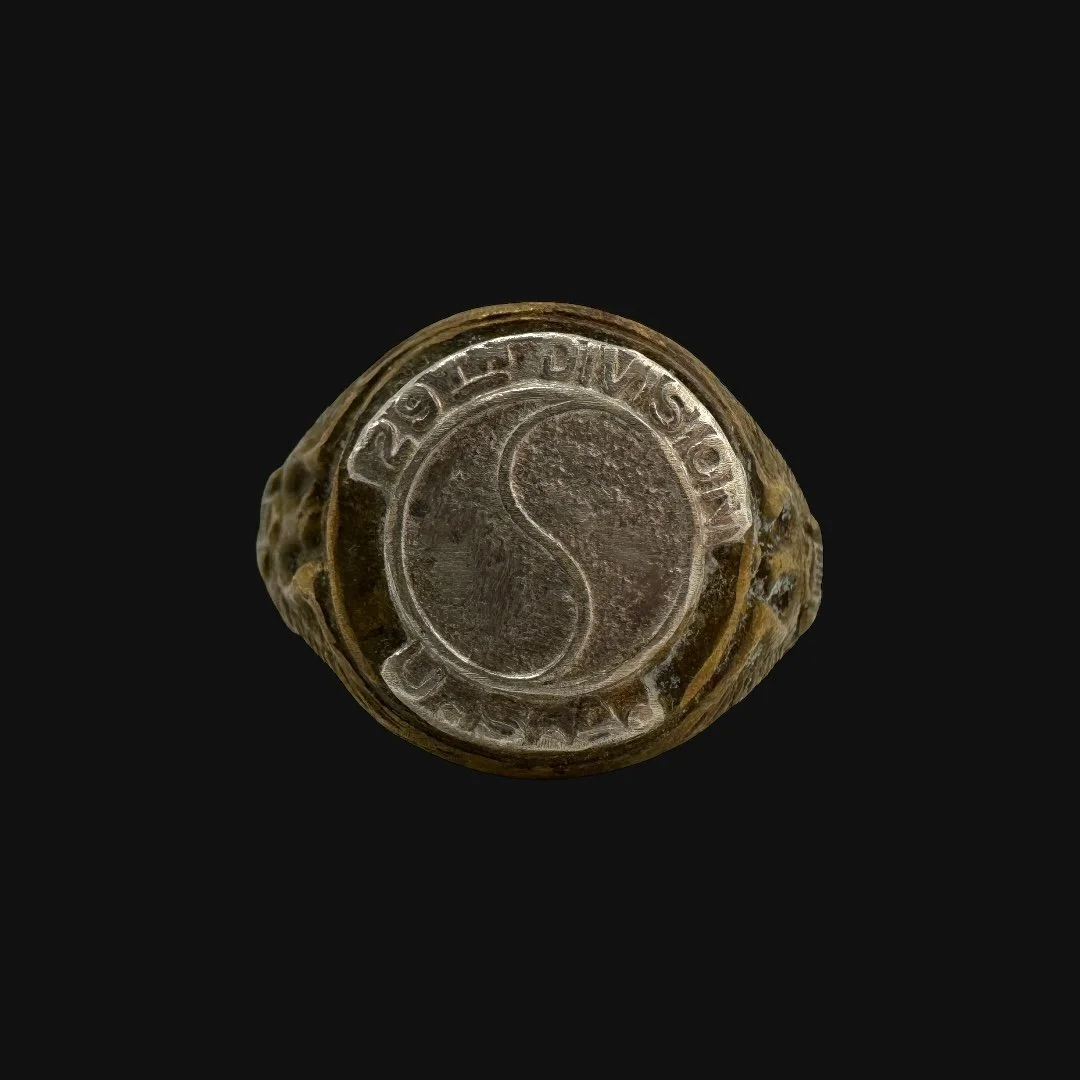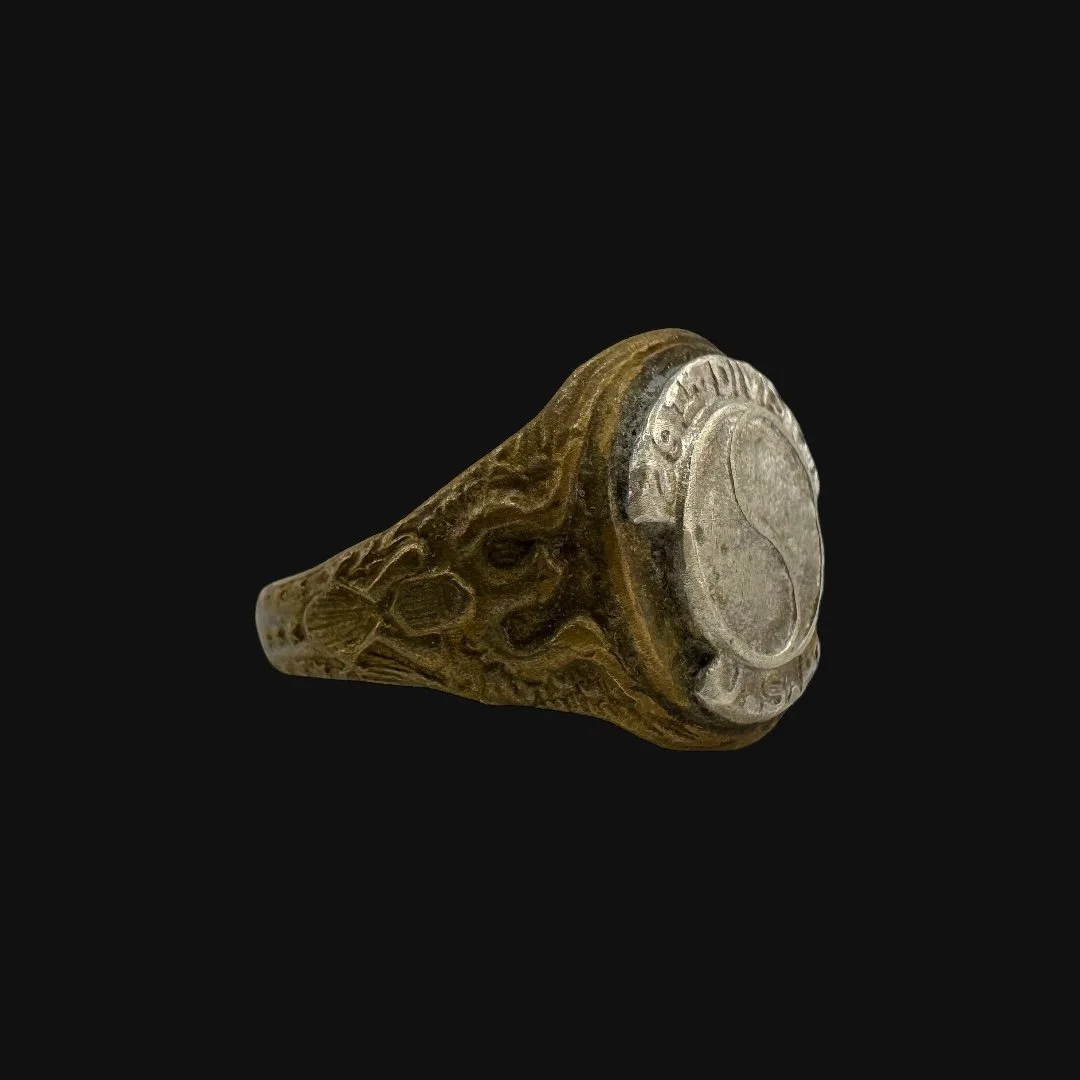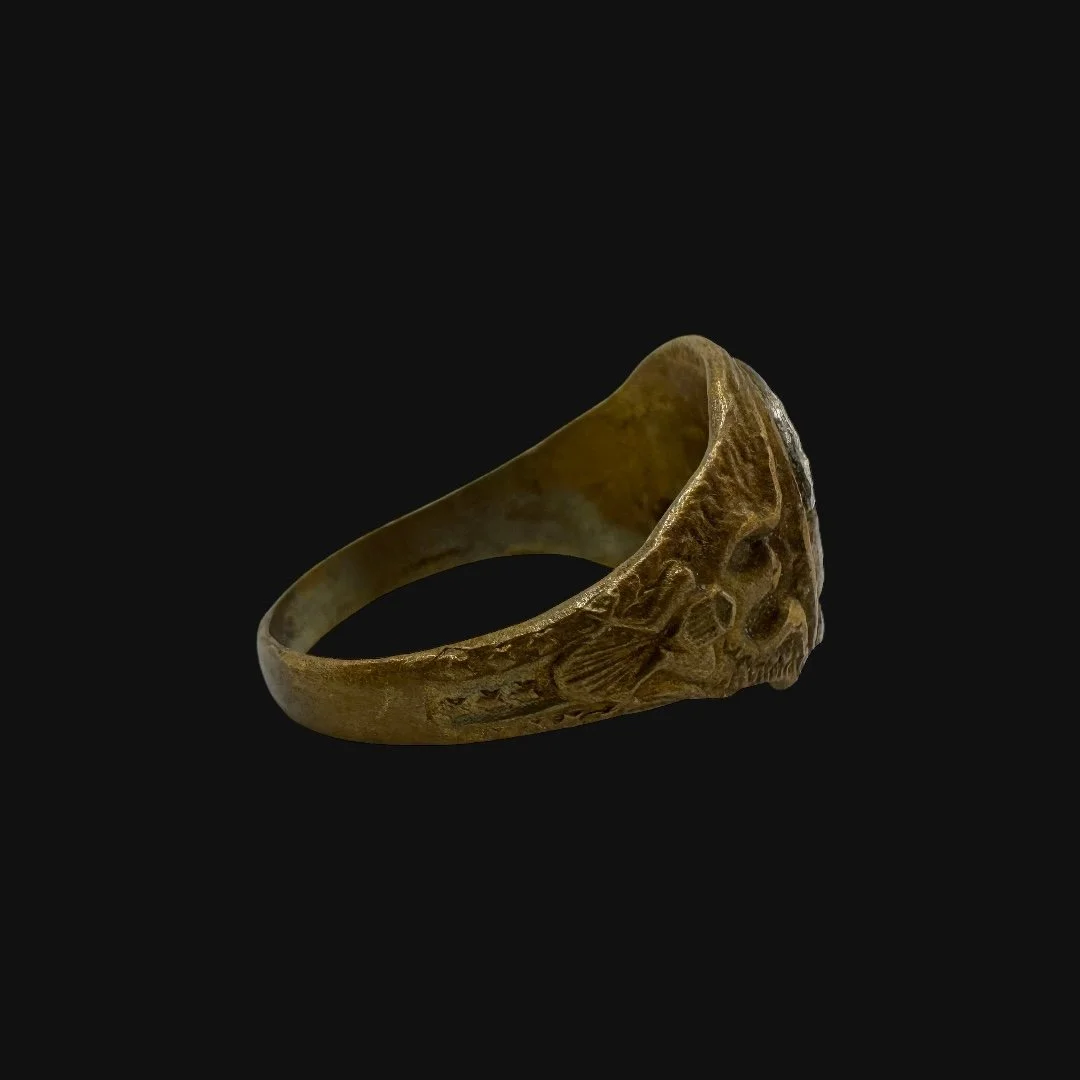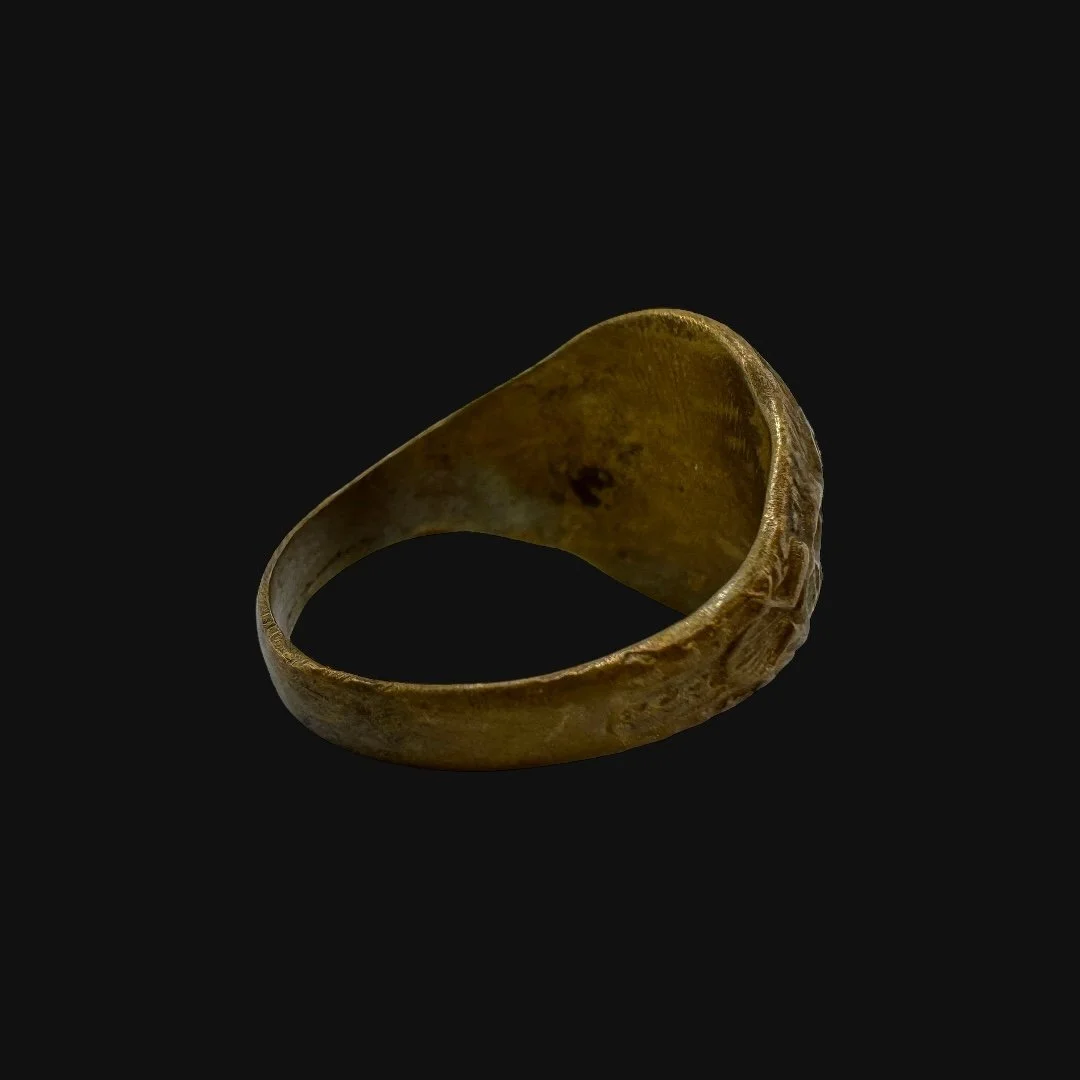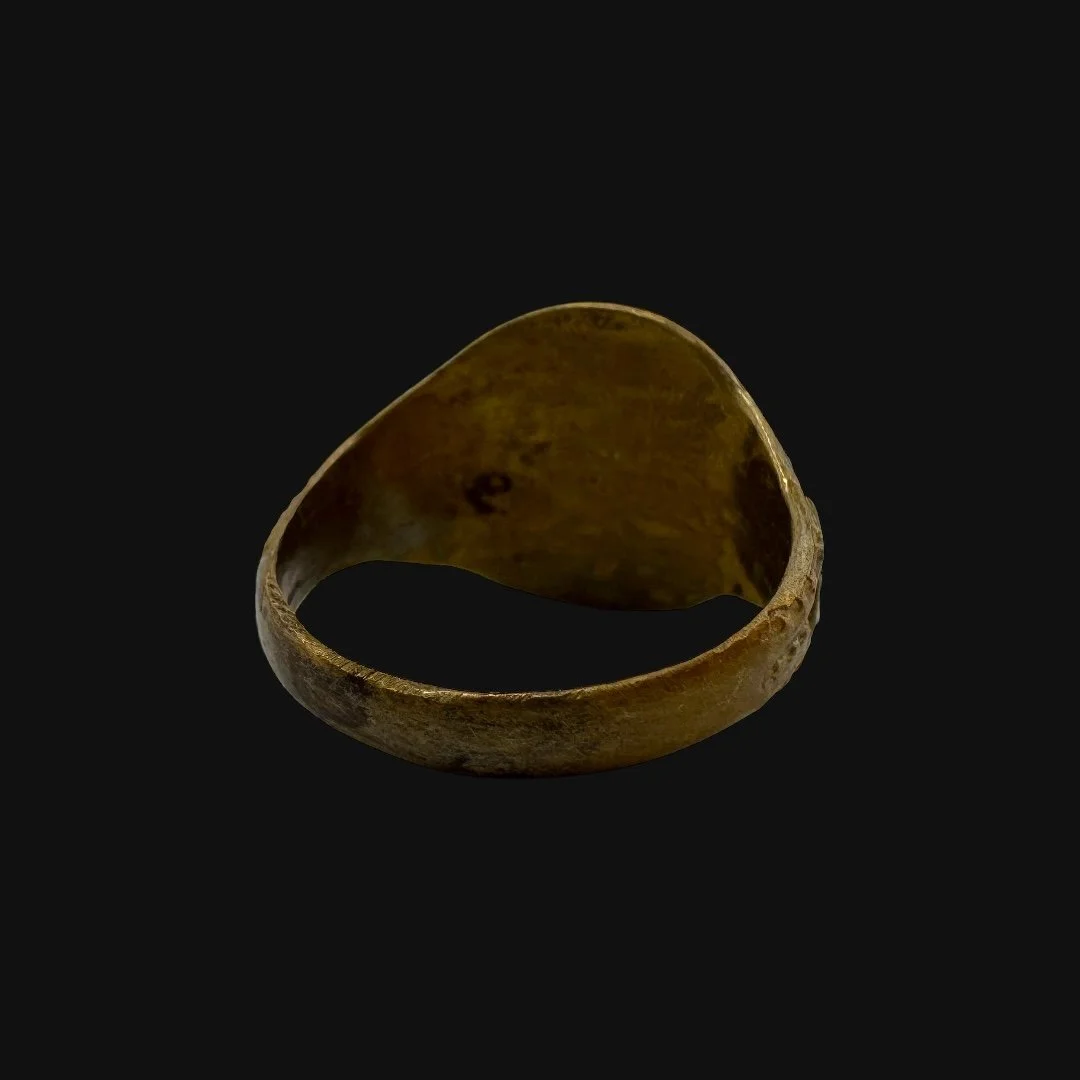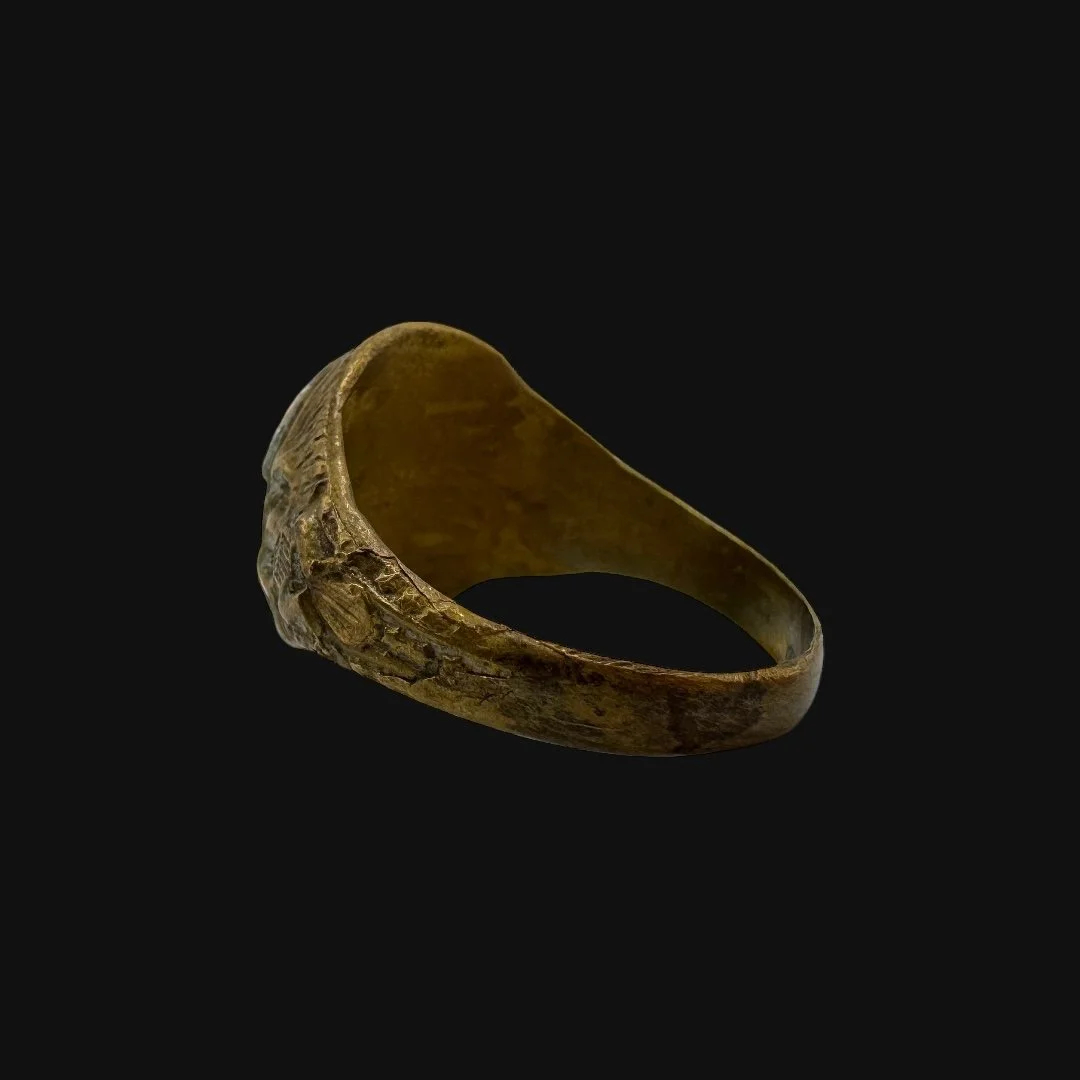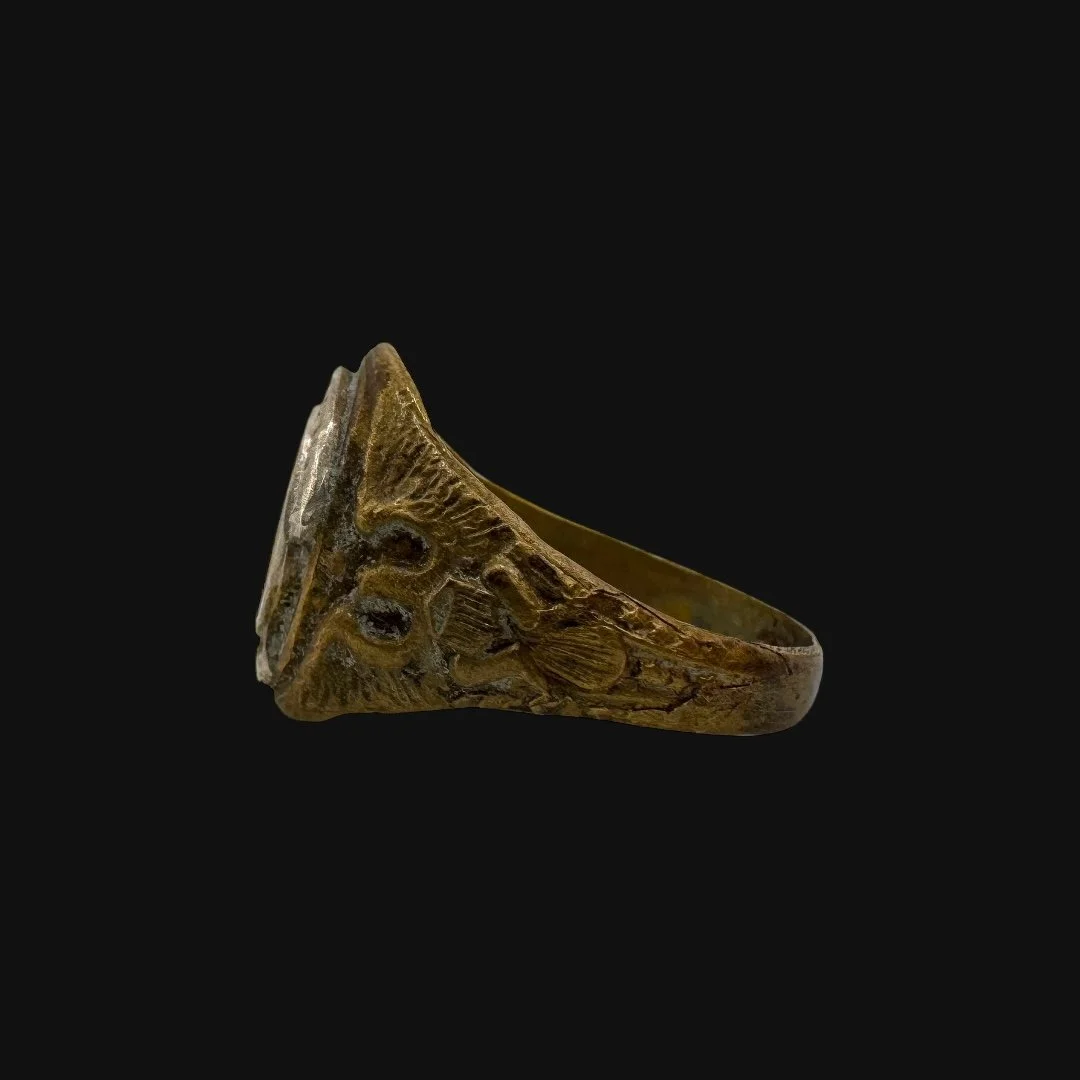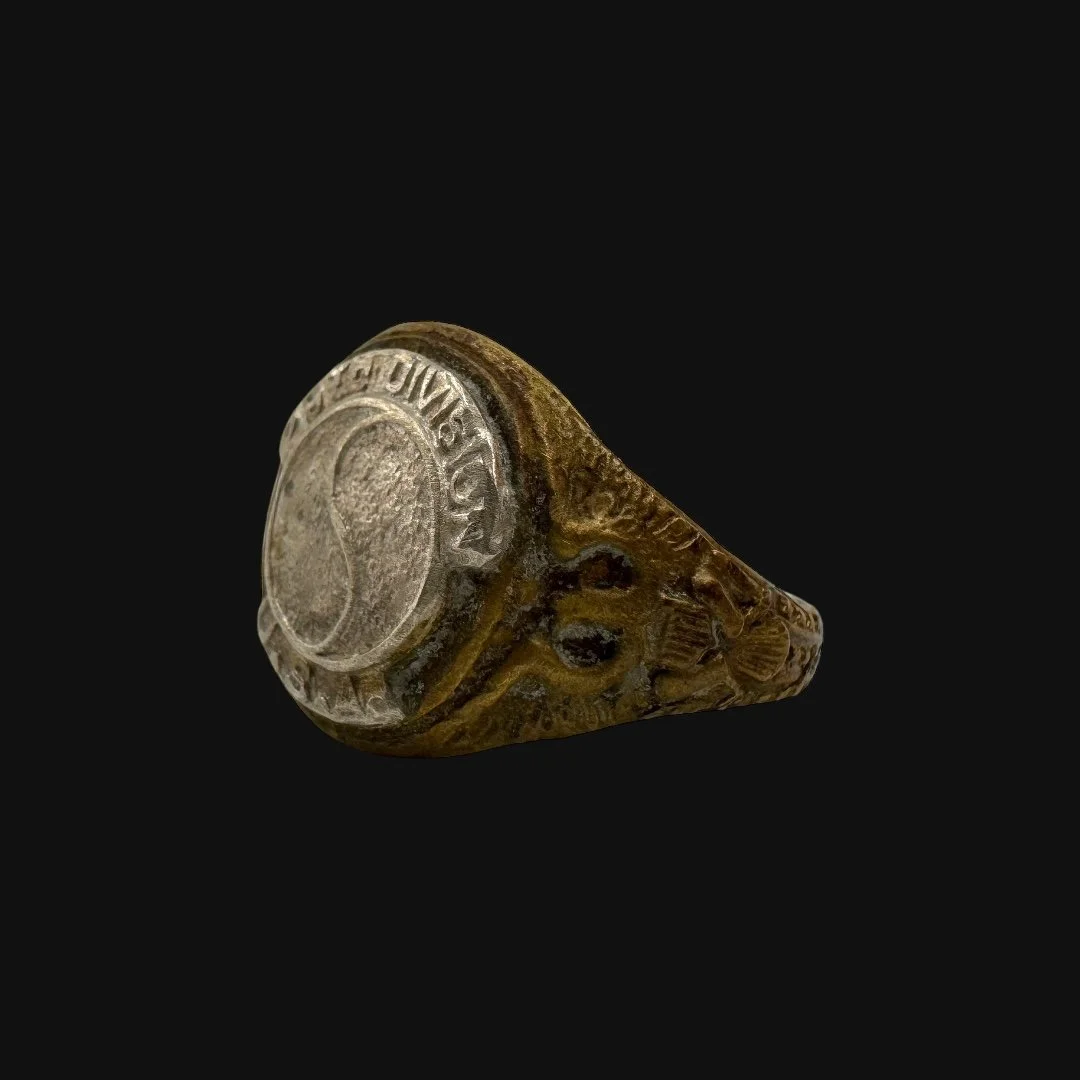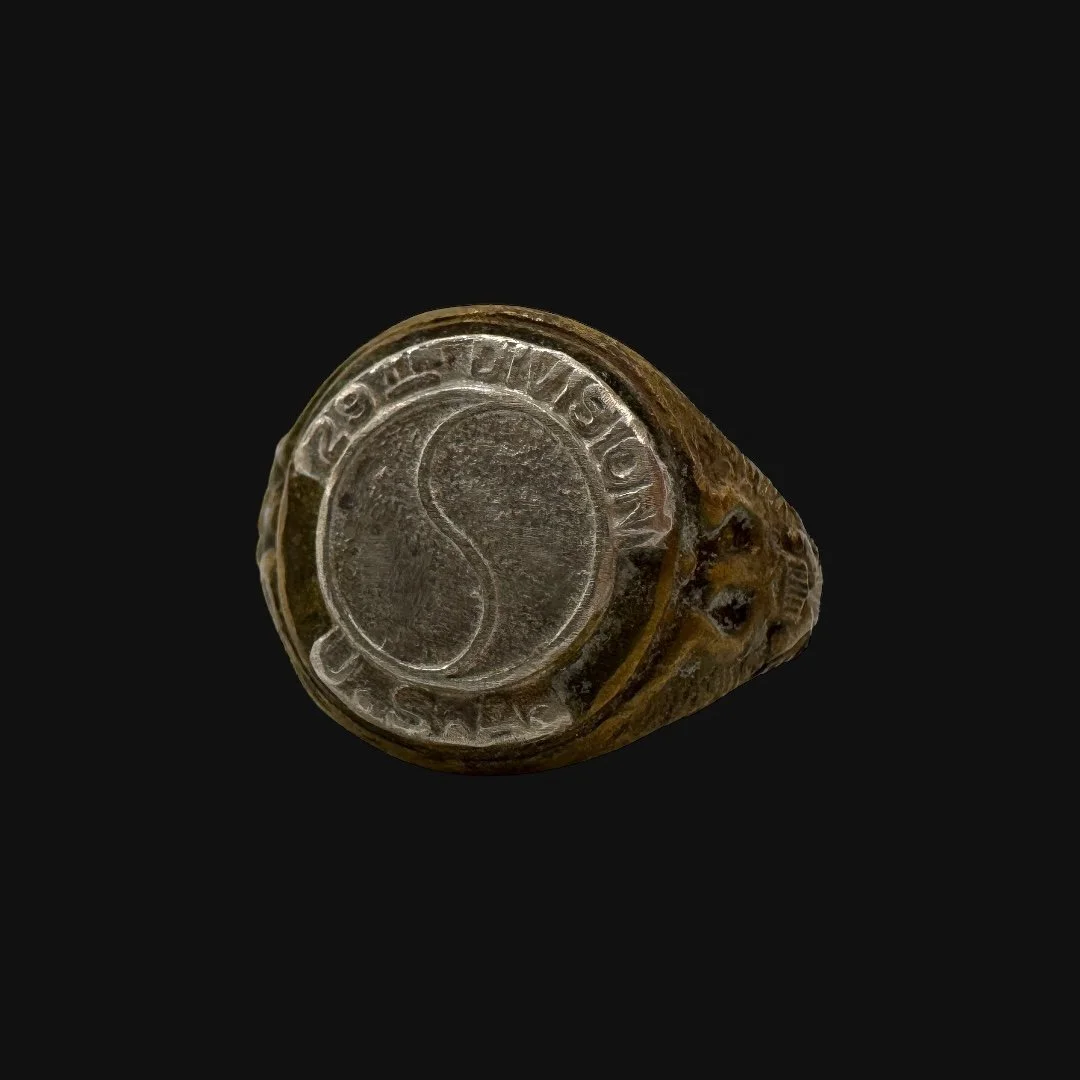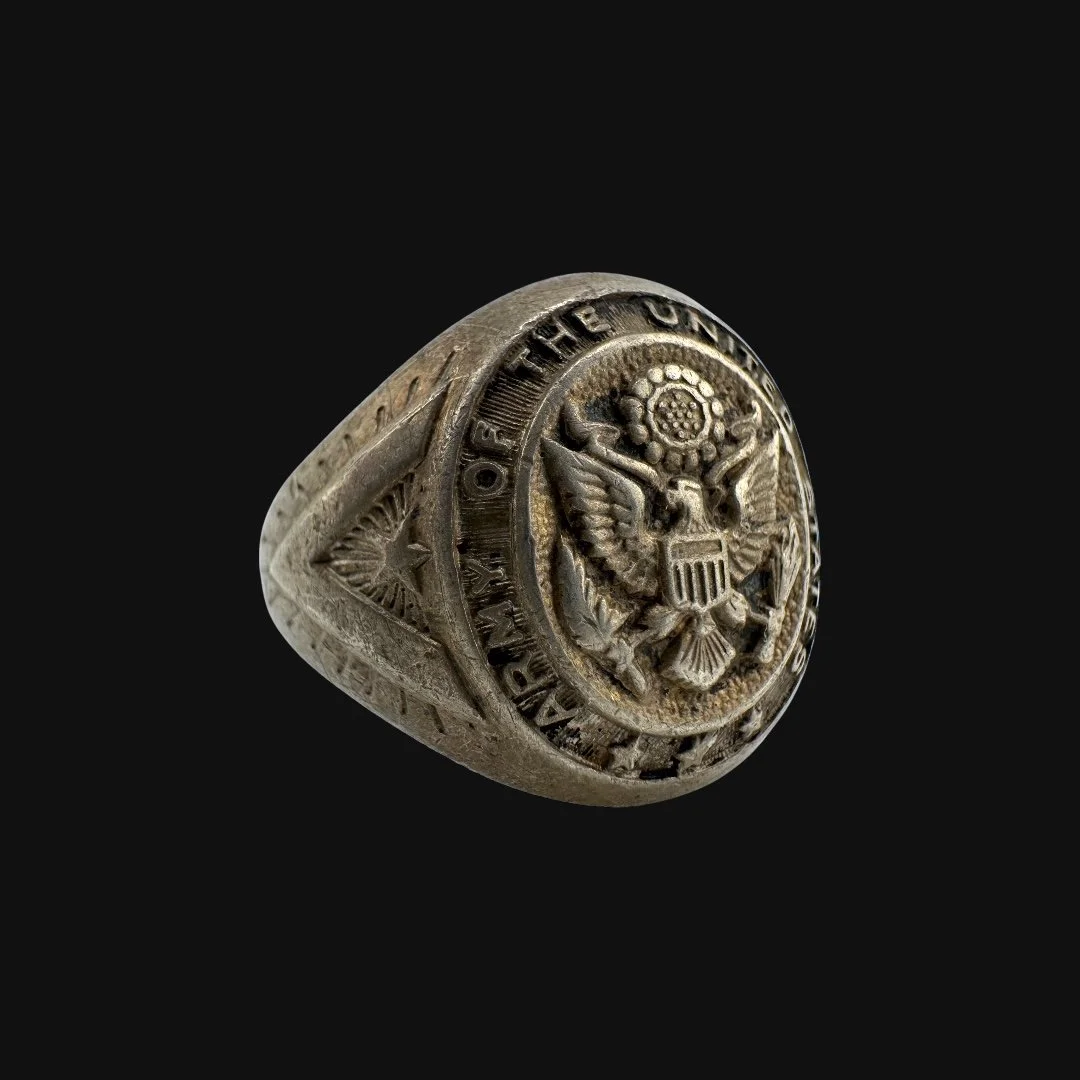 Image 1 of 12
Image 1 of 12

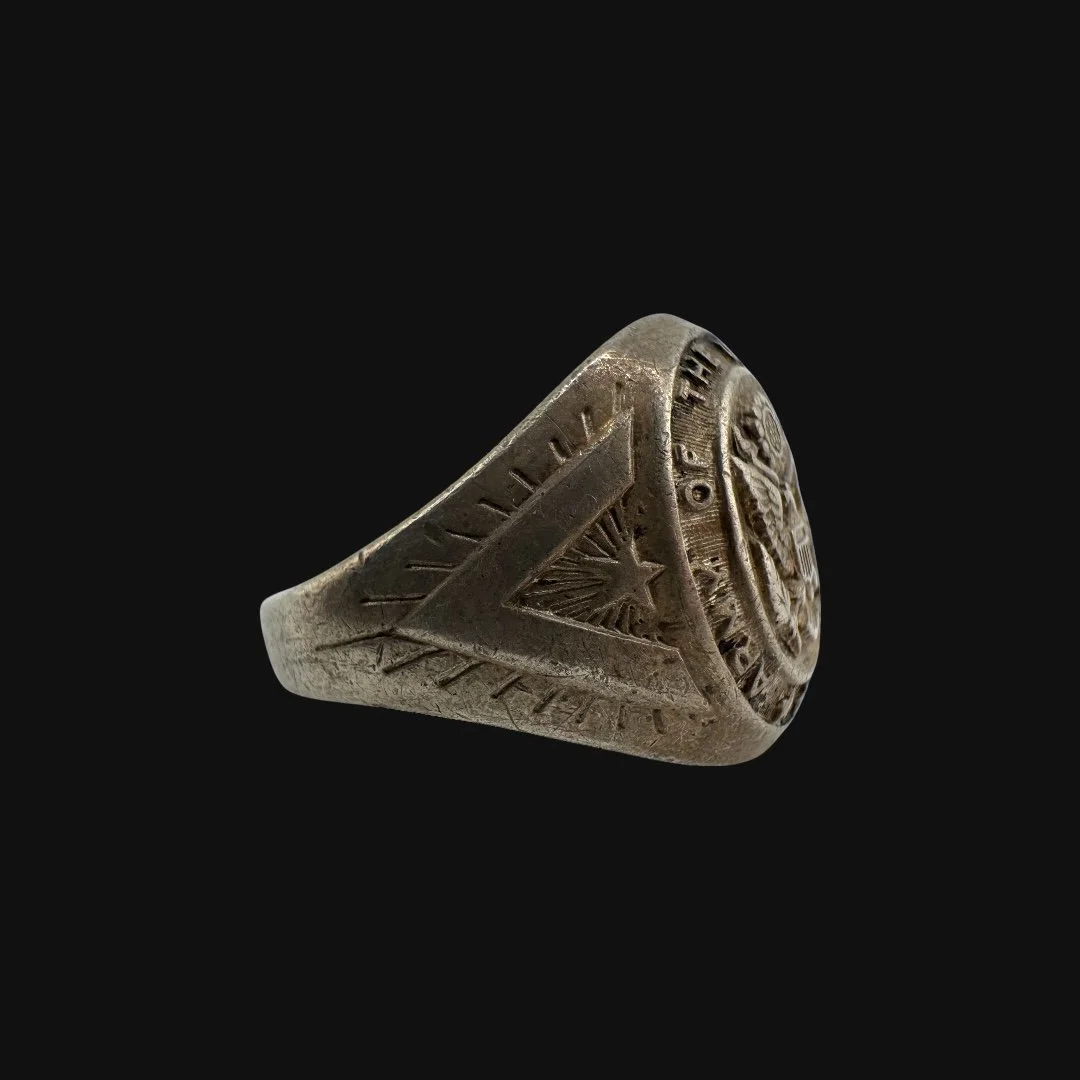 Image 2 of 12
Image 2 of 12

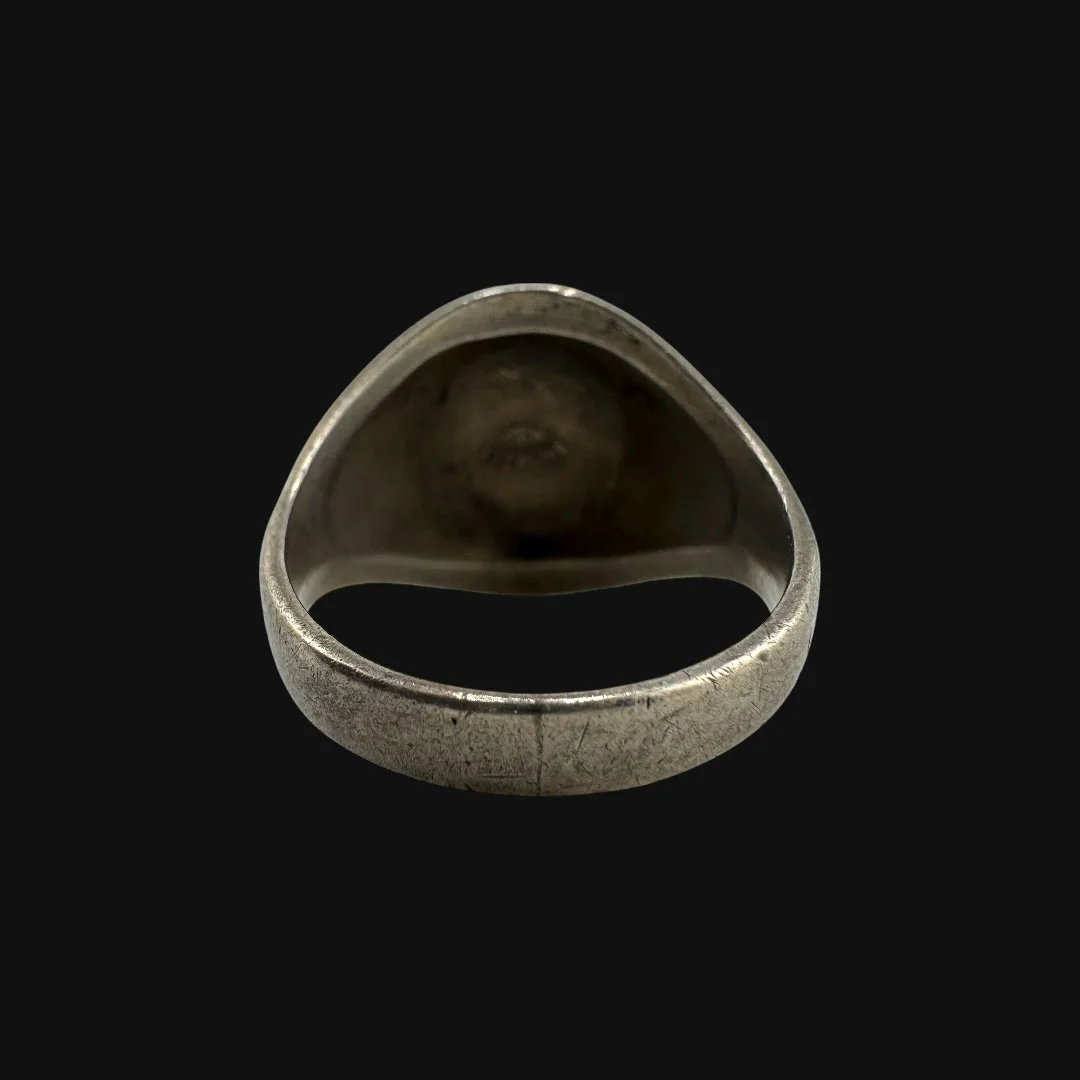 Image 3 of 12
Image 3 of 12

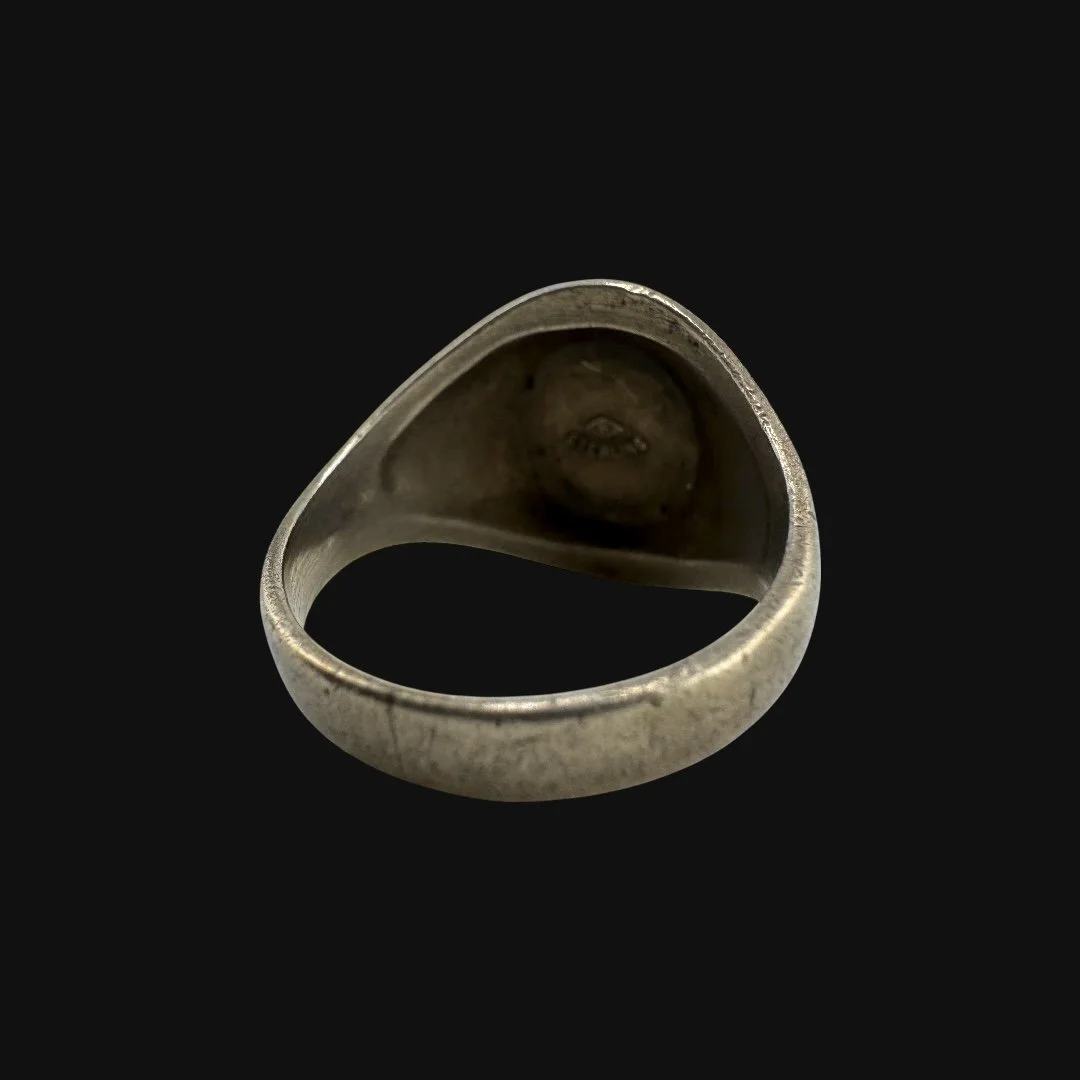 Image 4 of 12
Image 4 of 12

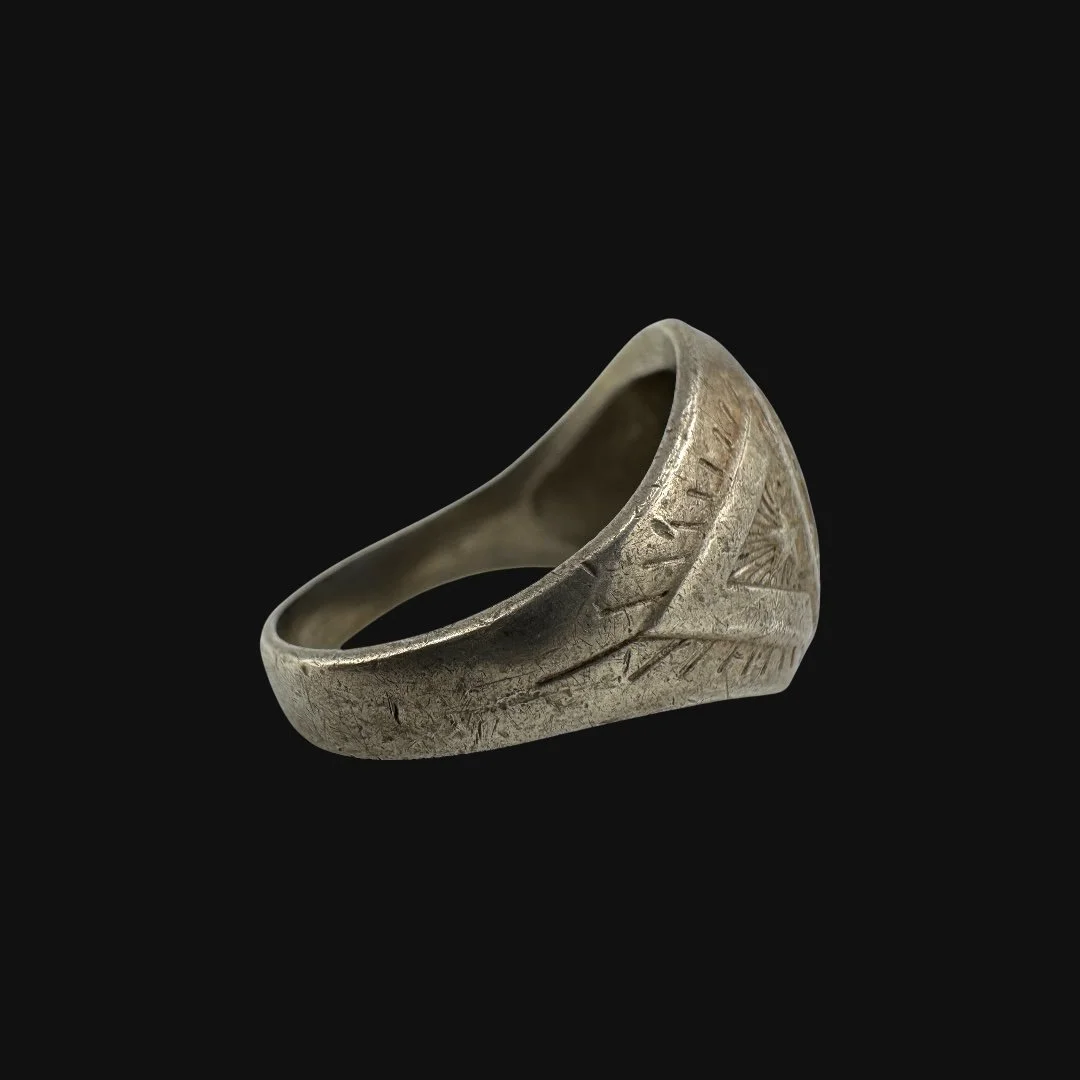 Image 5 of 12
Image 5 of 12

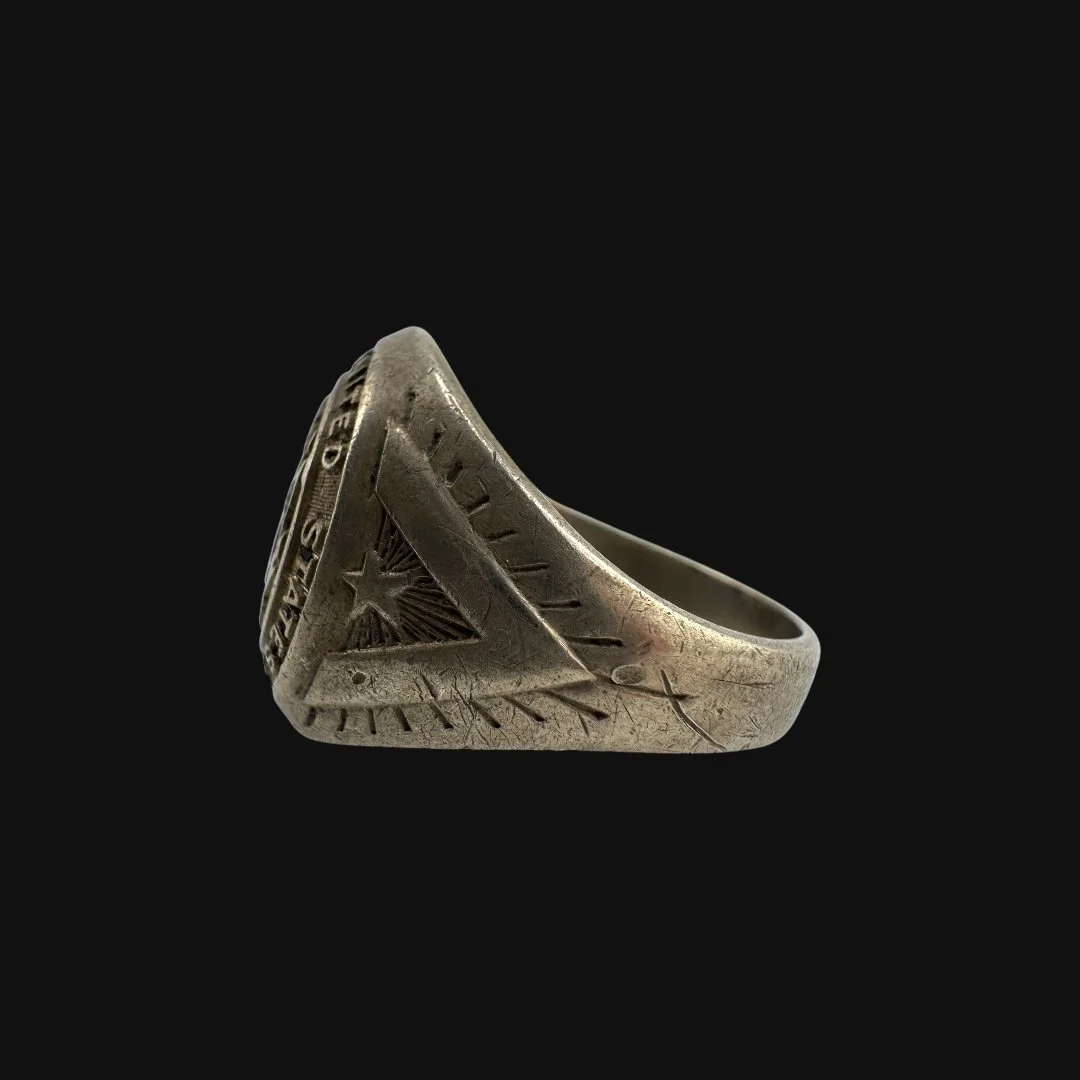 Image 6 of 12
Image 6 of 12

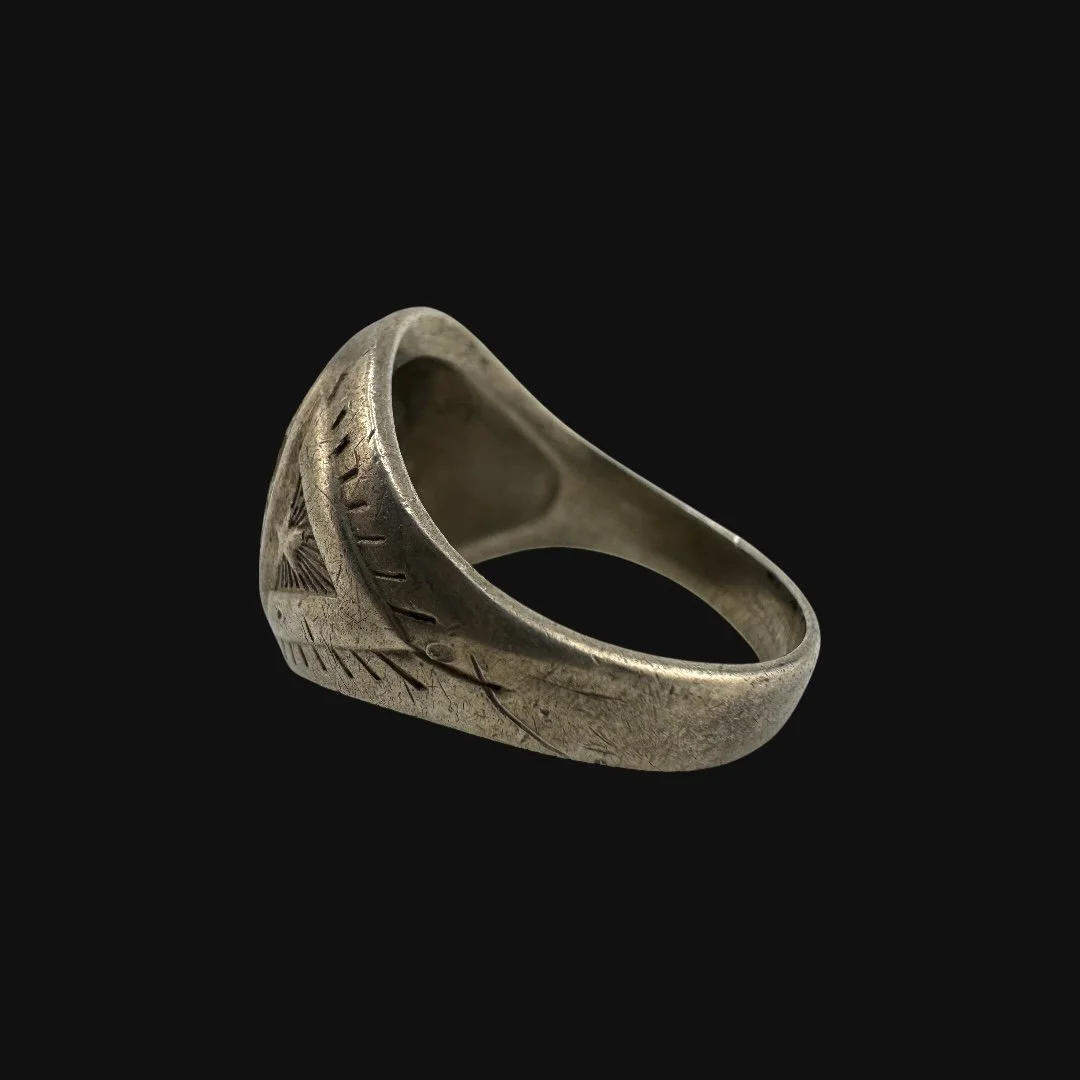 Image 7 of 12
Image 7 of 12

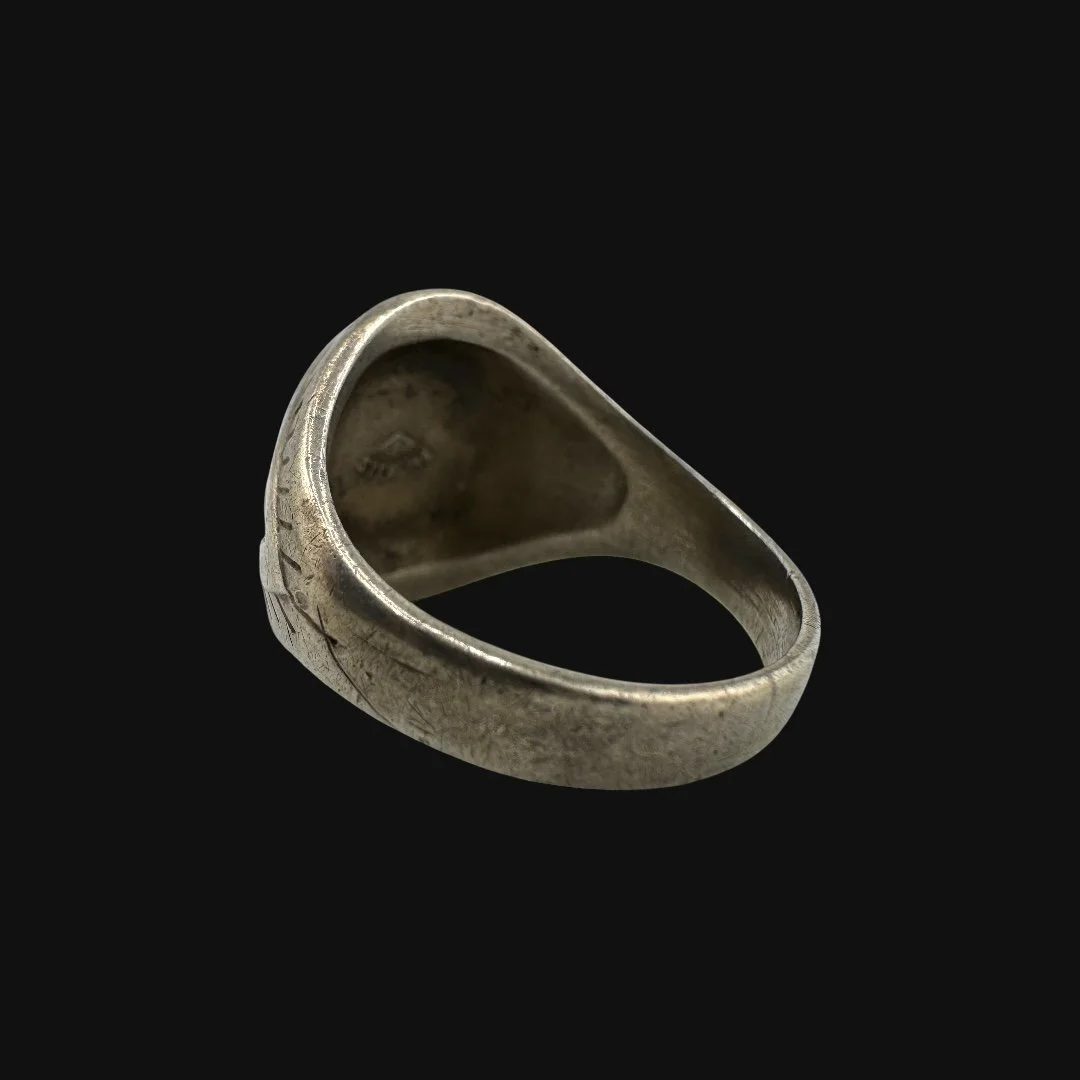 Image 8 of 12
Image 8 of 12

 Image 9 of 12
Image 9 of 12

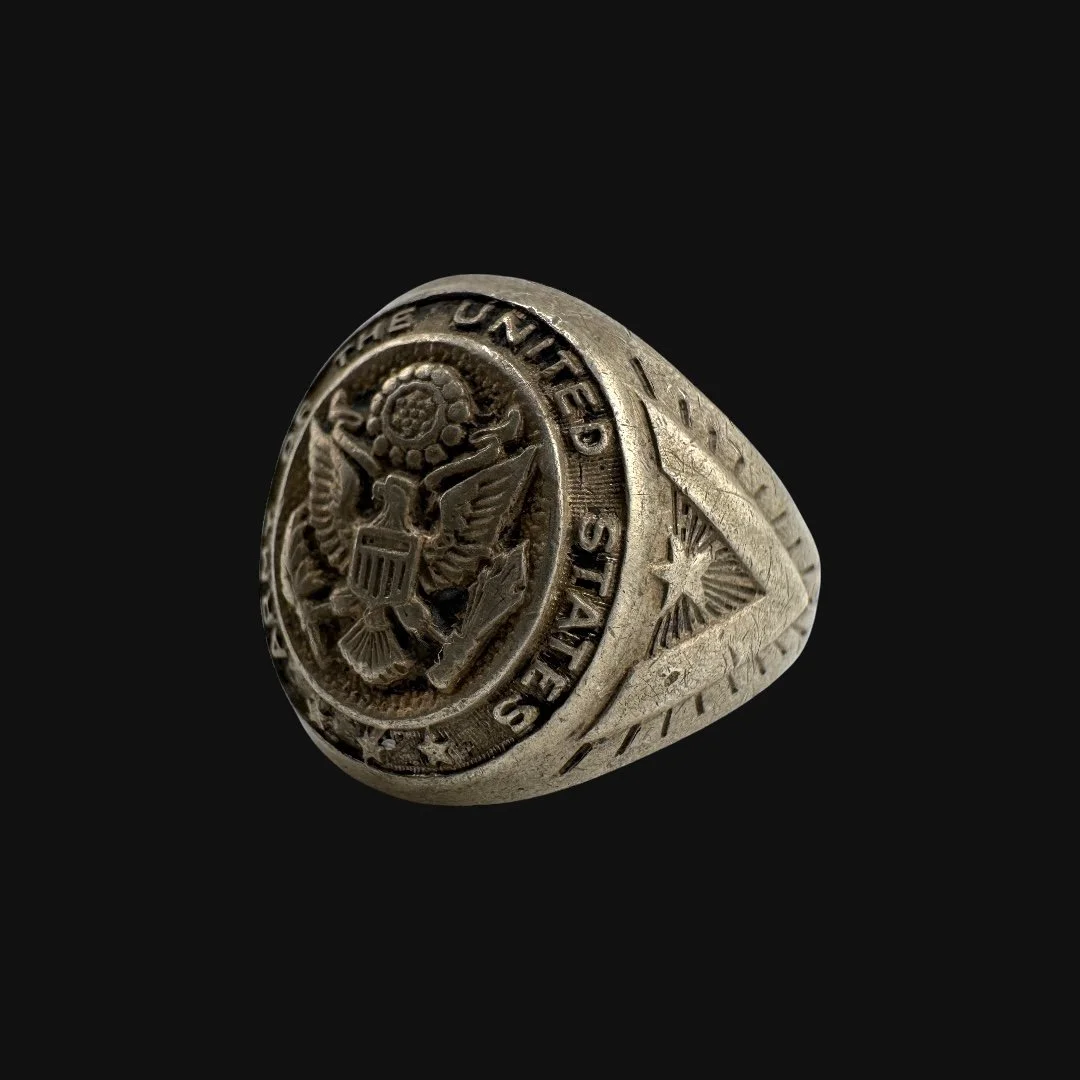 Image 10 of 12
Image 10 of 12

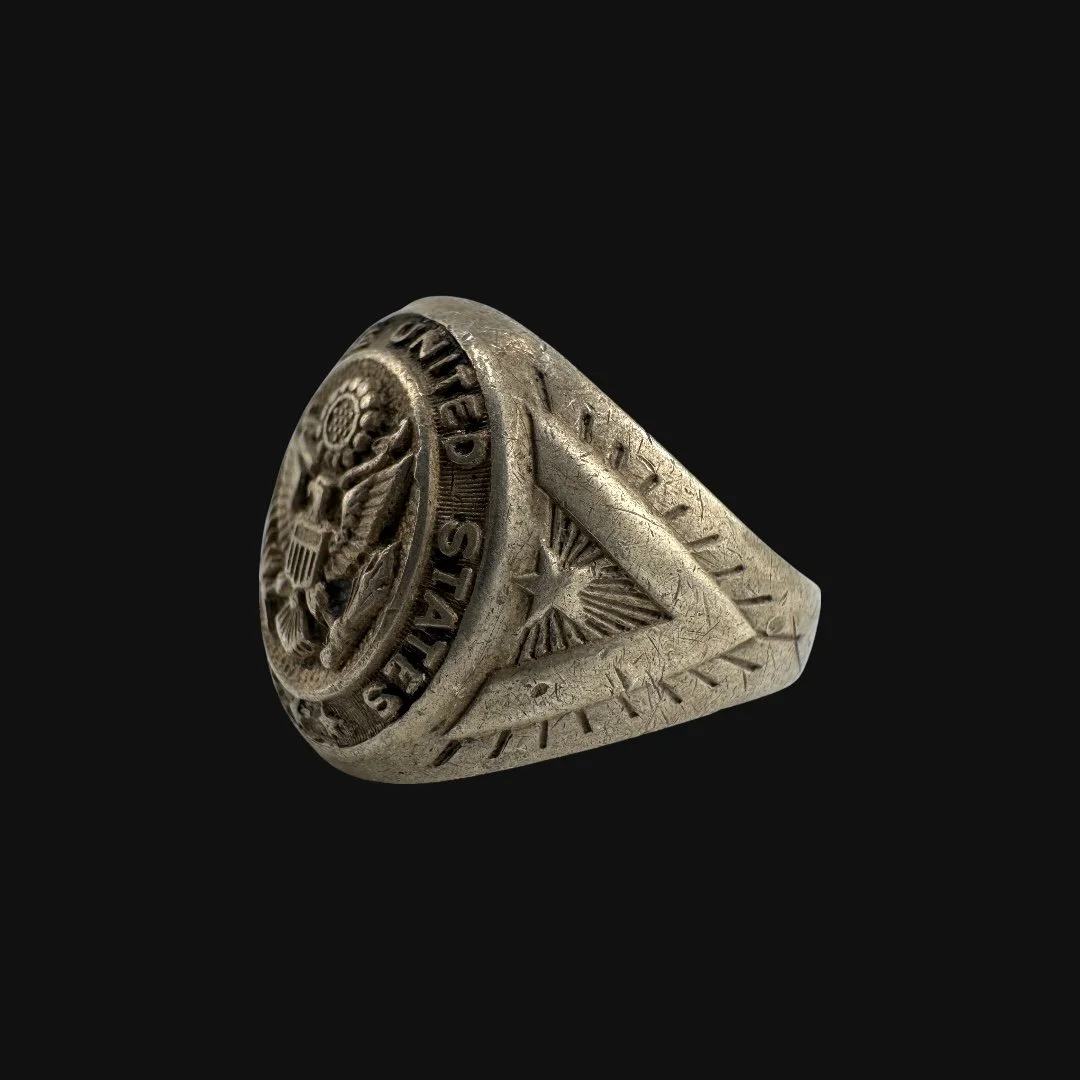 Image 11 of 12
Image 11 of 12

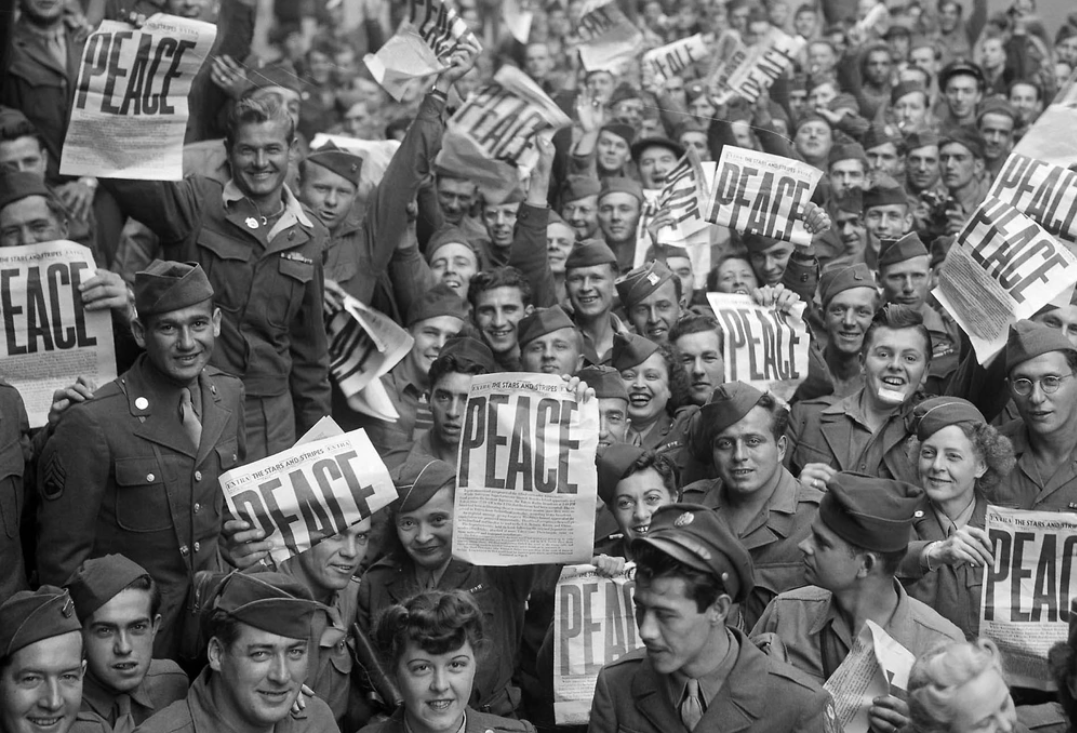 Image 12 of 12
Image 12 of 12













Original 1945 WWII United States Army “Victory Day Ring” Sterling Silver Ring (Size 10.25)
Comes with a hand-signed C.O.A. and a full historical research write-up
From: World War II
Branch: U.S. Army
Dated: 1945
Ring Size: 10.25 (US)
Material: Sterling Silver
Wearable History Collection:
This authentic 1945 WWII-era ring, preserved in its original and unaltered condition, combines exceptional craftsmanship with lasting durability, making it fully suitable for modern wear today. As part of our exclusive World War II “Wearable History Ring Collection,” it offers the rare opportunity to own and wear a genuine piece of World War II. Both a timeless accessory and a tangible link to the past, this truly one-of-a-kind ring stands as a wearable tribute to the courage and sacrifice of a generation.
Historical Significance to the United States Army During World War II:
The United States Army in World War II grew from fewer than 190,000 active-duty soldiers in 1941 to over 8.3 million by 1945, transforming into a global force capable of sustained combat across multiple continents. Rapid mobilization, industrial production, and the Selective Service draft enabled the Army to field hundreds of divisions and specialized units, supported by armor, artillery, engineers, medics, and the Army Air Forces. It fought in both the European and Pacific theaters, conducting some of the war’s most famous operations.
The Army’s first major engagement came with Operation Torch in November 1942, landing in Morocco and Algeria to fight Vichy French and German forces. Success led to the Sicily invasion (Operation Husky)in July 1943 and the Italian campaign, culminating in the capture of Rome in June 1944. In Western Europe, Operation Overlord on June 6, 1944, saw U.S. forces storm Omaha and Utah Beaches, supported by the 82nd and 101st Airborne Divisions parachuting inland. The Normandy breakout liberated Paris and drove toward Germany, but the German counterattack at the Battle of the Bulge in December 1944 tested American endurance, with Bastogne’s defense becoming legendary. By March 1945, U.S. forces had crossed the Rhine, advanced deep into Germany, and met Soviet troops on the Elbe.
In the Pacific, the Army fought a grueling island-hopping campaign under General Douglas MacArthur, reclaiming New Guinea, the Philippines, and key islands like Okinawa. Early losses such as Bataan gave way to decisive victories, including the liberation of Manila and the massive Battle of Leyte Gulf. The Army also endured fierce fighting in the Marianas, Palau, and countless smaller islands, facing both brutal combat and extreme environmental challenges.
Specialized branches played key roles: the Army Air Forces bombed enemy industry and infrastructure, the Corps of Engineers built critical infrastructure under fire, and medical units revolutionized battlefield care. Intelligence units, including the “Ghost Army,” used deception to mislead enemy forces, while logistical operations sustained campaigns across vast distances.
Victory in Europe (V-E Day, May 8, 1945) marked the defeat of Nazi Germany and the Army’s transition to occupation duties. Victory over Japan (V-J Day, September 2, 1945) ended the war entirely, validating years of sacrifice and effort. These victories symbolized the Army’s ability to project force globally, execute complex operations, and overcome two of history’s most powerful adversaries. From North Africa to Normandy, the Ardennes to the Pacific islands, the U.S. Army’s World War II record remains a defining chapter in American and world history.
The Legacy Within This Ring:
This authentic 1945 World War II-era Army of the United States victory ring, crafted in sterling silver, was worn by a soldier to commemorate the hard-fought triumph over the Axis powers. Bearing the proud “U.S. Army” insignia on its face and detailed side engravings symbolizing honor and perseverance, it served as far more than a piece of jewelry it was a personal emblem of service, forged in the crucible of war and carrying the memories of campaigns from North Africa to Normandy, the Ardennes, and the Pacific. Marking the momentous victories of V-E Day and V-J Day, this ring embodied the pride, sacrifice, and unity of the soldiers who carried the United States to victory, and today it endures as a preserved piece of wearable Army heritage from the greatest conflict of the 20th century.
Comes with a hand-signed C.O.A. and a full historical research write-up
From: World War II
Branch: U.S. Army
Dated: 1945
Ring Size: 10.25 (US)
Material: Sterling Silver
Wearable History Collection:
This authentic 1945 WWII-era ring, preserved in its original and unaltered condition, combines exceptional craftsmanship with lasting durability, making it fully suitable for modern wear today. As part of our exclusive World War II “Wearable History Ring Collection,” it offers the rare opportunity to own and wear a genuine piece of World War II. Both a timeless accessory and a tangible link to the past, this truly one-of-a-kind ring stands as a wearable tribute to the courage and sacrifice of a generation.
Historical Significance to the United States Army During World War II:
The United States Army in World War II grew from fewer than 190,000 active-duty soldiers in 1941 to over 8.3 million by 1945, transforming into a global force capable of sustained combat across multiple continents. Rapid mobilization, industrial production, and the Selective Service draft enabled the Army to field hundreds of divisions and specialized units, supported by armor, artillery, engineers, medics, and the Army Air Forces. It fought in both the European and Pacific theaters, conducting some of the war’s most famous operations.
The Army’s first major engagement came with Operation Torch in November 1942, landing in Morocco and Algeria to fight Vichy French and German forces. Success led to the Sicily invasion (Operation Husky)in July 1943 and the Italian campaign, culminating in the capture of Rome in June 1944. In Western Europe, Operation Overlord on June 6, 1944, saw U.S. forces storm Omaha and Utah Beaches, supported by the 82nd and 101st Airborne Divisions parachuting inland. The Normandy breakout liberated Paris and drove toward Germany, but the German counterattack at the Battle of the Bulge in December 1944 tested American endurance, with Bastogne’s defense becoming legendary. By March 1945, U.S. forces had crossed the Rhine, advanced deep into Germany, and met Soviet troops on the Elbe.
In the Pacific, the Army fought a grueling island-hopping campaign under General Douglas MacArthur, reclaiming New Guinea, the Philippines, and key islands like Okinawa. Early losses such as Bataan gave way to decisive victories, including the liberation of Manila and the massive Battle of Leyte Gulf. The Army also endured fierce fighting in the Marianas, Palau, and countless smaller islands, facing both brutal combat and extreme environmental challenges.
Specialized branches played key roles: the Army Air Forces bombed enemy industry and infrastructure, the Corps of Engineers built critical infrastructure under fire, and medical units revolutionized battlefield care. Intelligence units, including the “Ghost Army,” used deception to mislead enemy forces, while logistical operations sustained campaigns across vast distances.
Victory in Europe (V-E Day, May 8, 1945) marked the defeat of Nazi Germany and the Army’s transition to occupation duties. Victory over Japan (V-J Day, September 2, 1945) ended the war entirely, validating years of sacrifice and effort. These victories symbolized the Army’s ability to project force globally, execute complex operations, and overcome two of history’s most powerful adversaries. From North Africa to Normandy, the Ardennes to the Pacific islands, the U.S. Army’s World War II record remains a defining chapter in American and world history.
The Legacy Within This Ring:
This authentic 1945 World War II-era Army of the United States victory ring, crafted in sterling silver, was worn by a soldier to commemorate the hard-fought triumph over the Axis powers. Bearing the proud “U.S. Army” insignia on its face and detailed side engravings symbolizing honor and perseverance, it served as far more than a piece of jewelry it was a personal emblem of service, forged in the crucible of war and carrying the memories of campaigns from North Africa to Normandy, the Ardennes, and the Pacific. Marking the momentous victories of V-E Day and V-J Day, this ring embodied the pride, sacrifice, and unity of the soldiers who carried the United States to victory, and today it endures as a preserved piece of wearable Army heritage from the greatest conflict of the 20th century.
